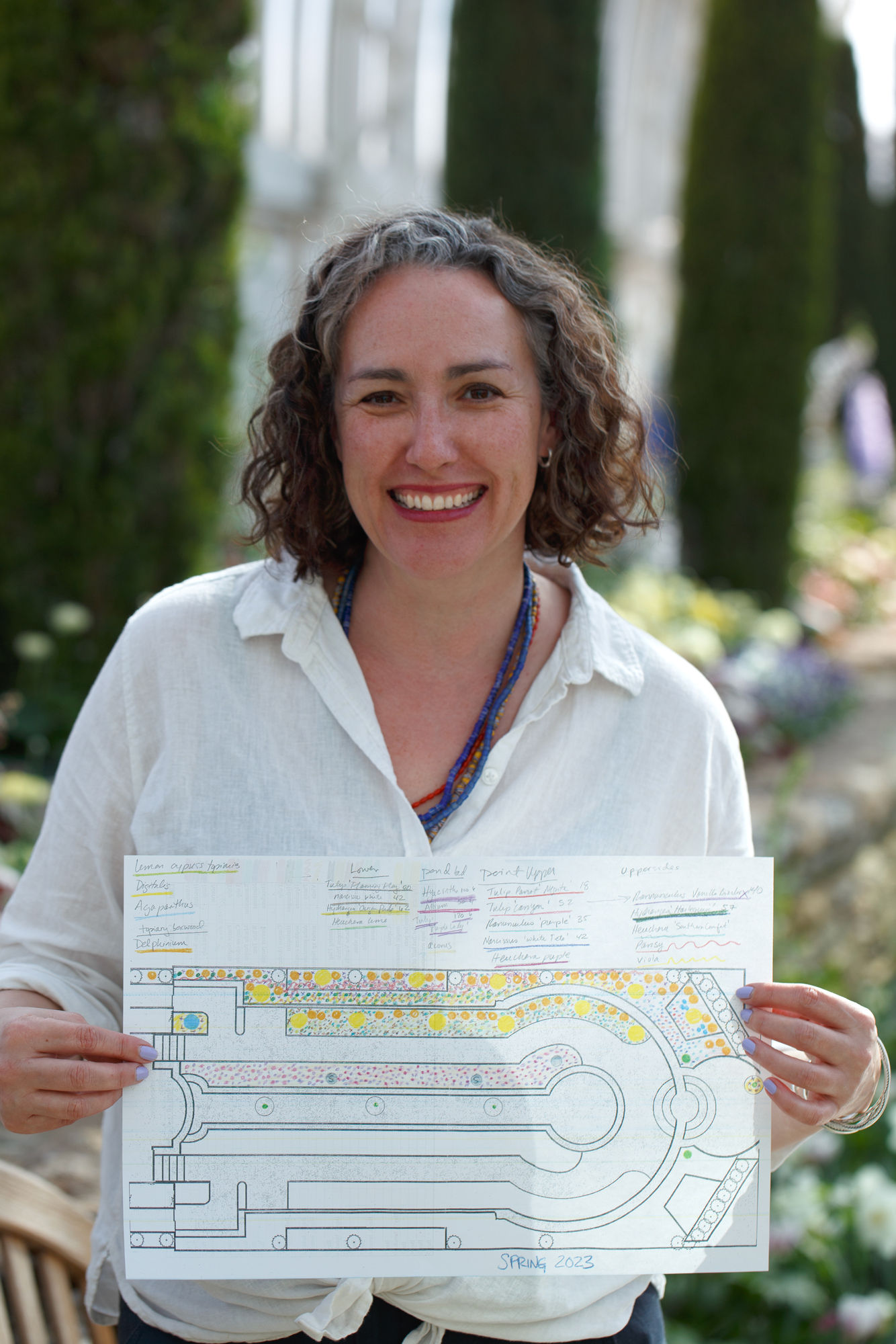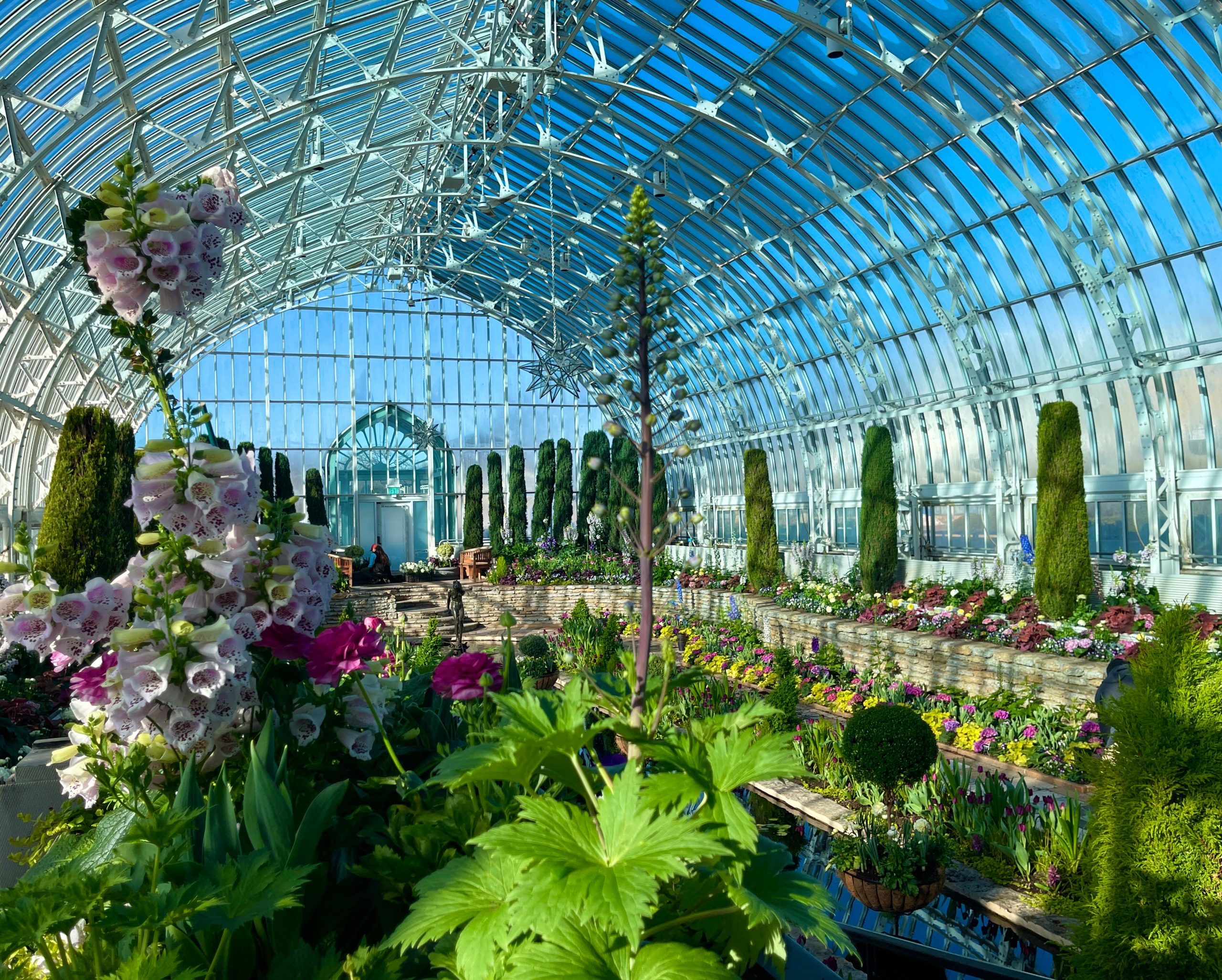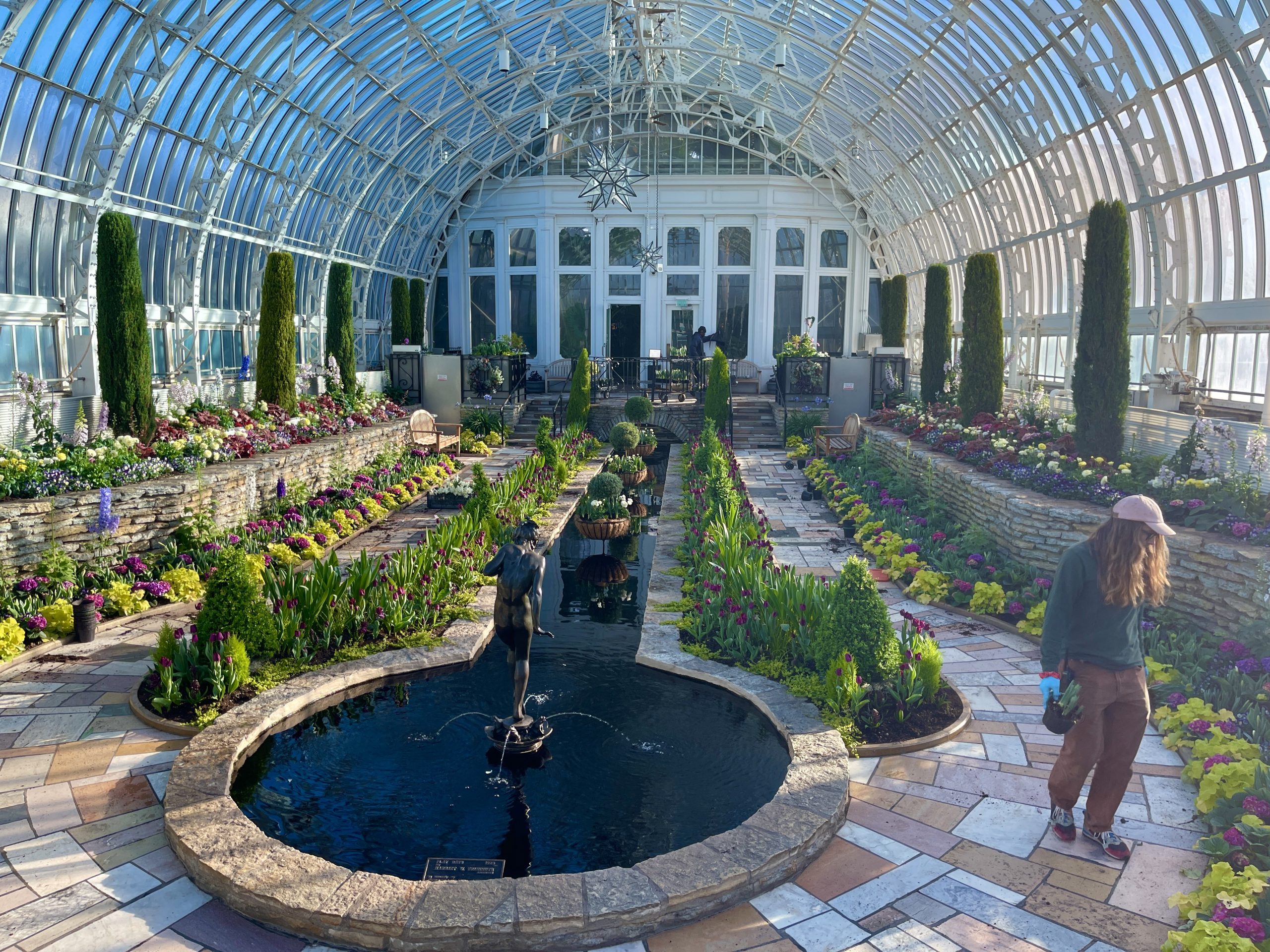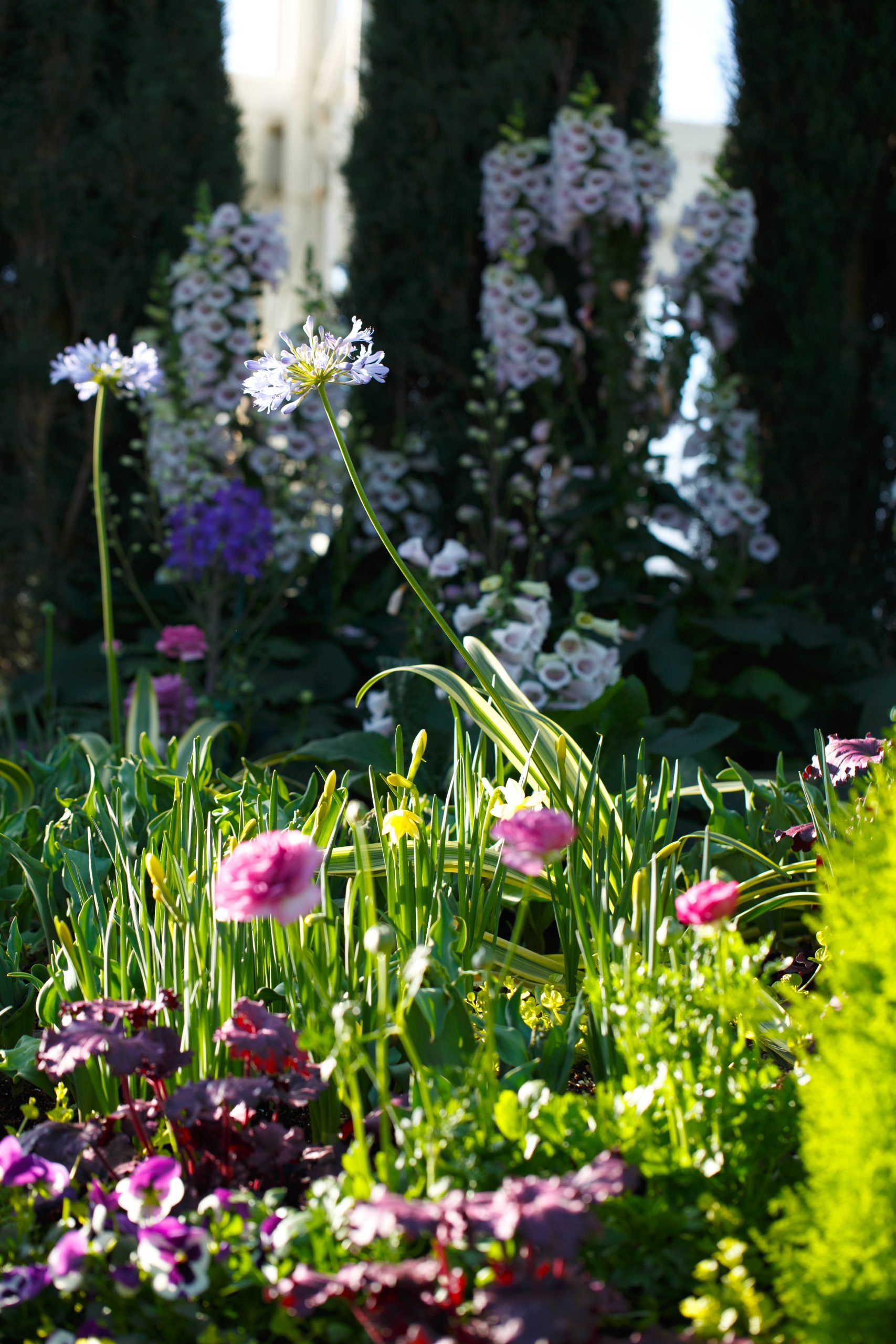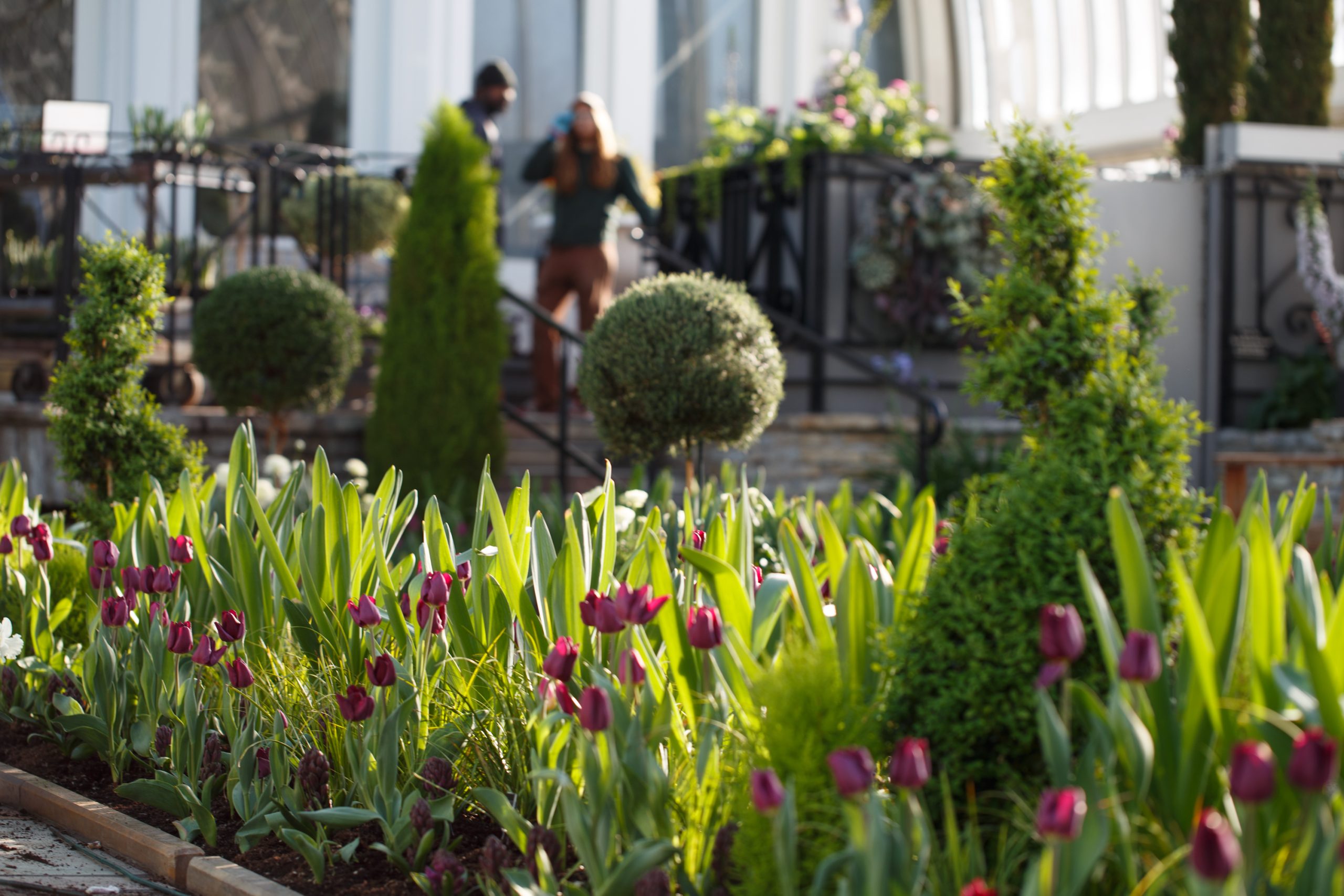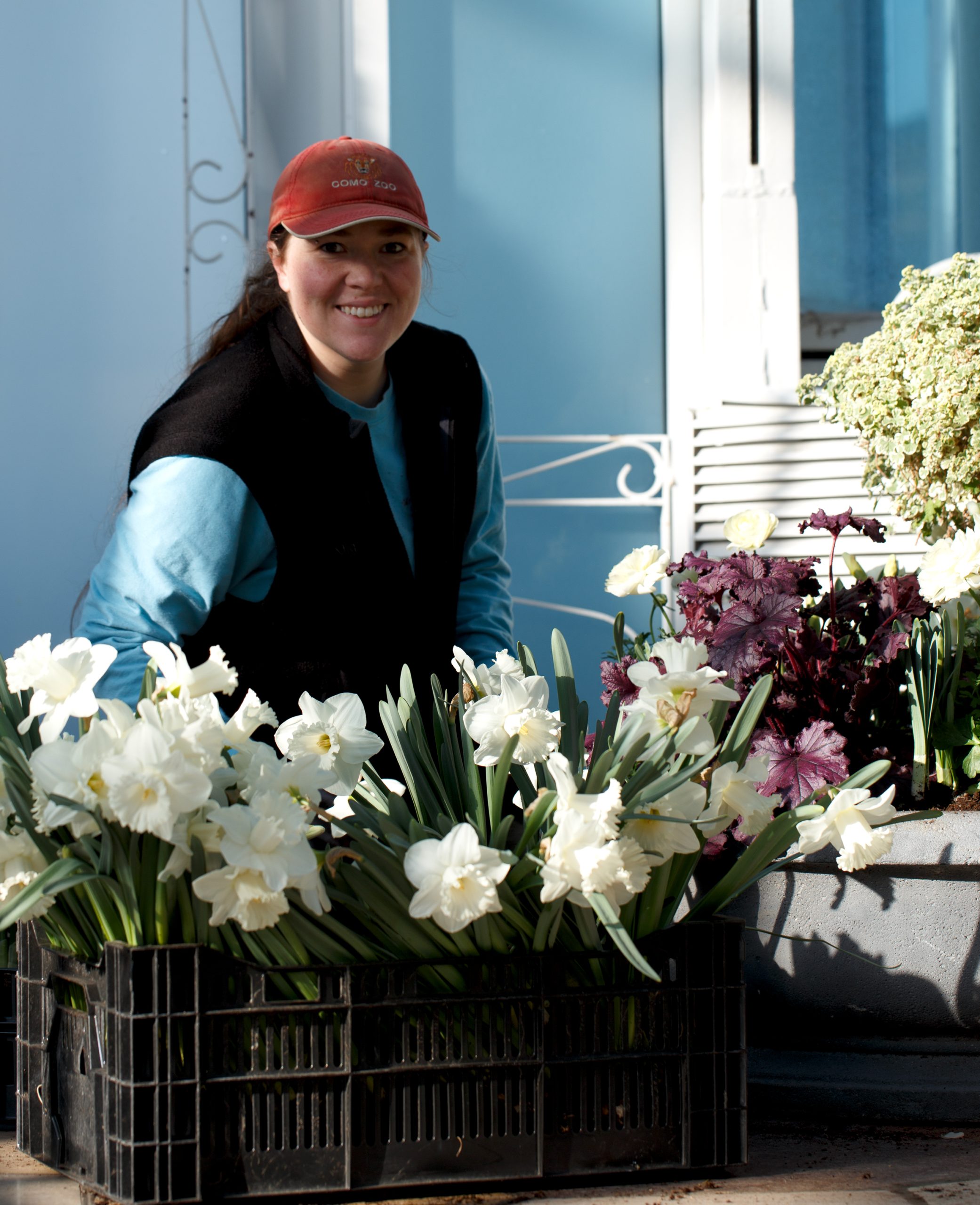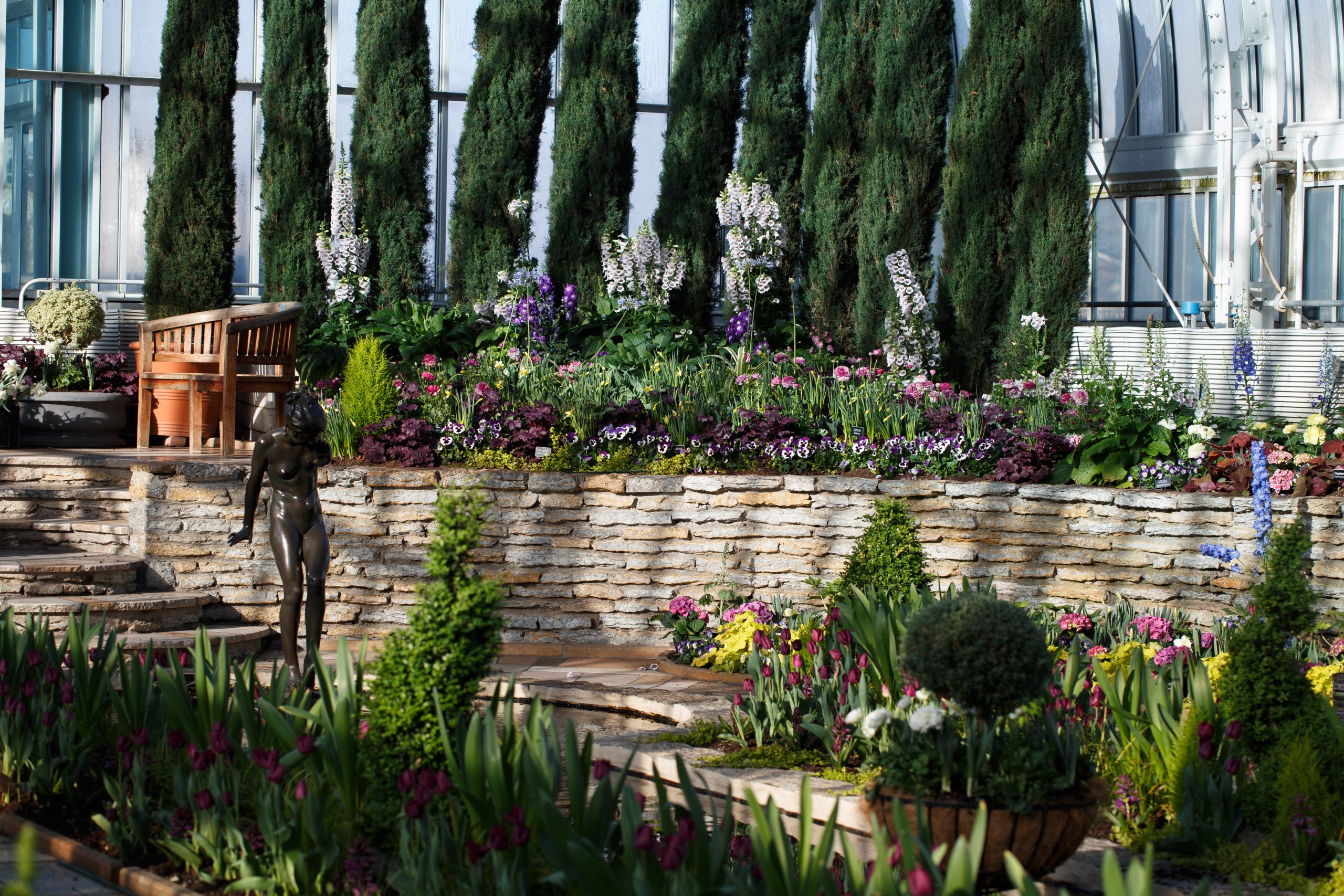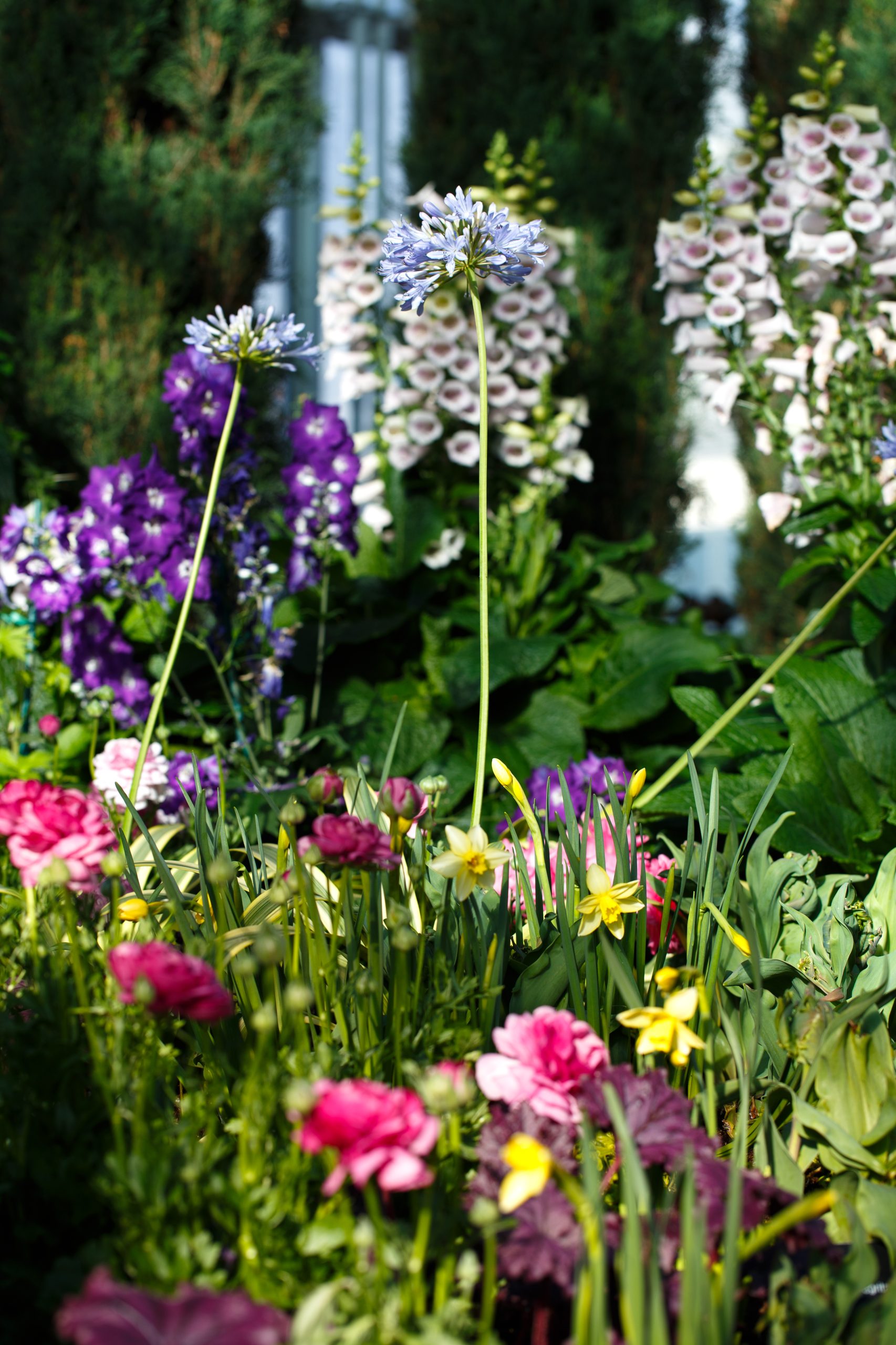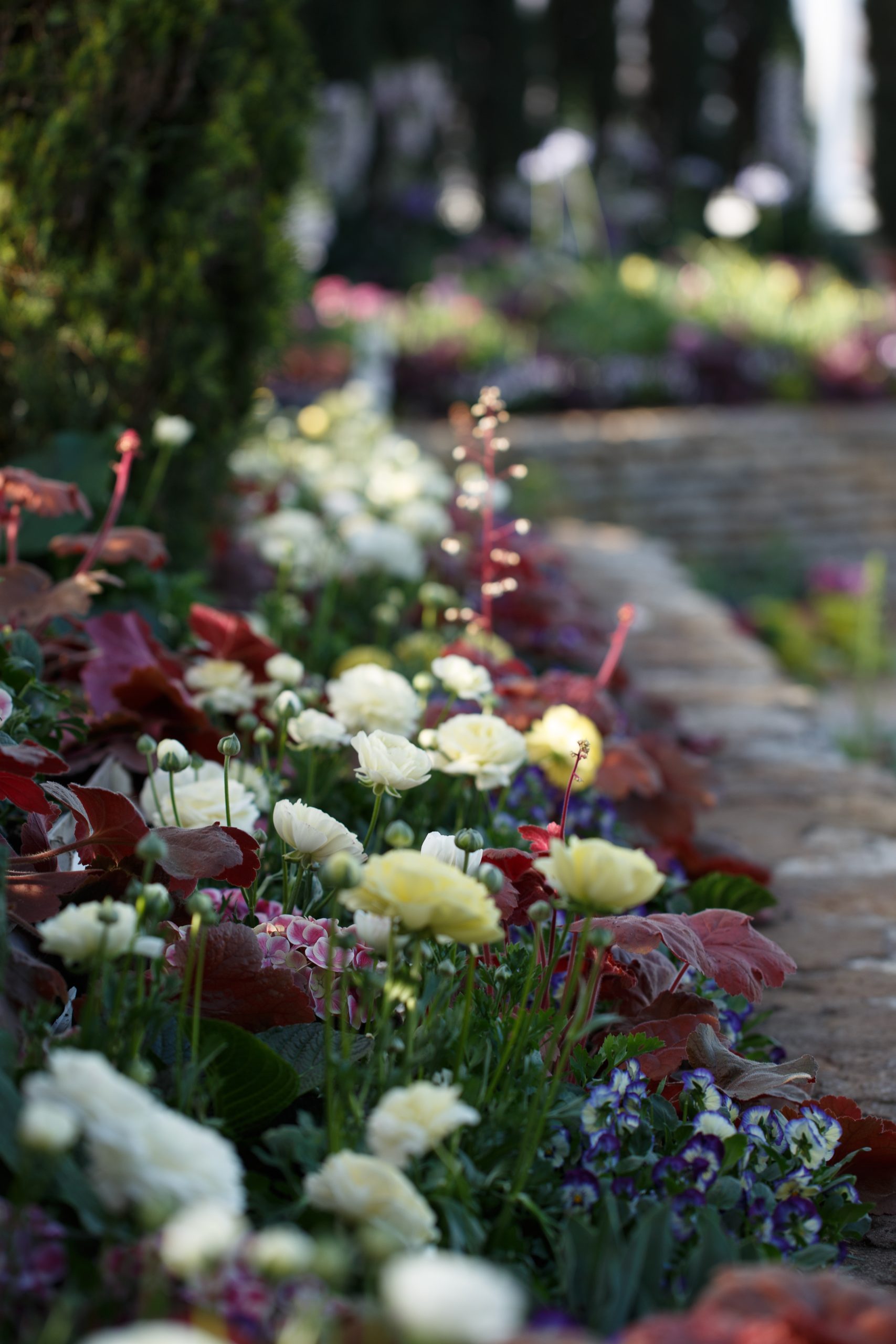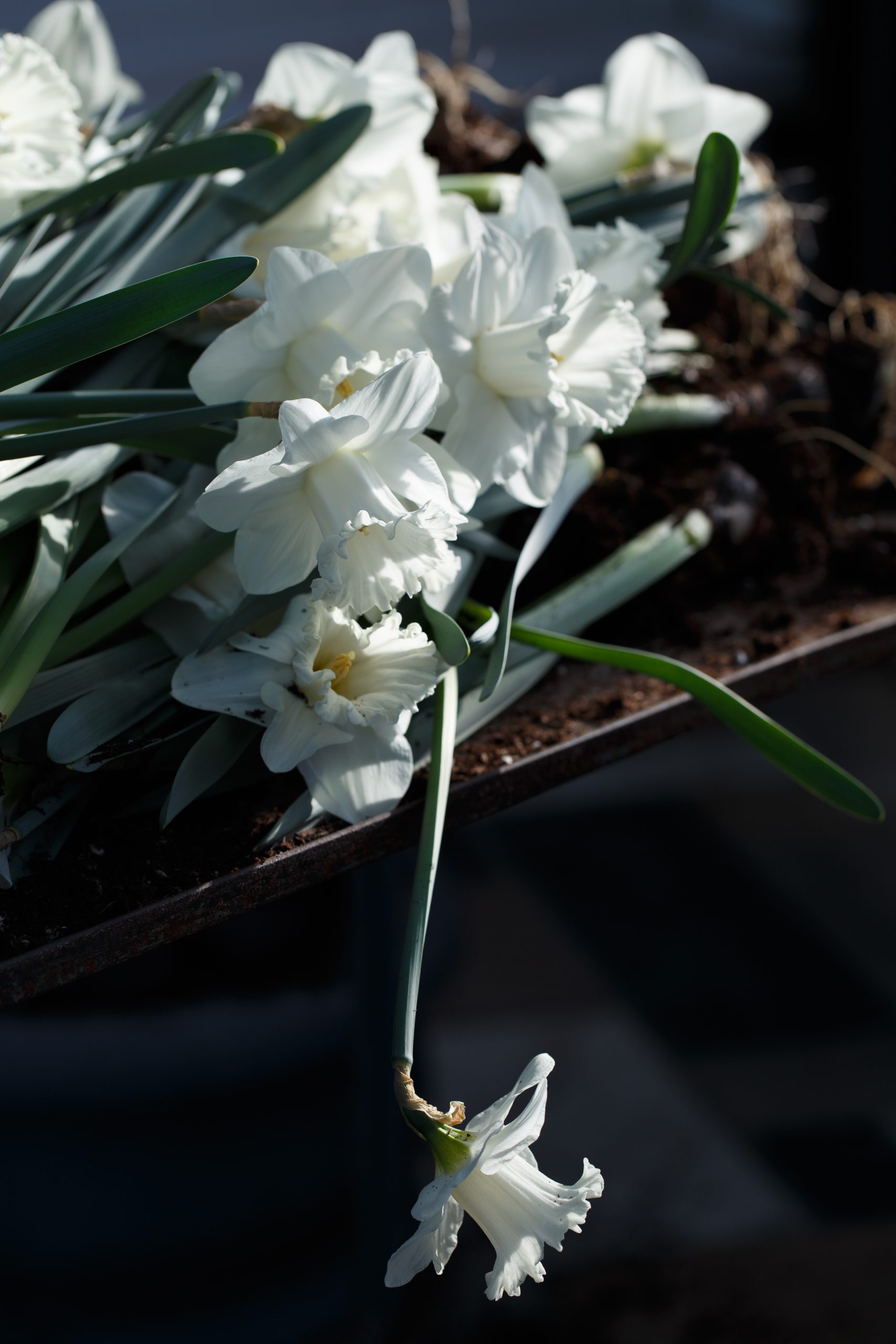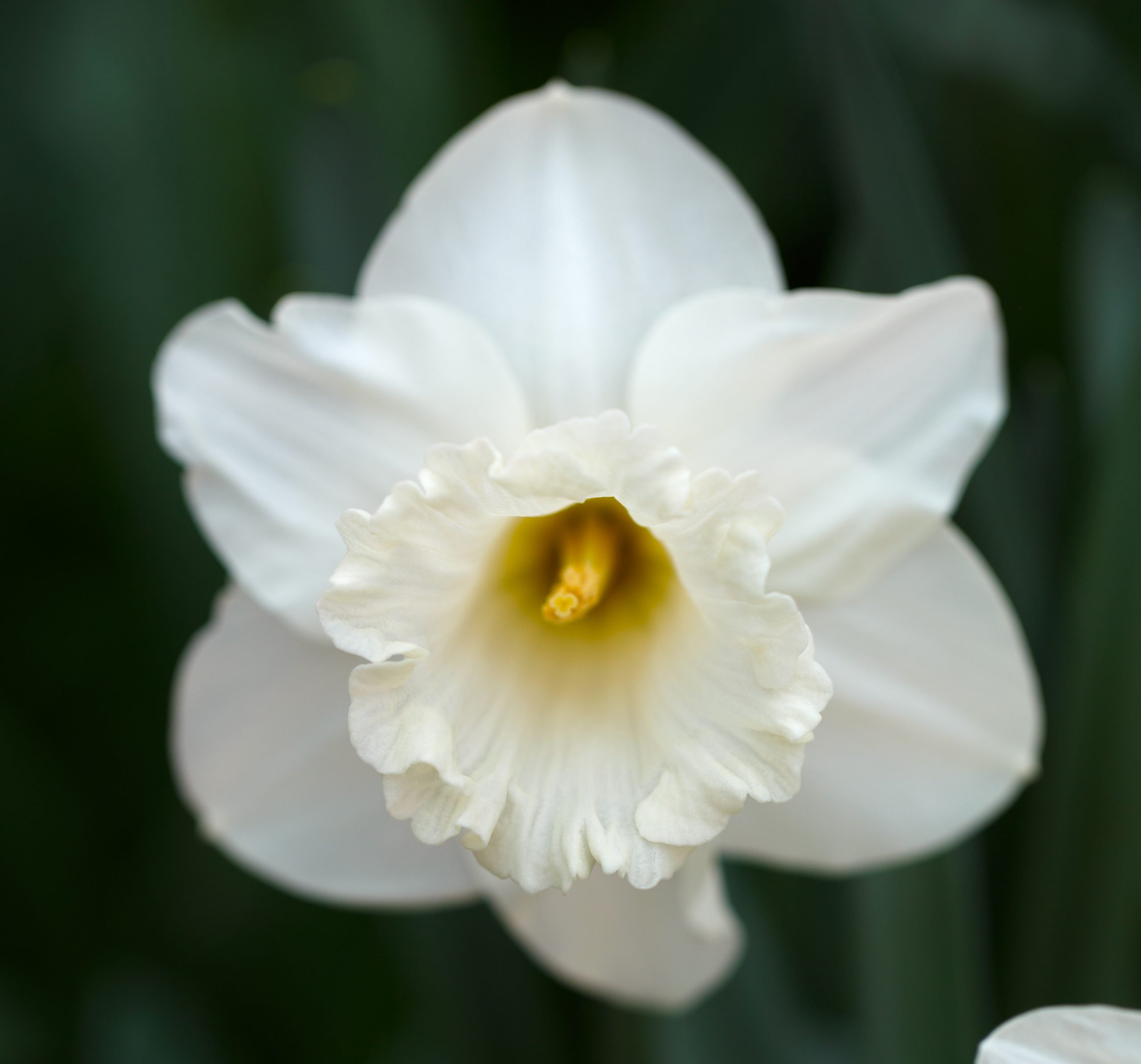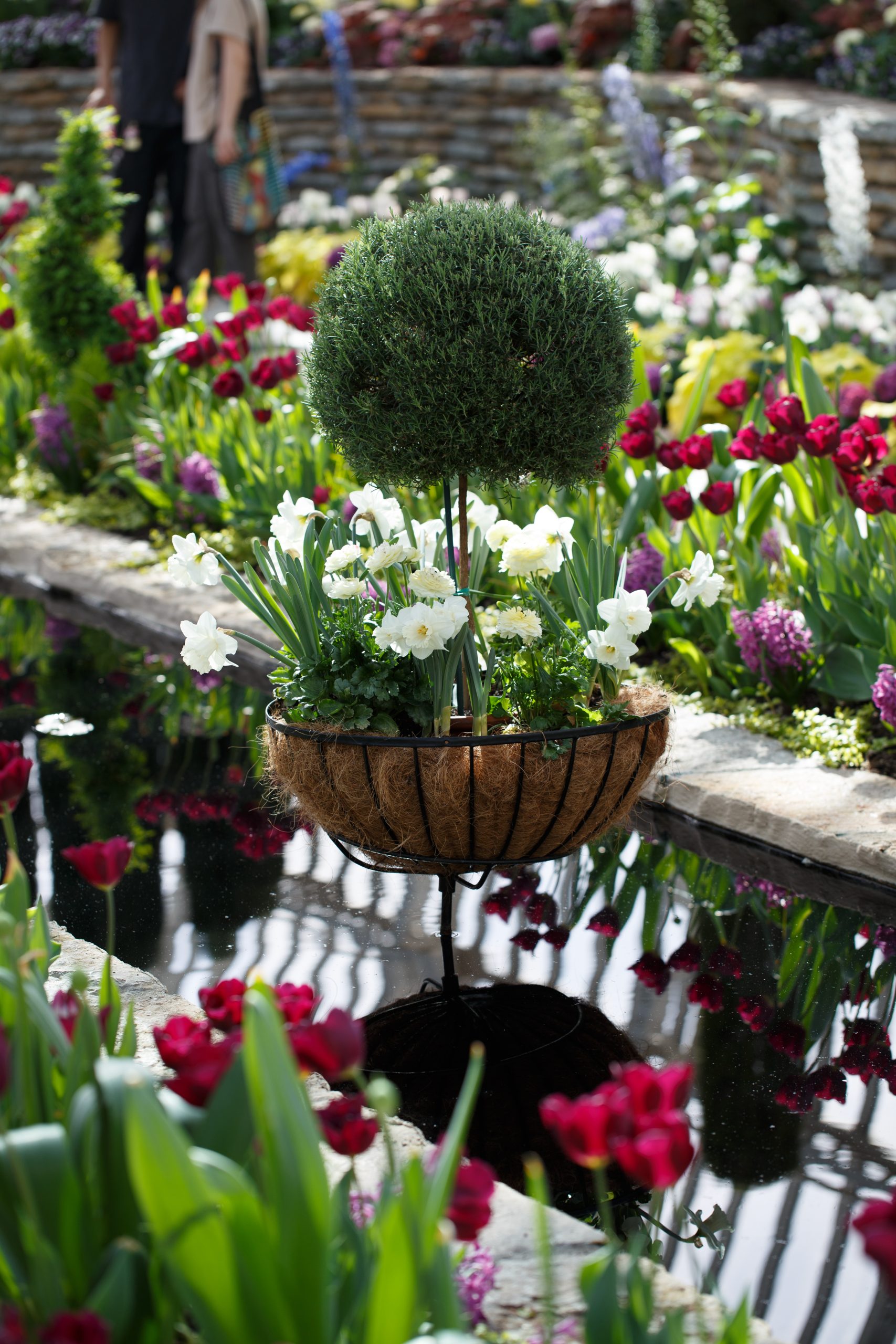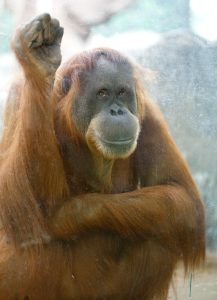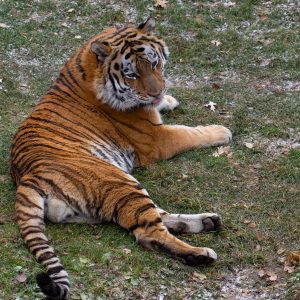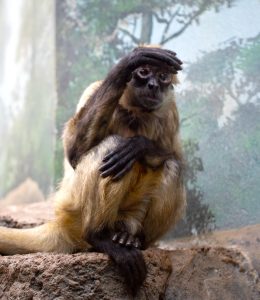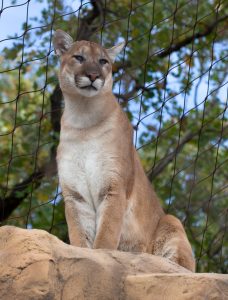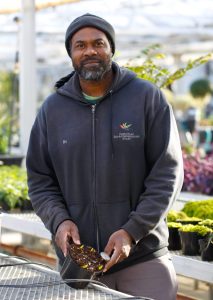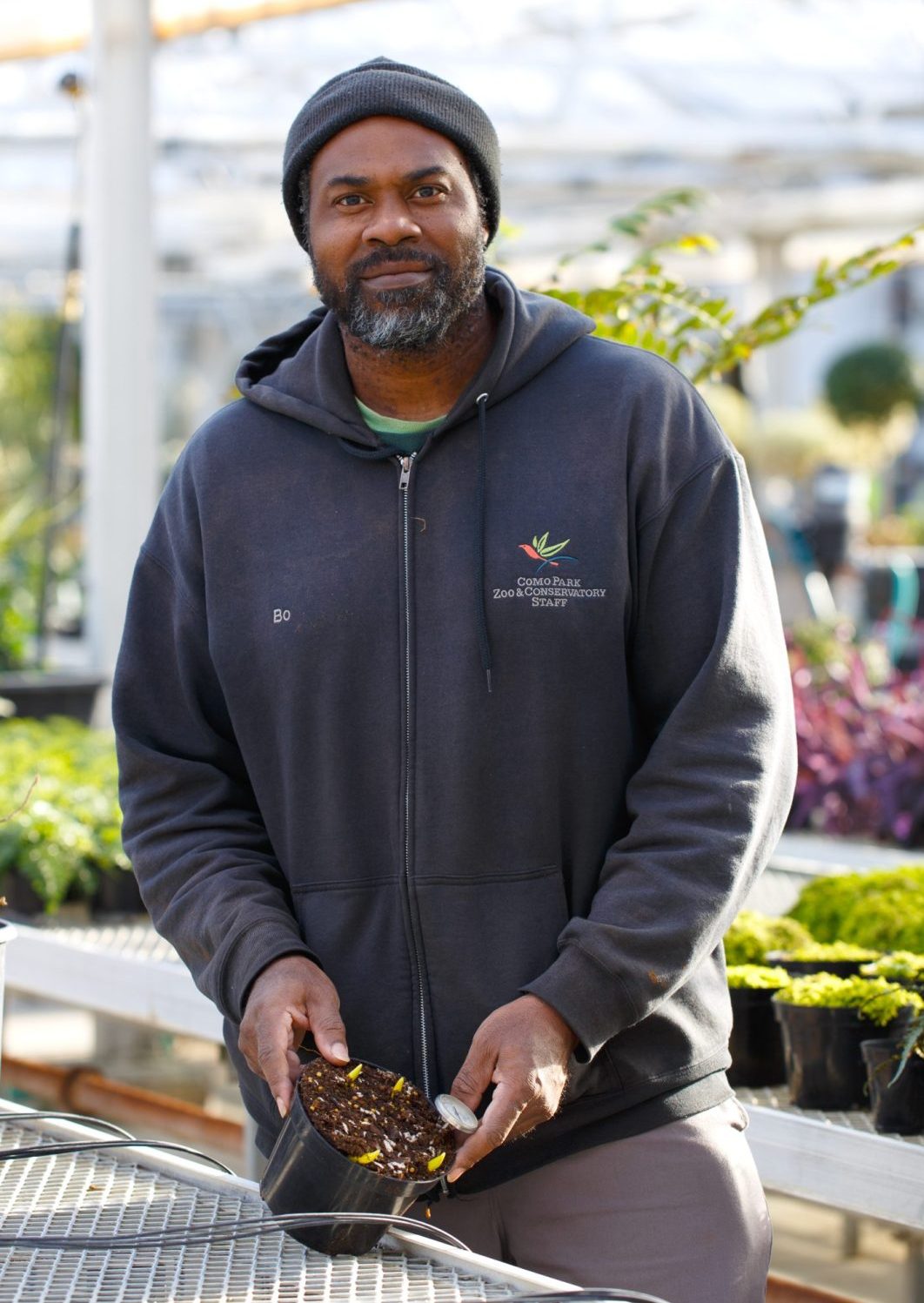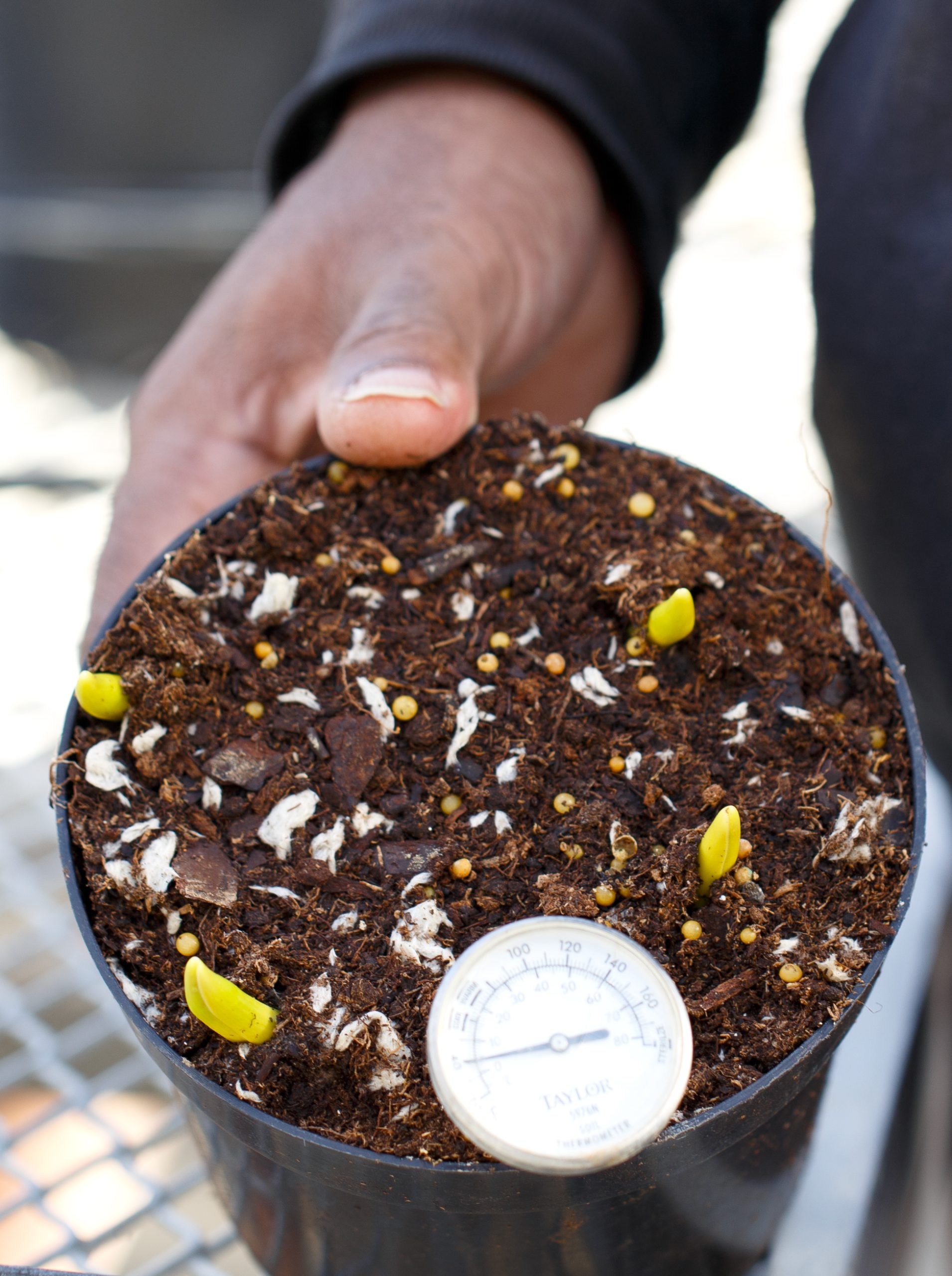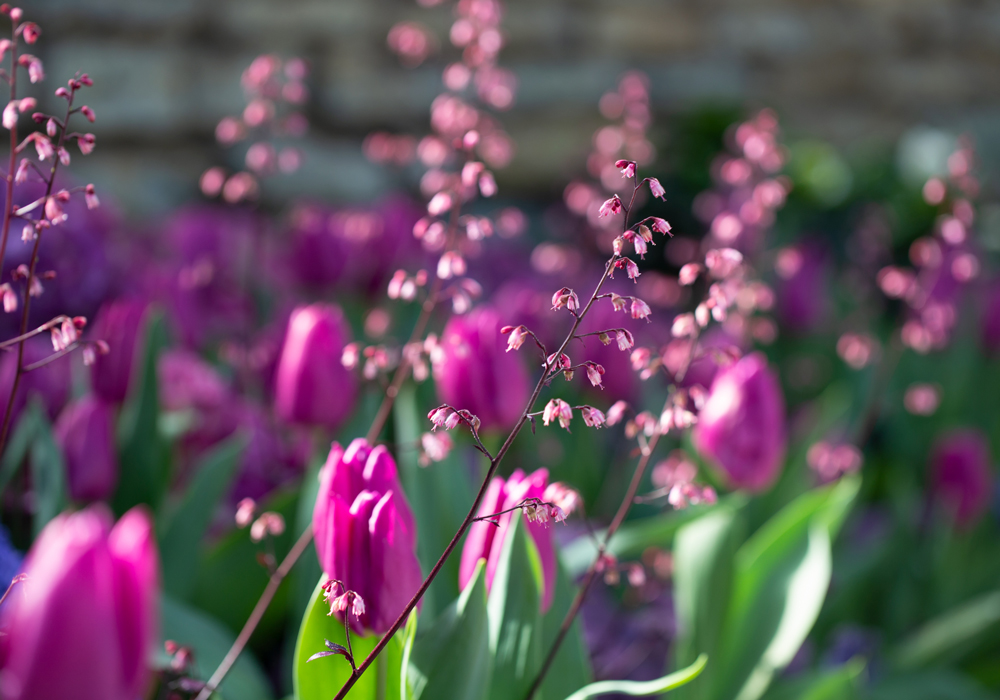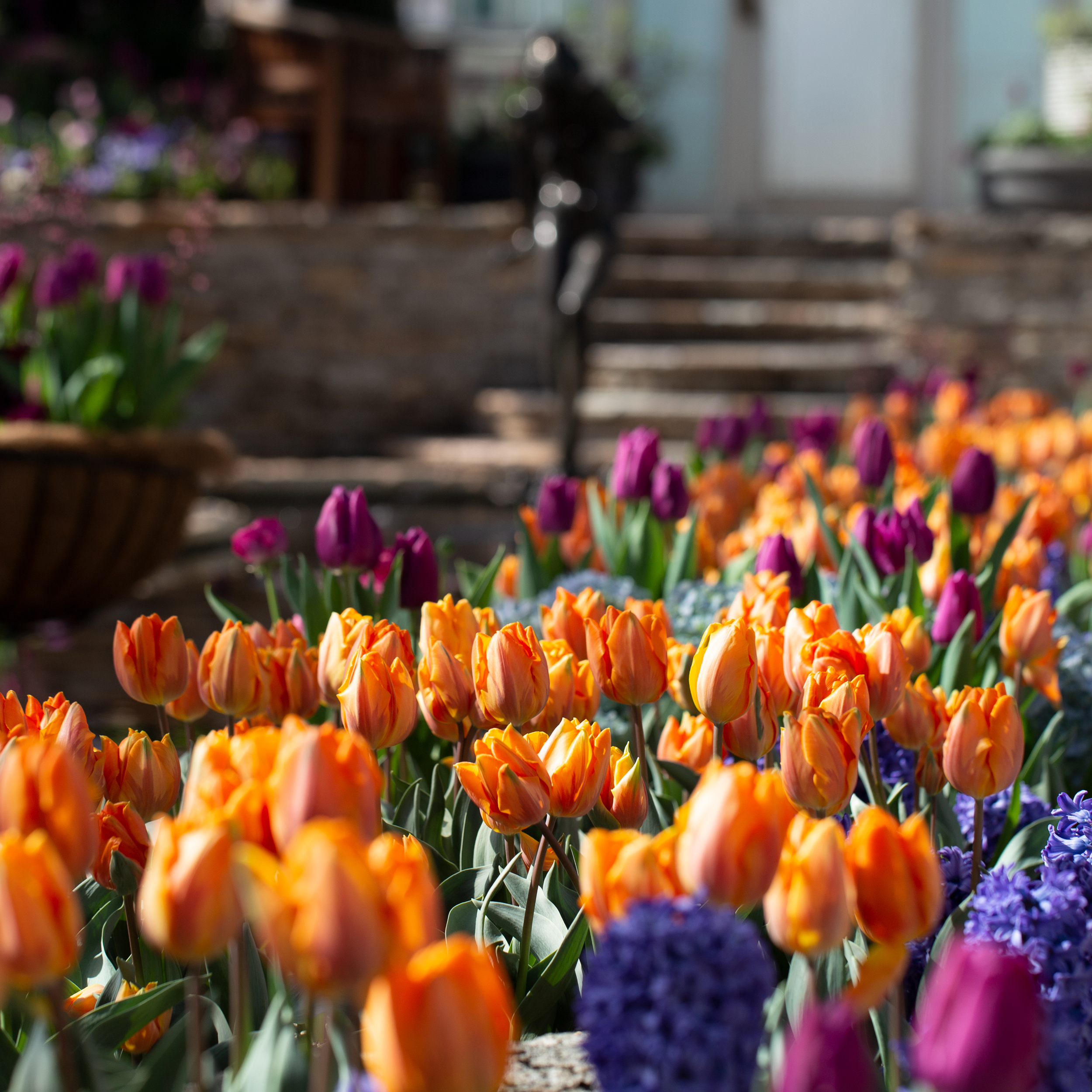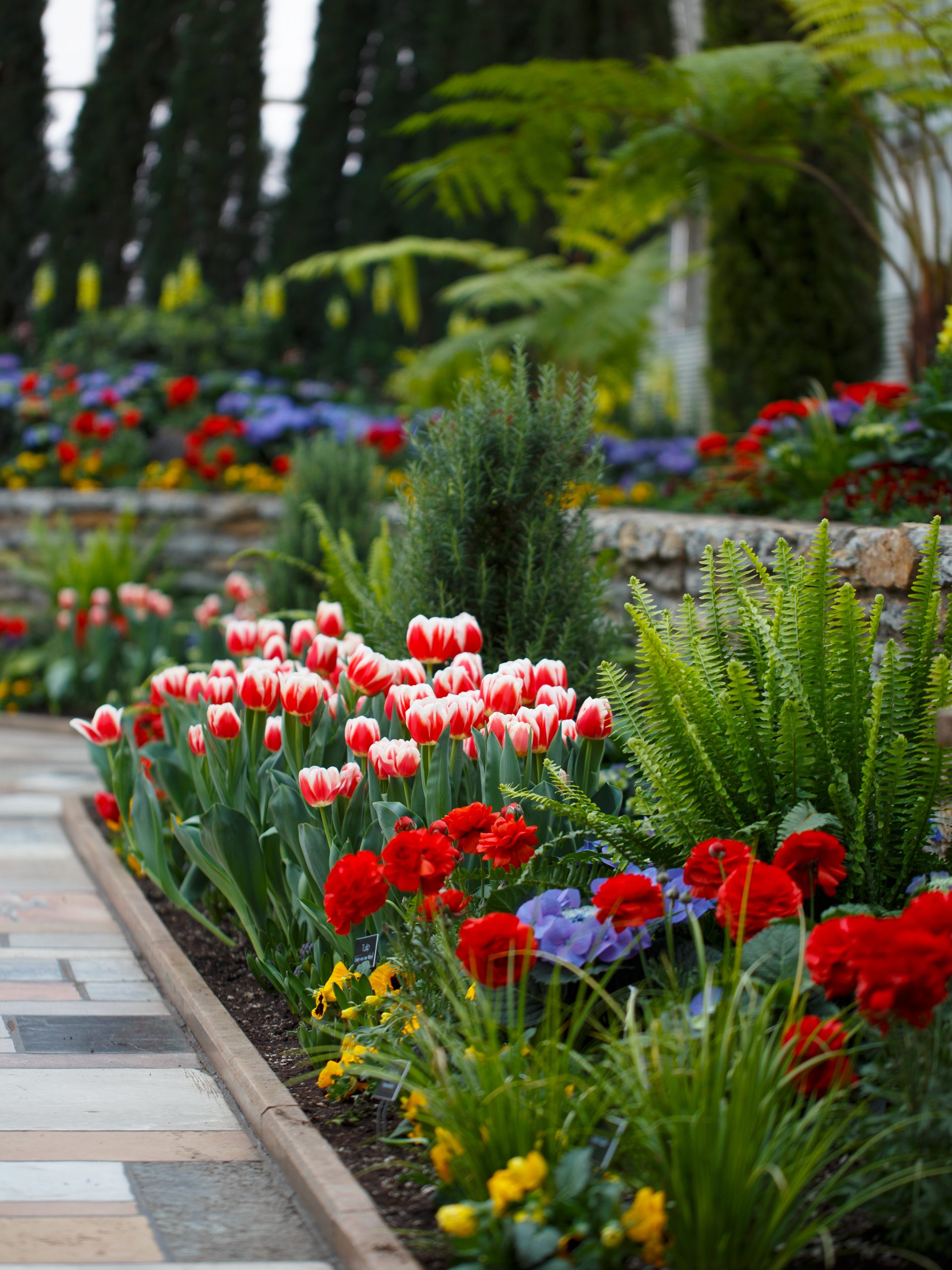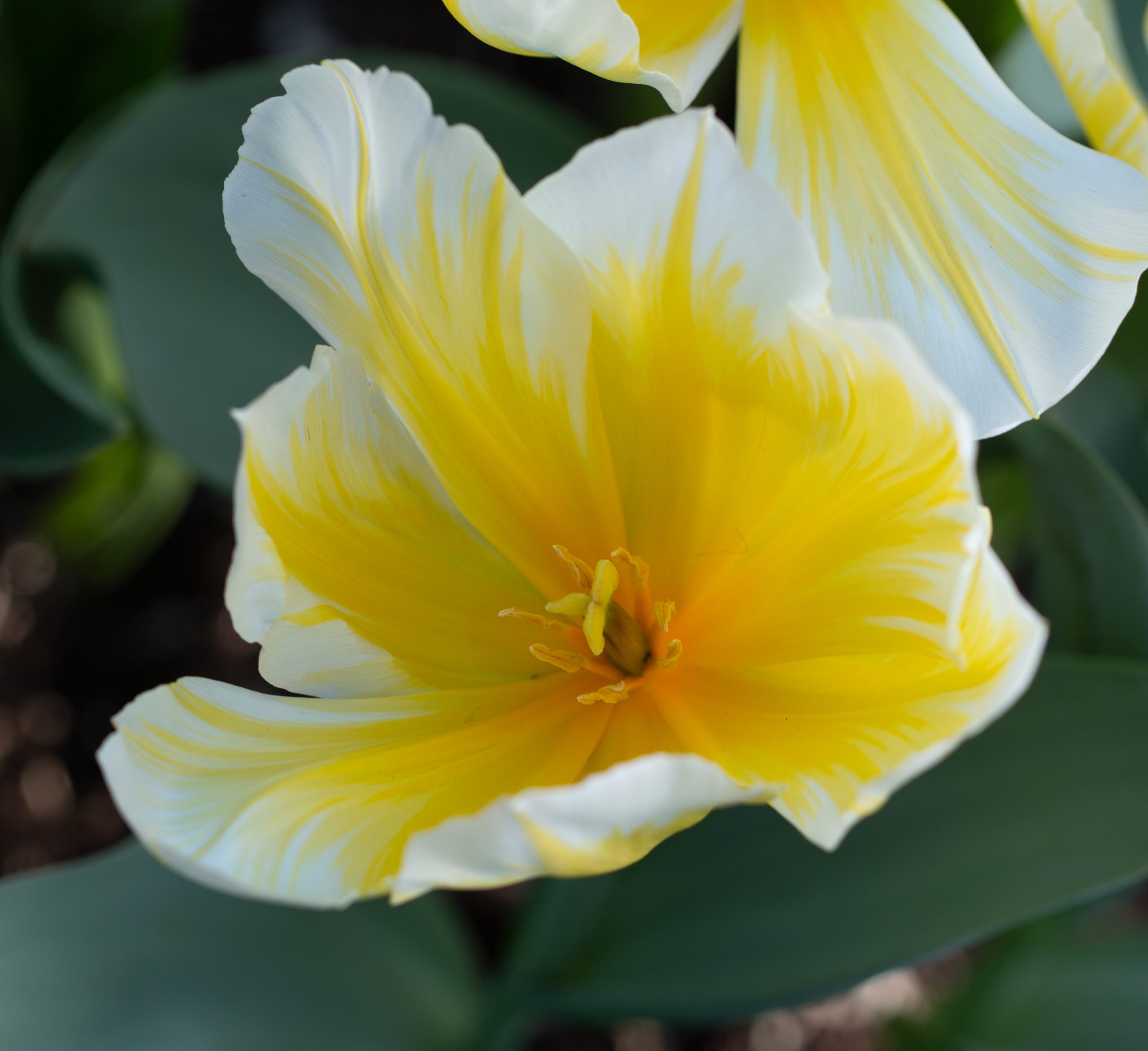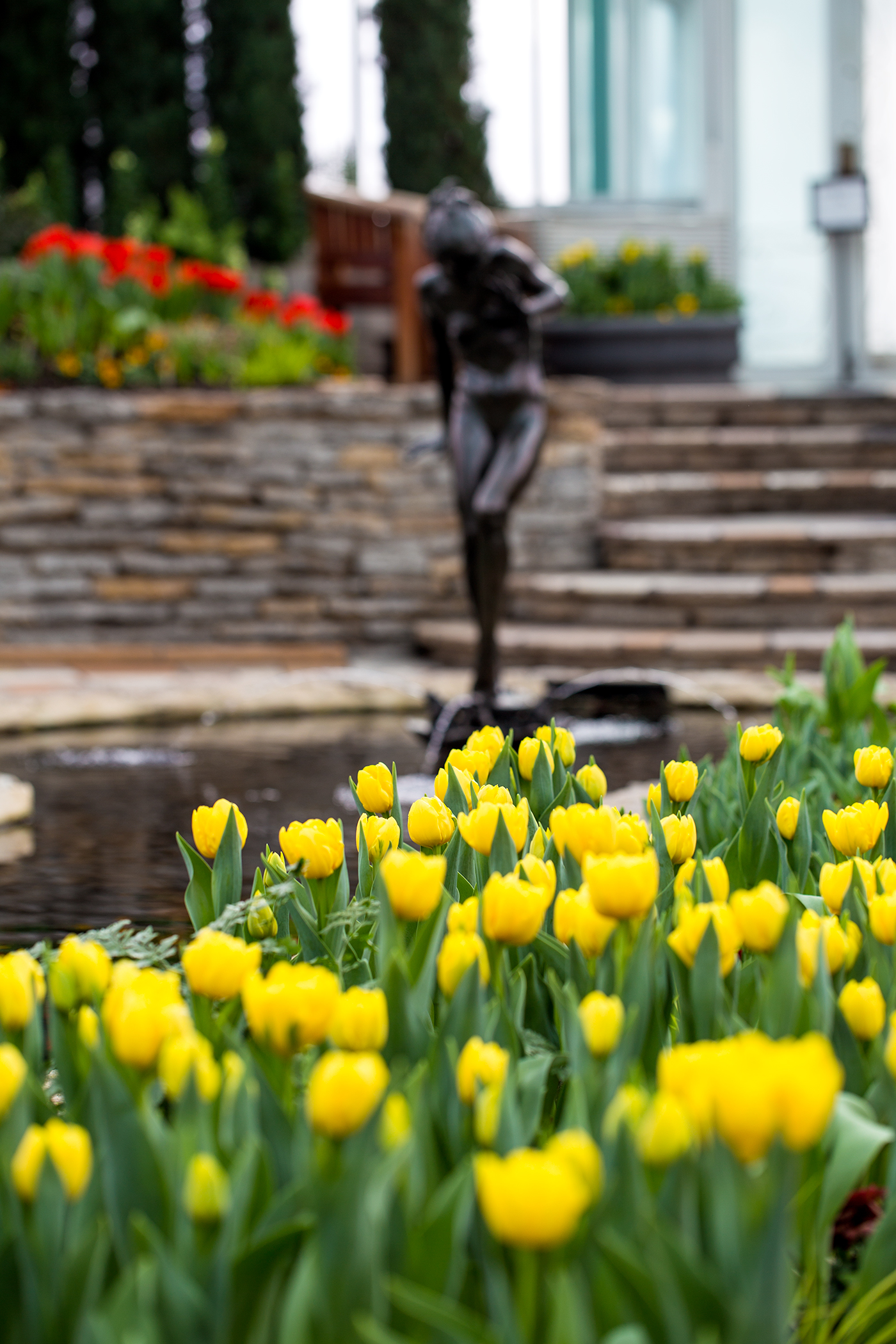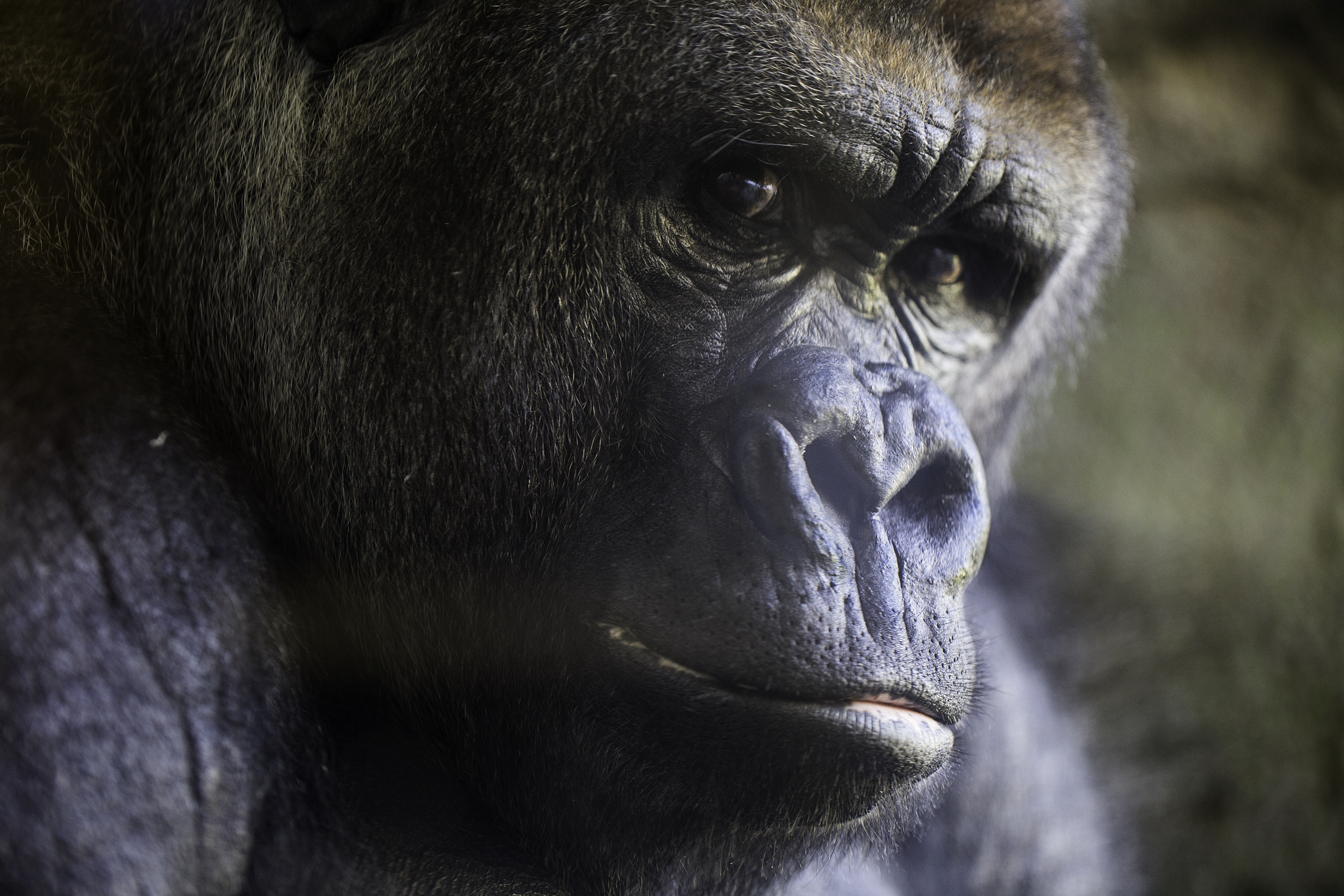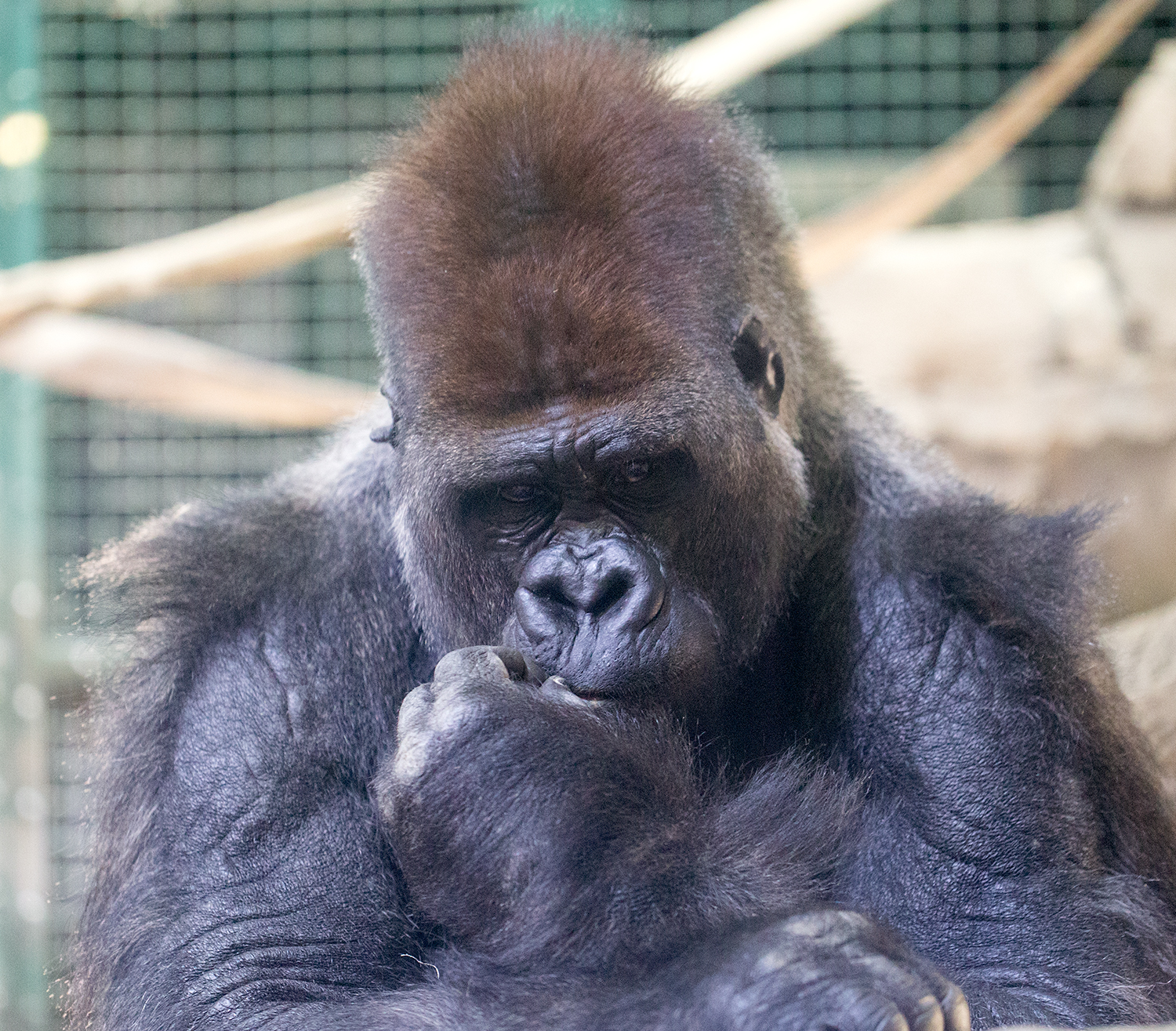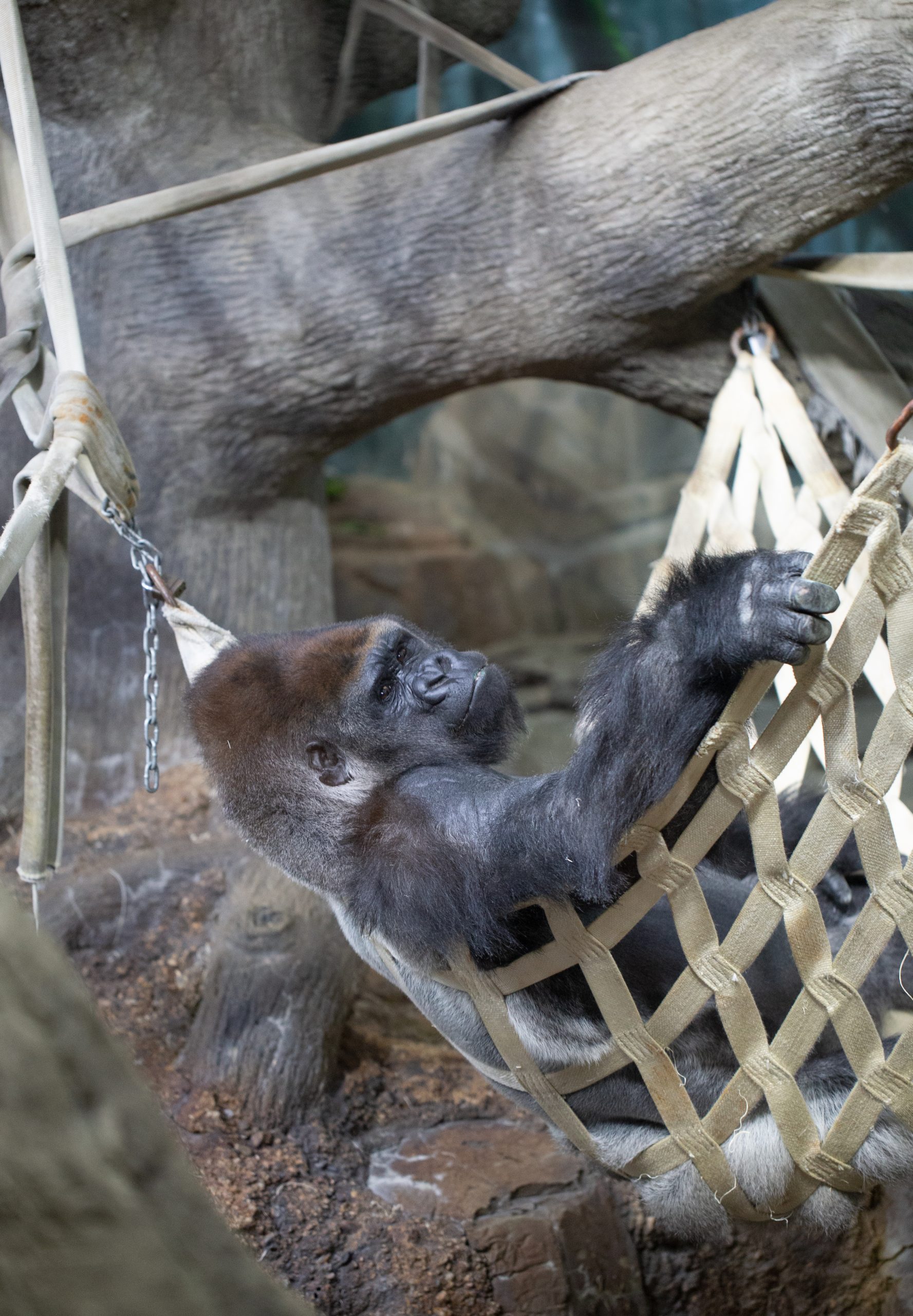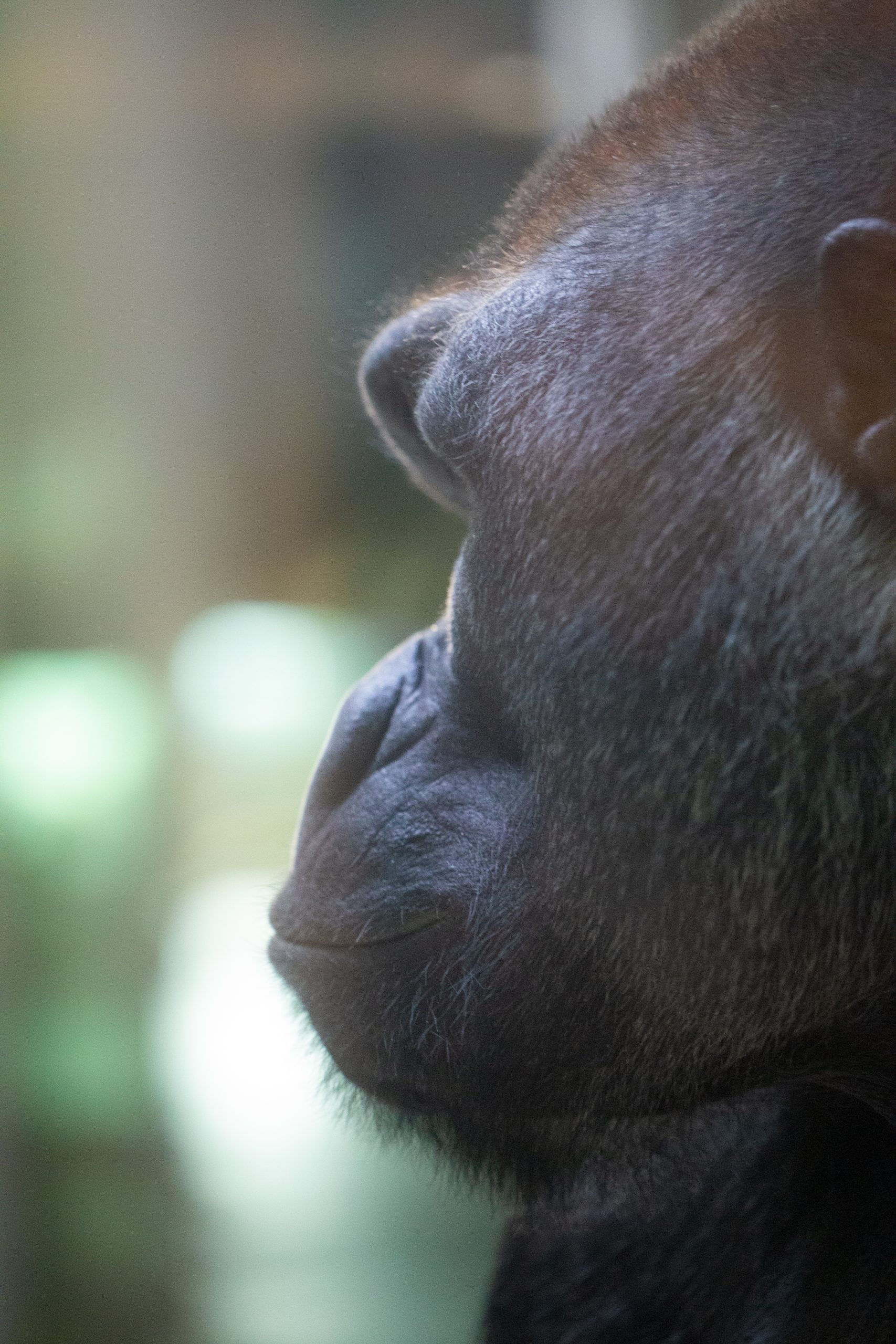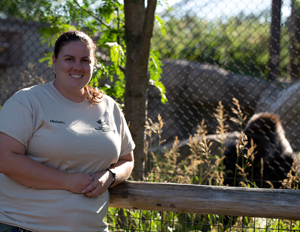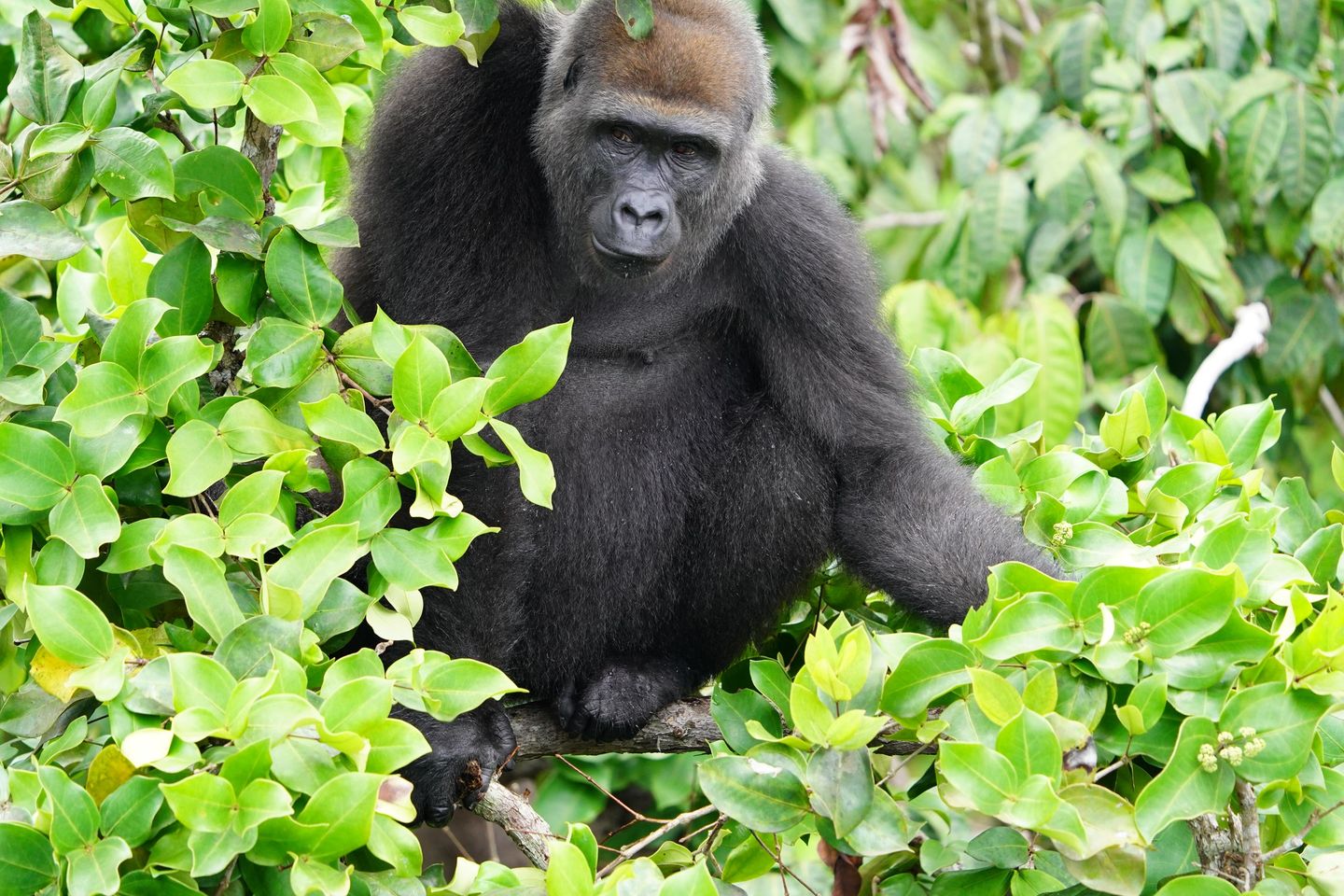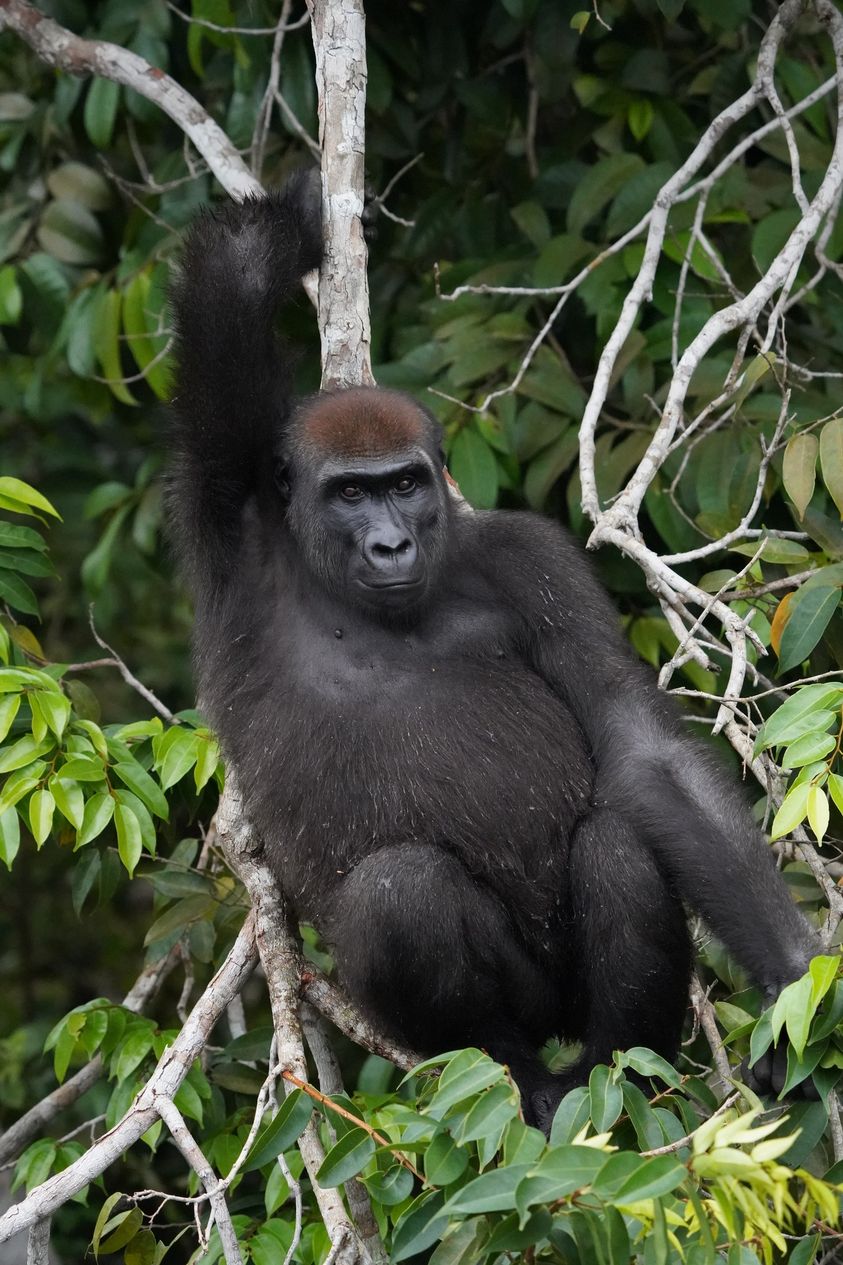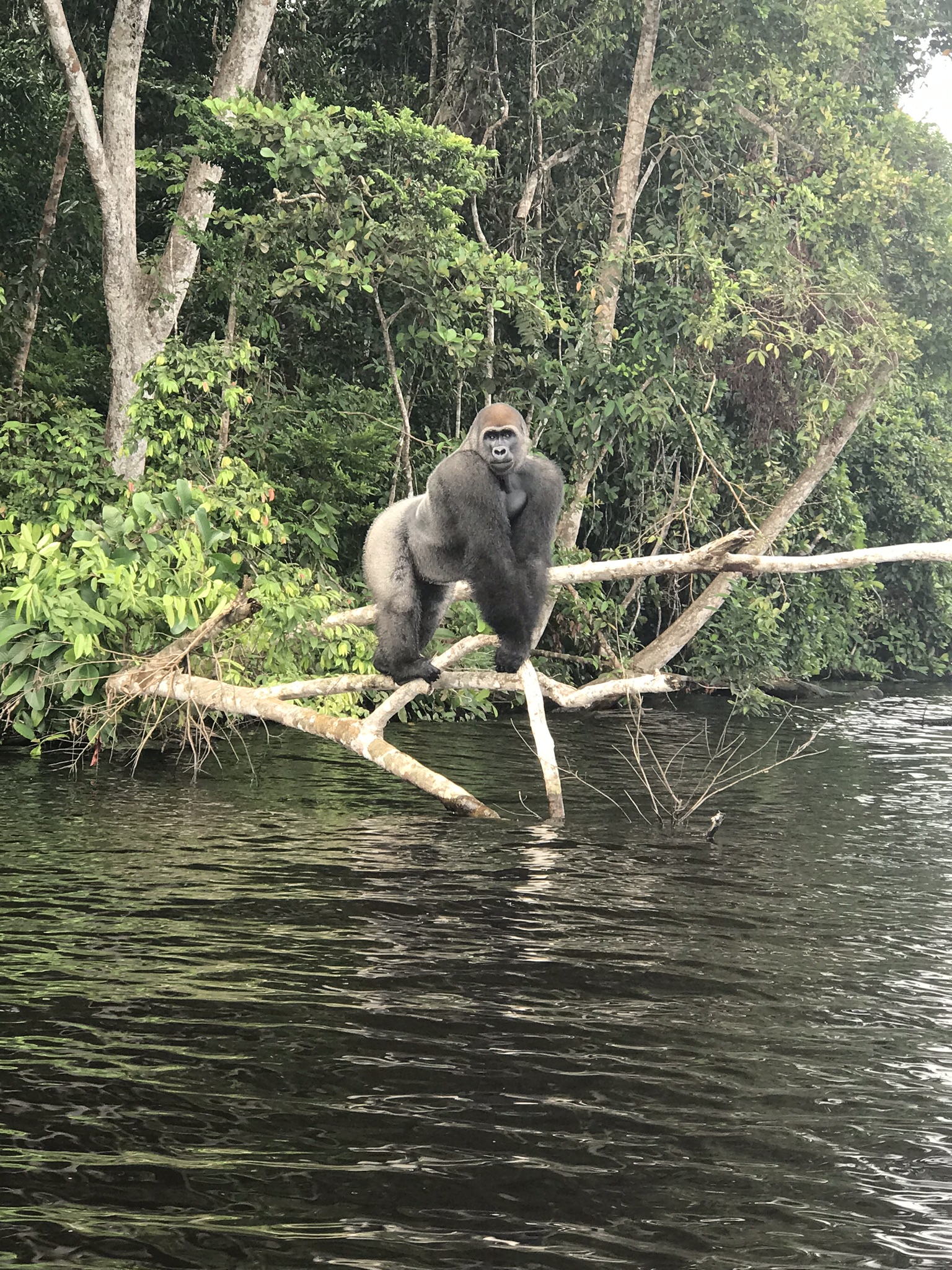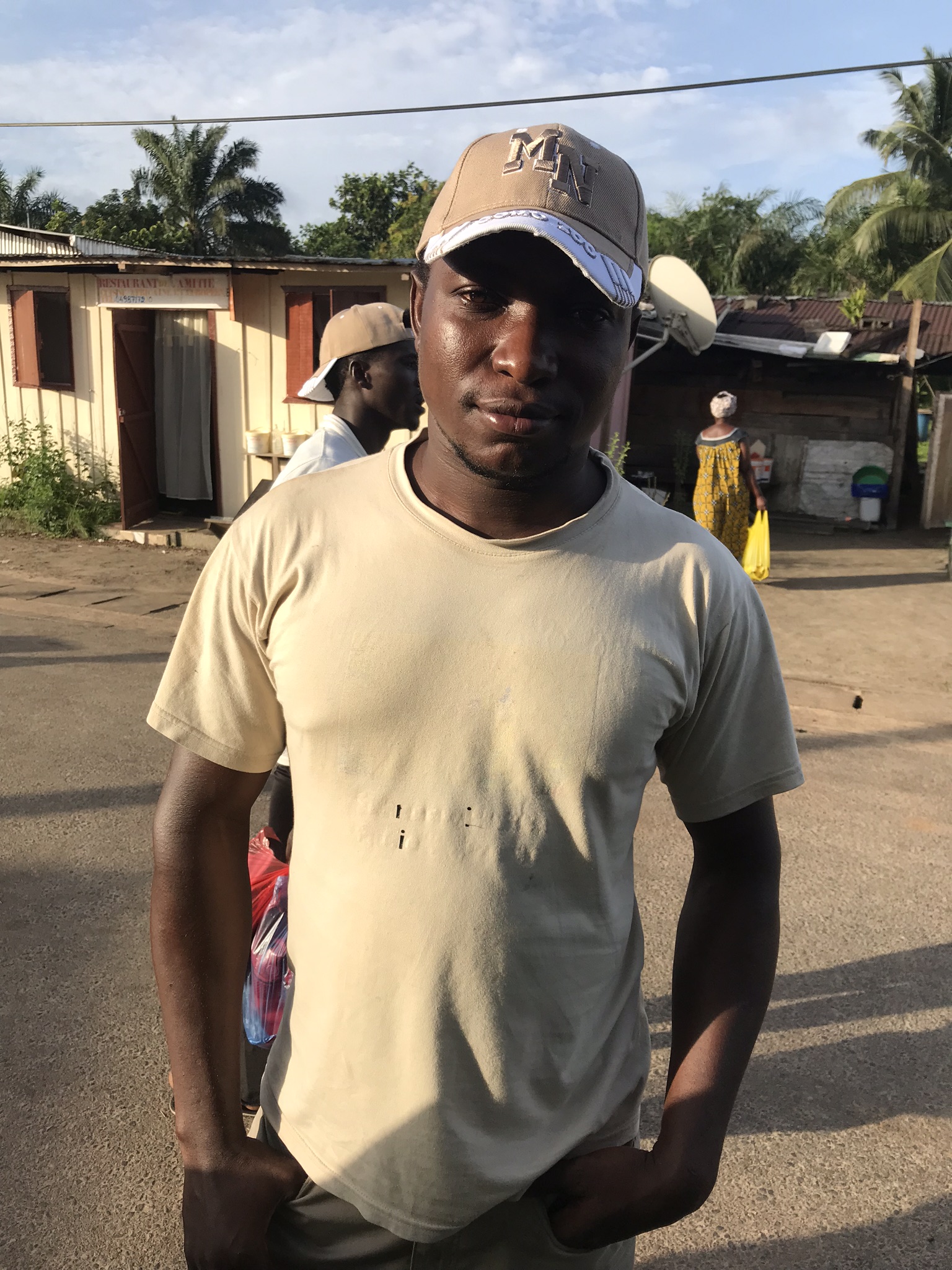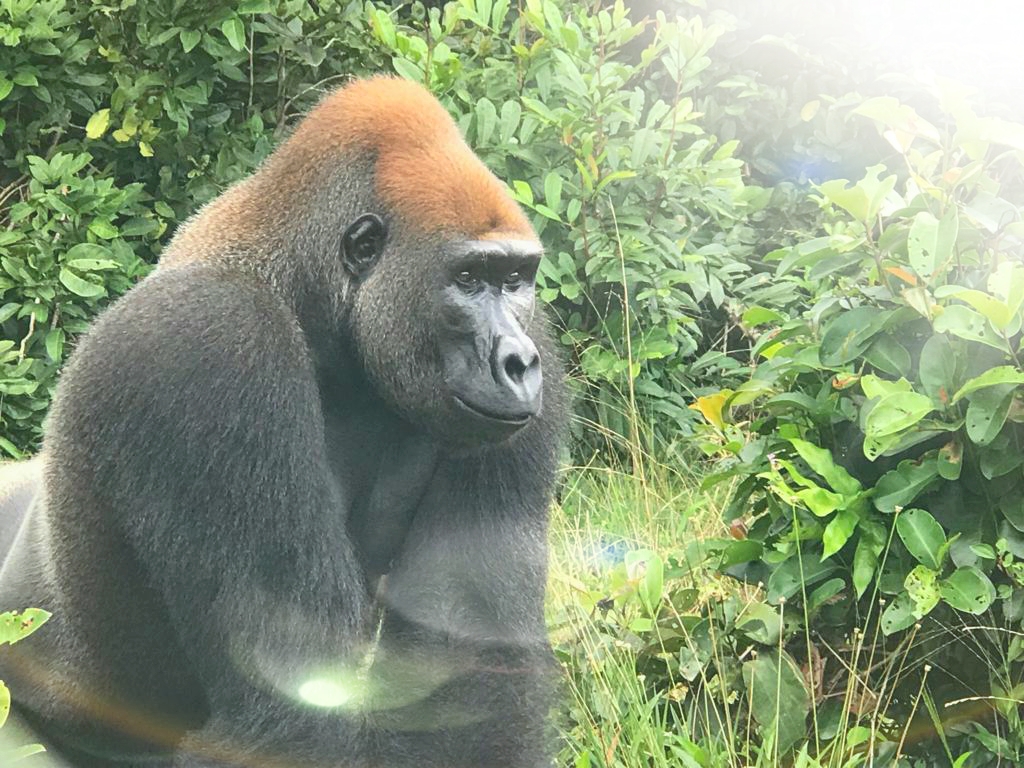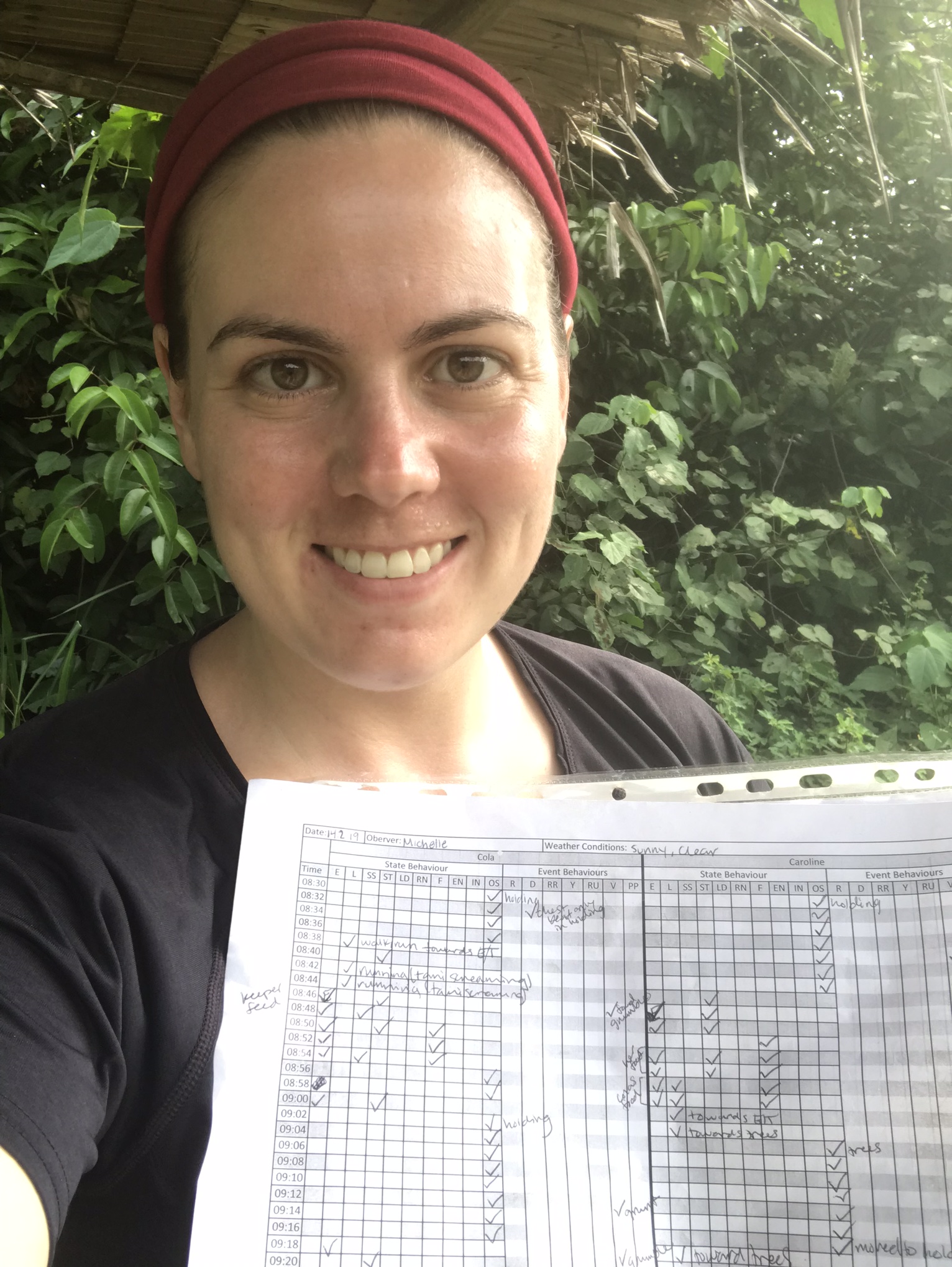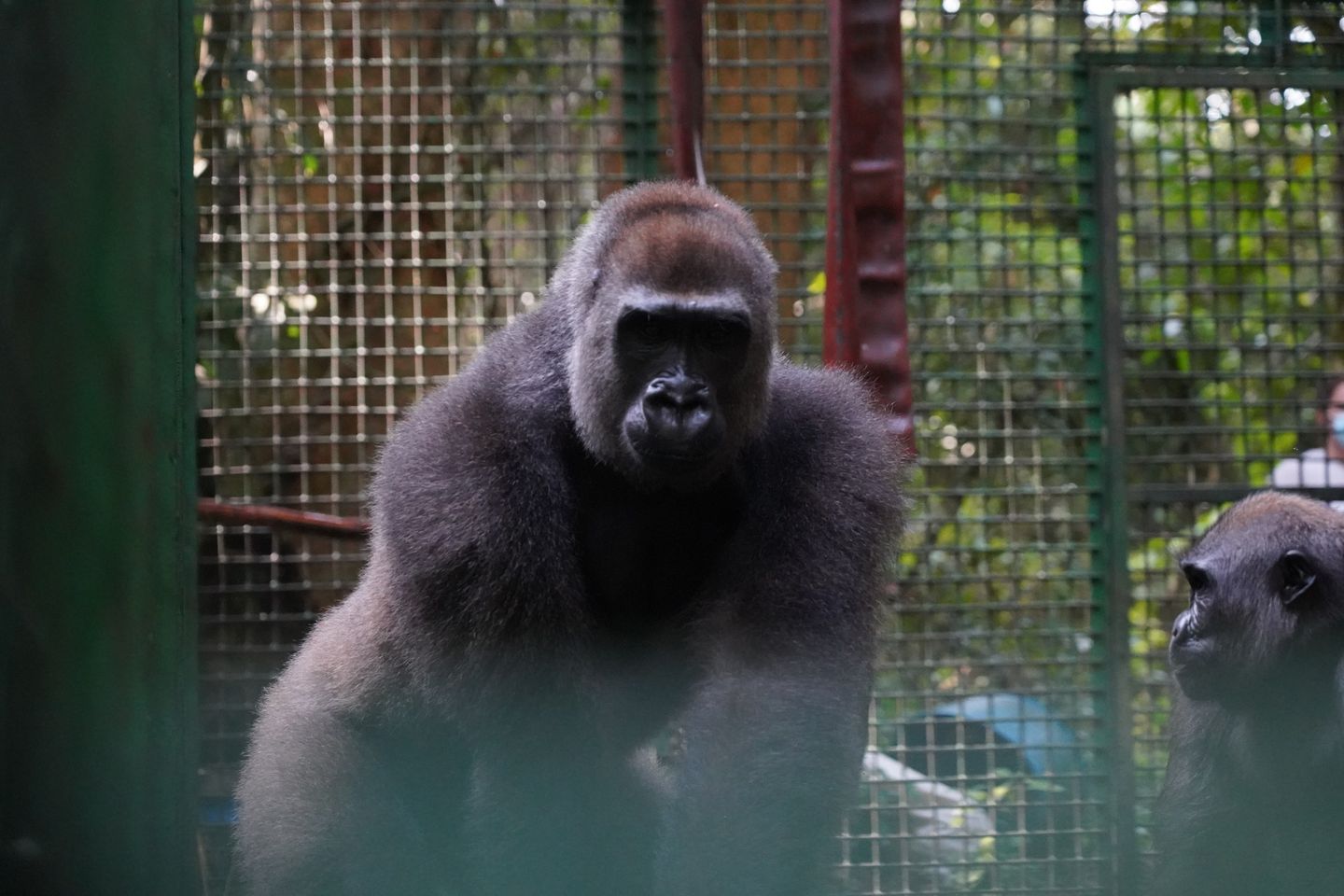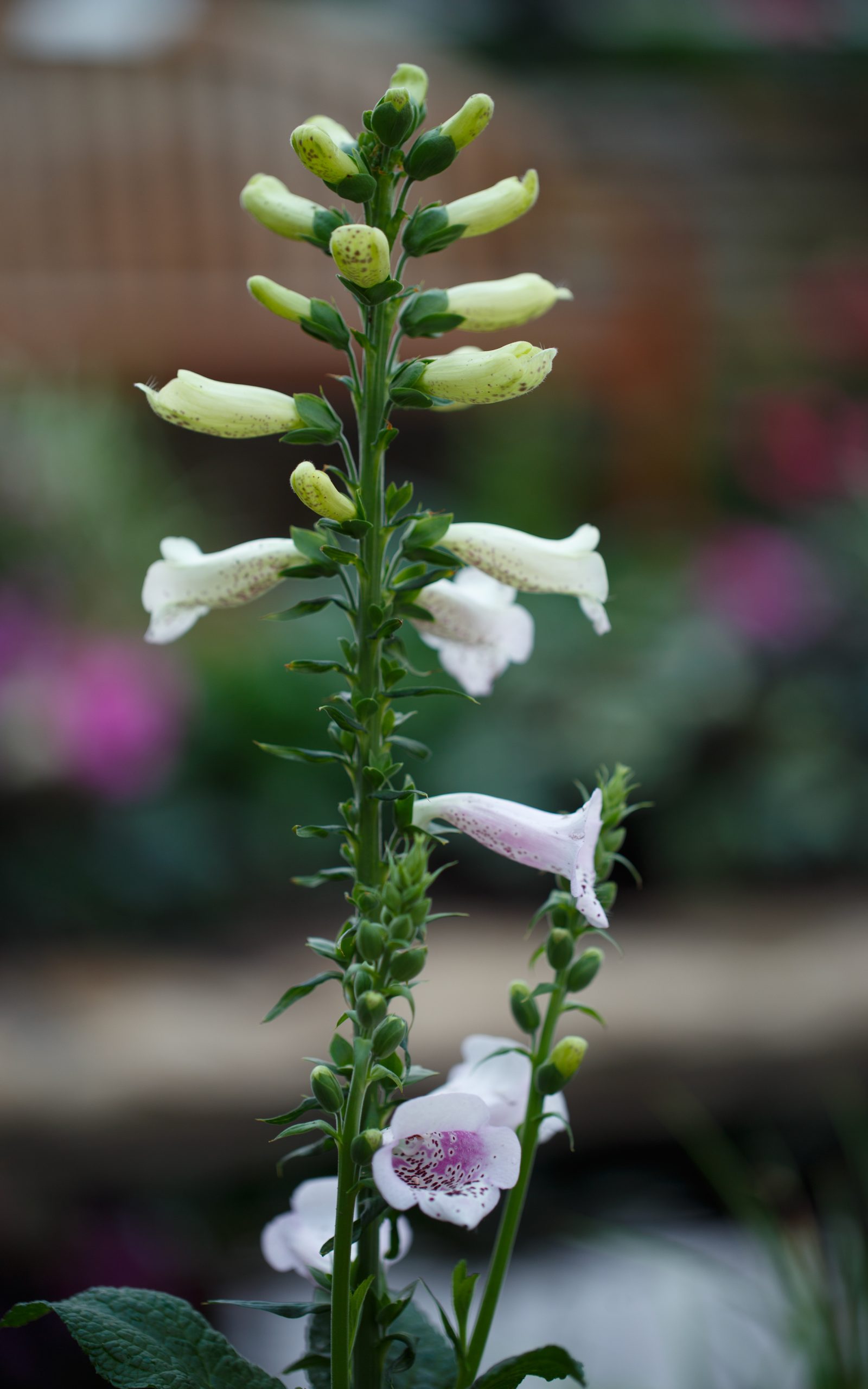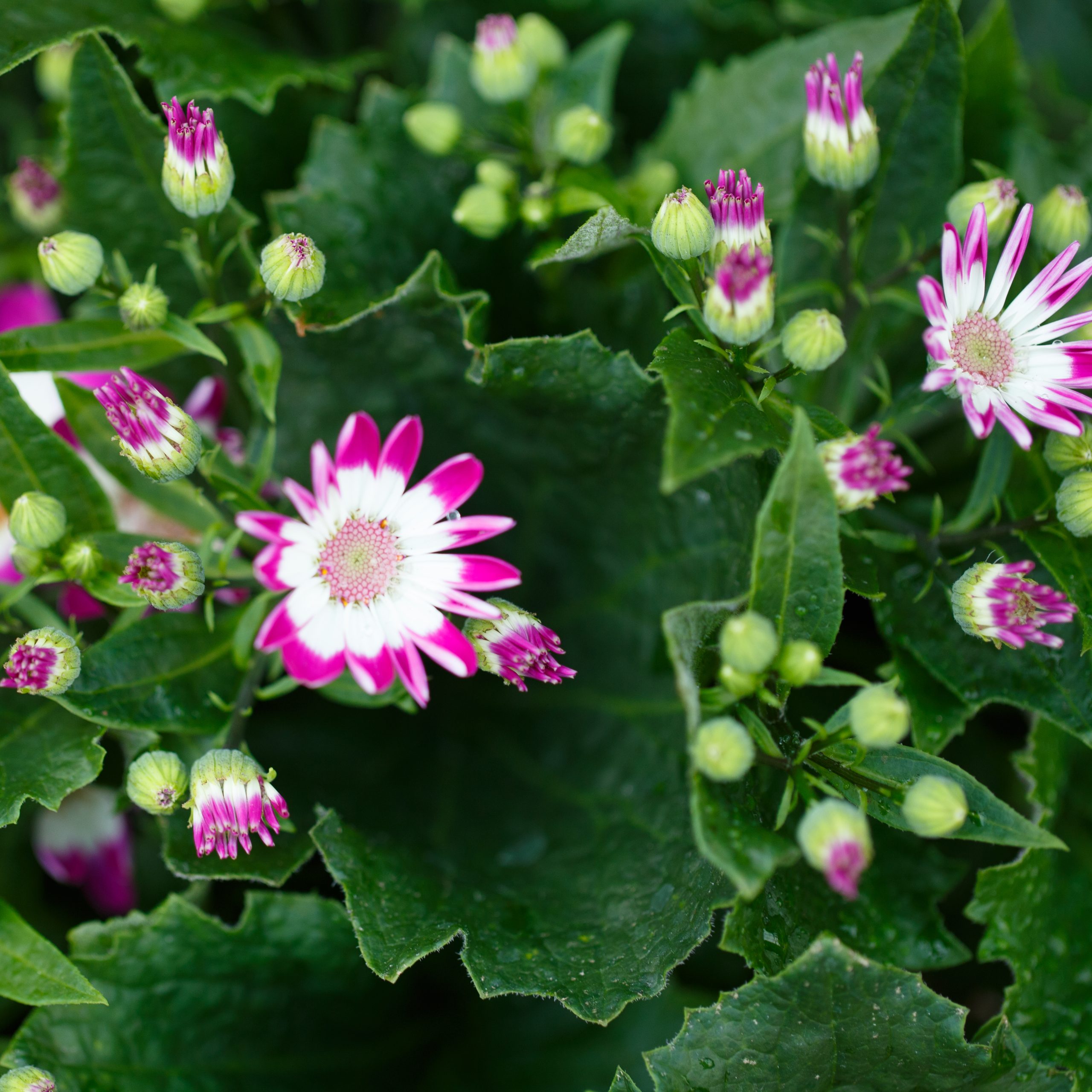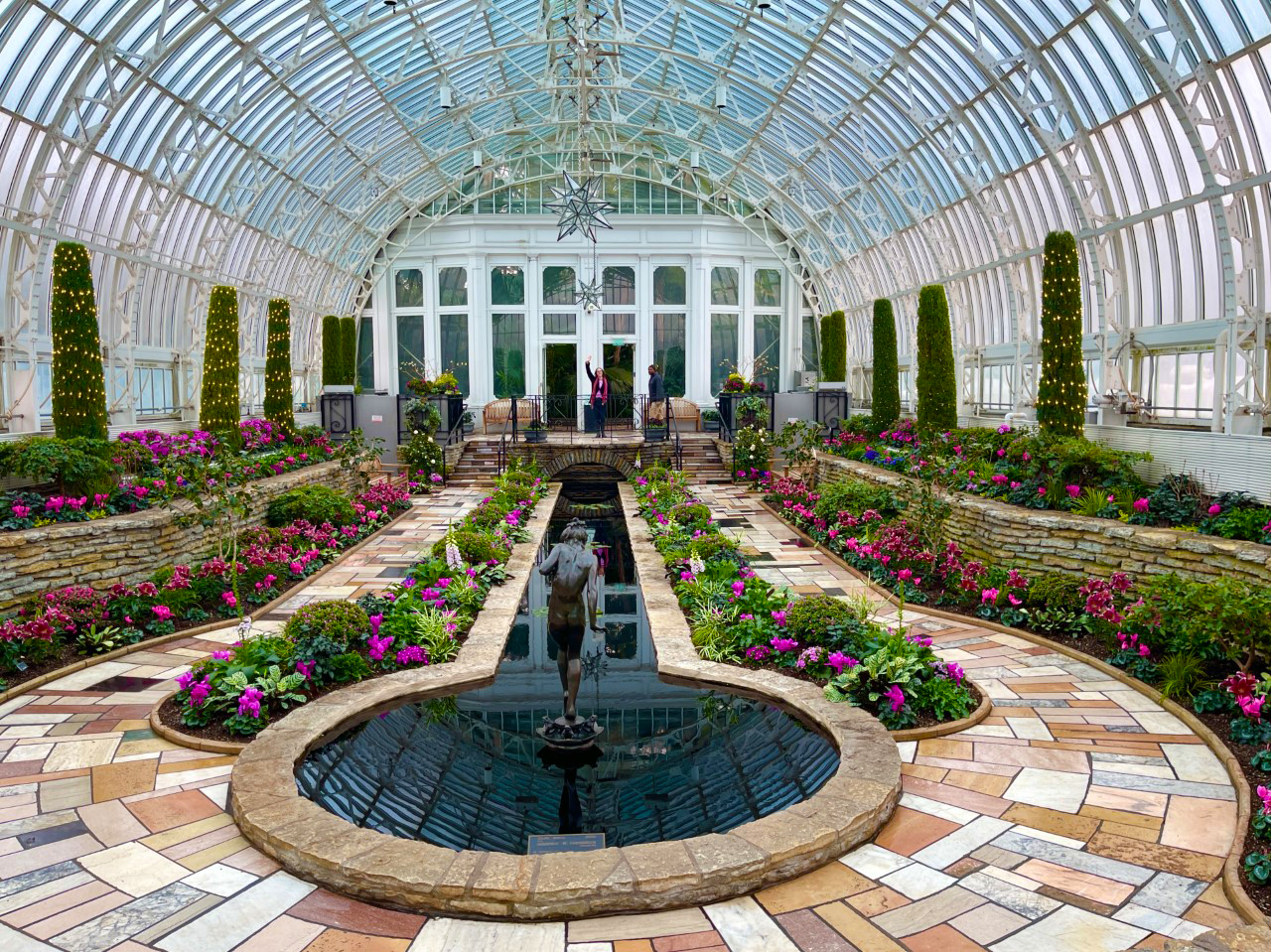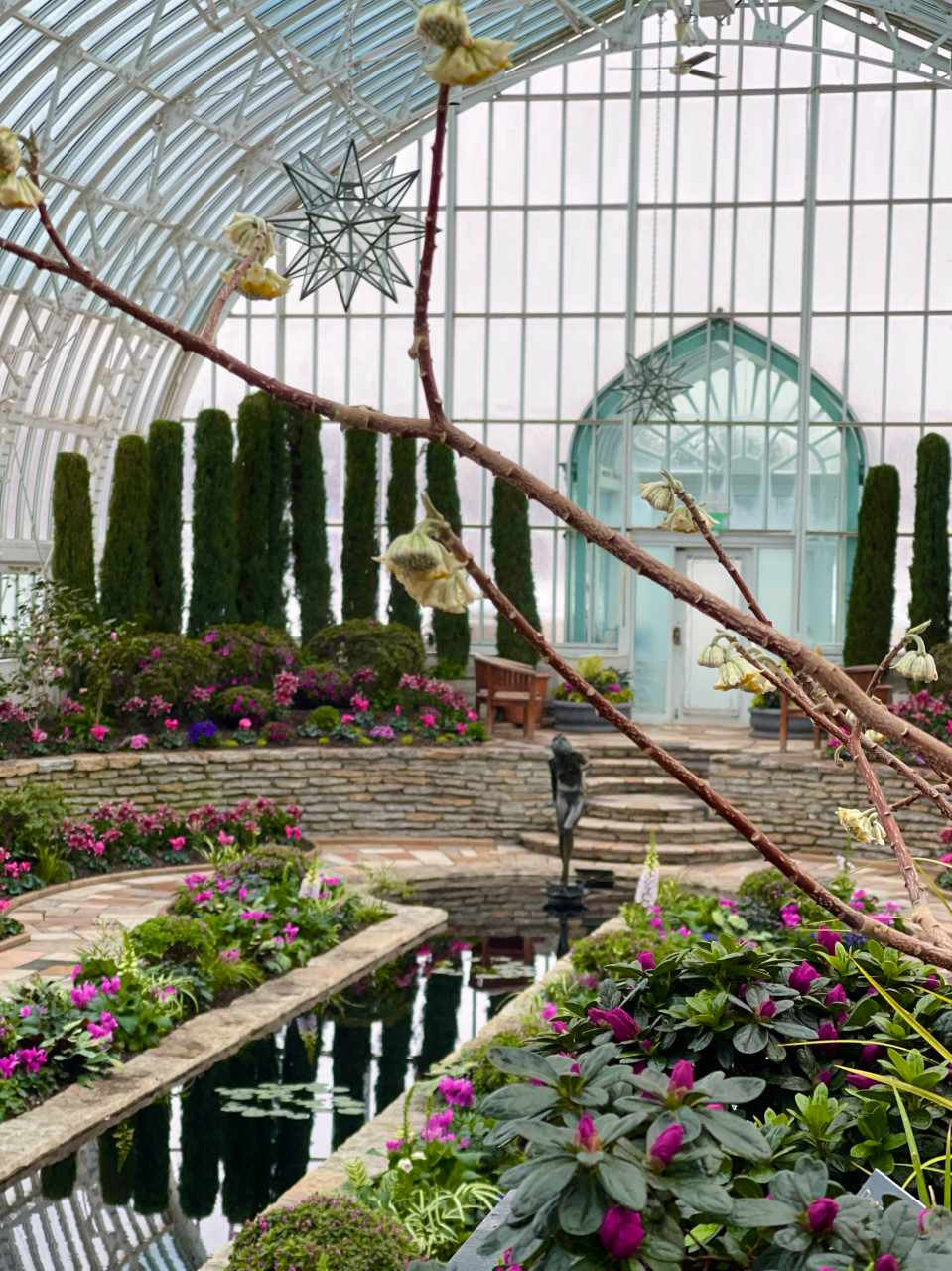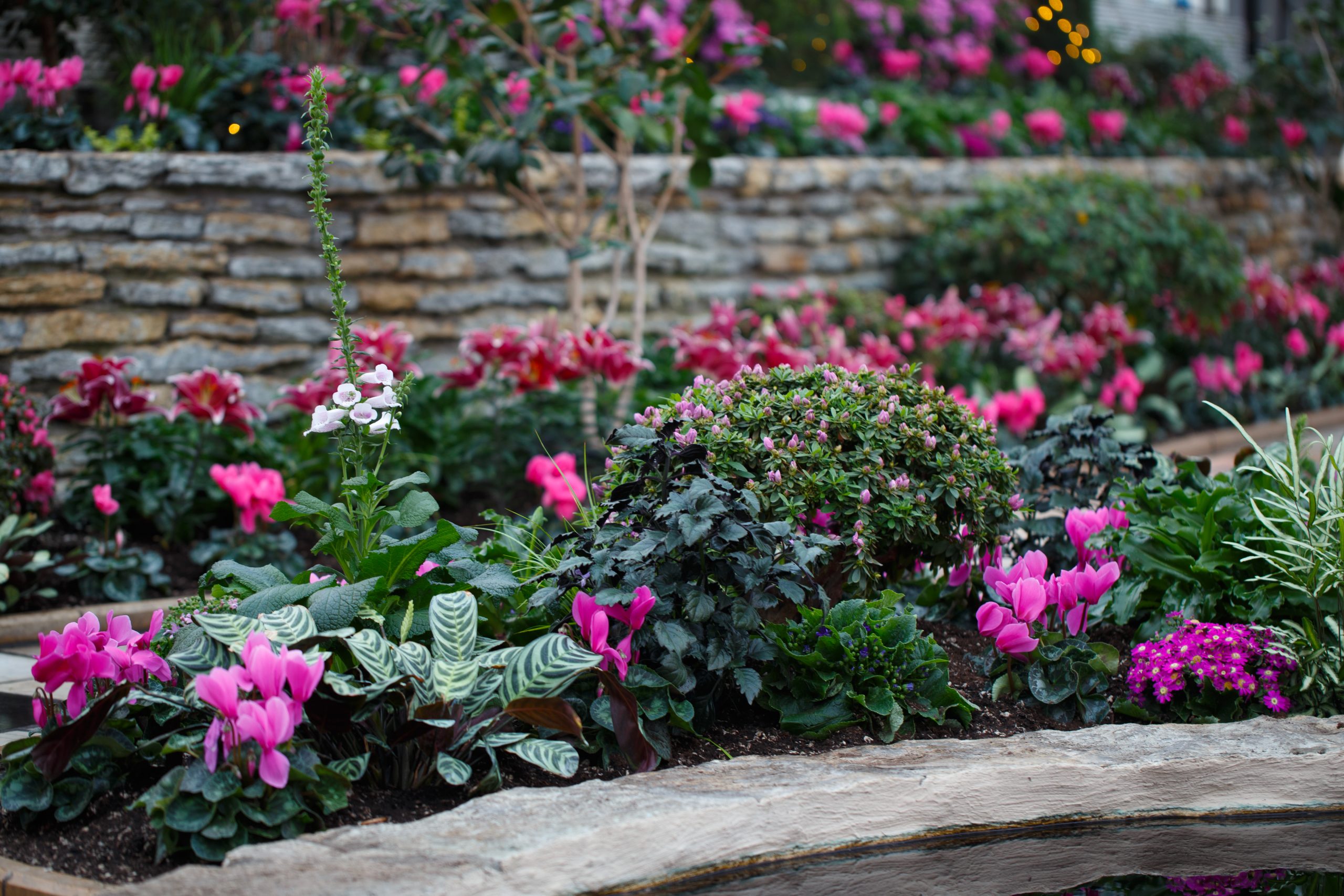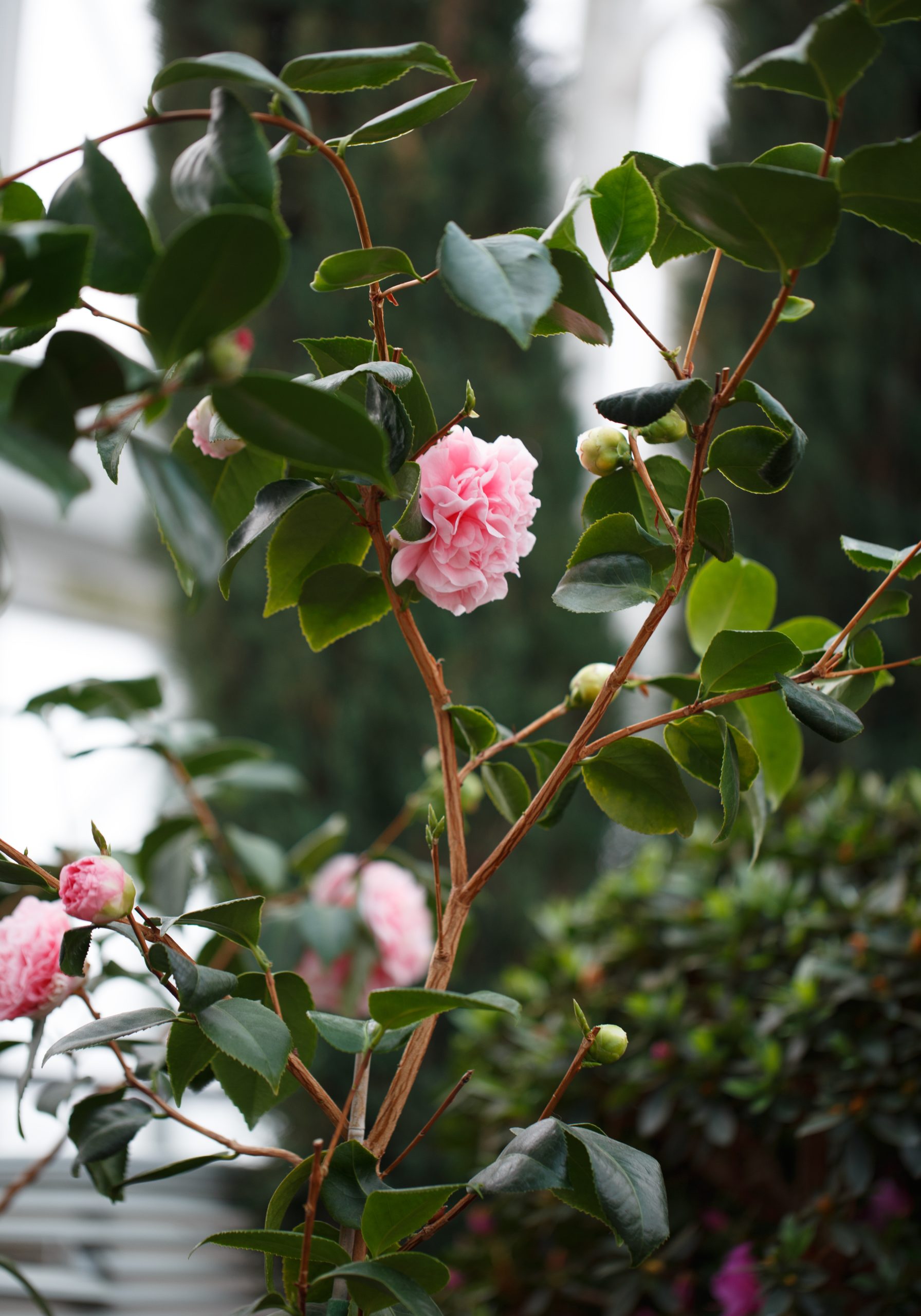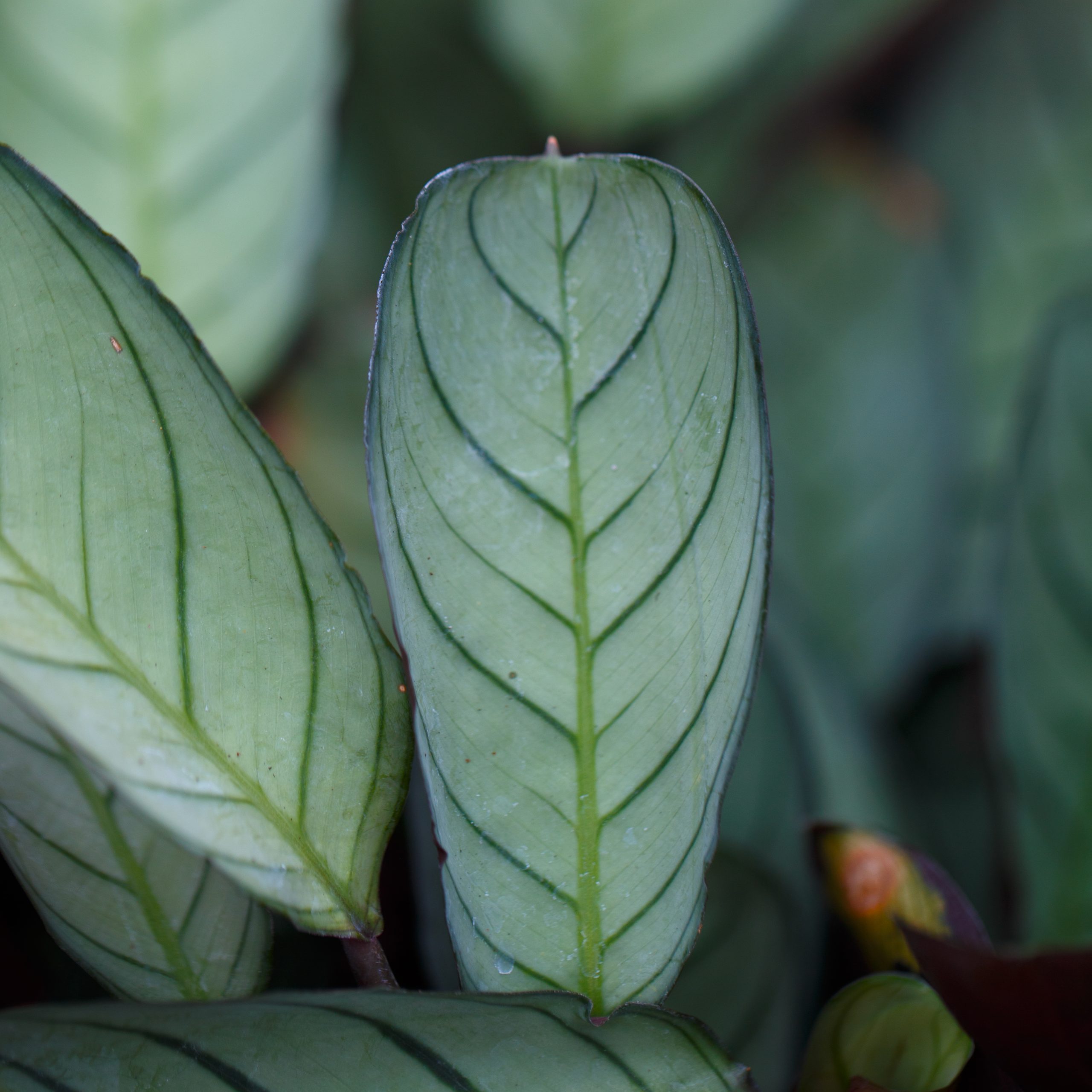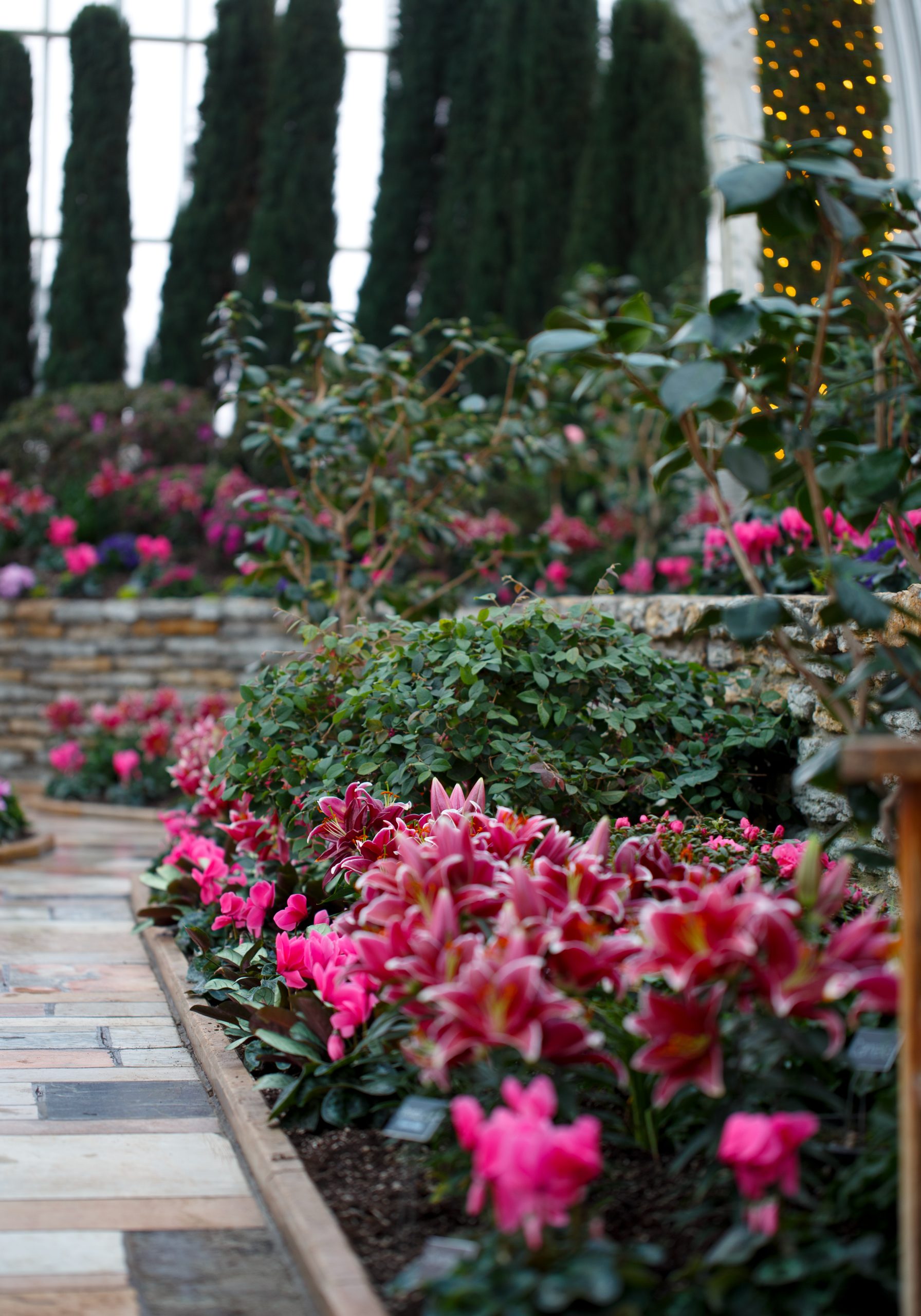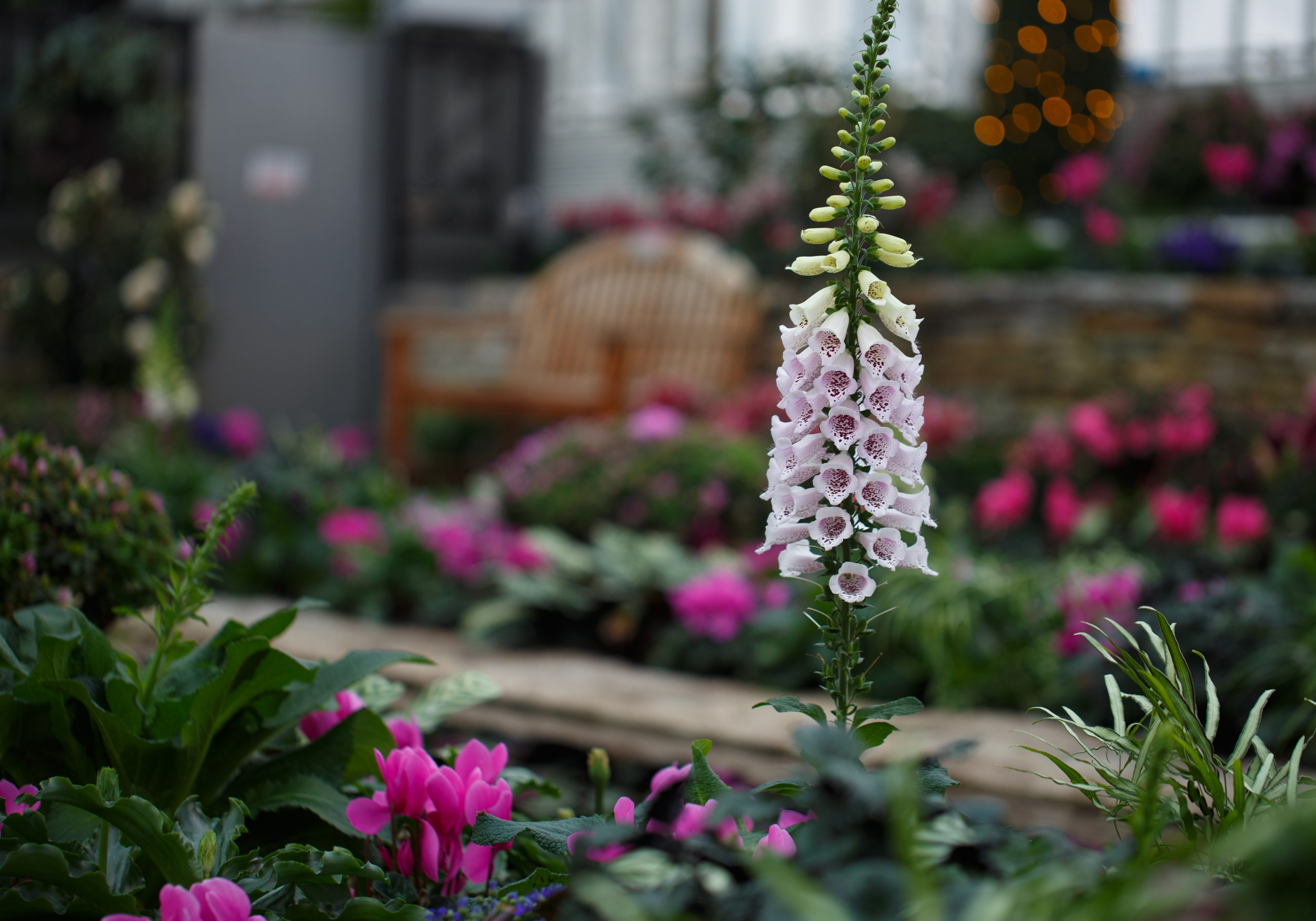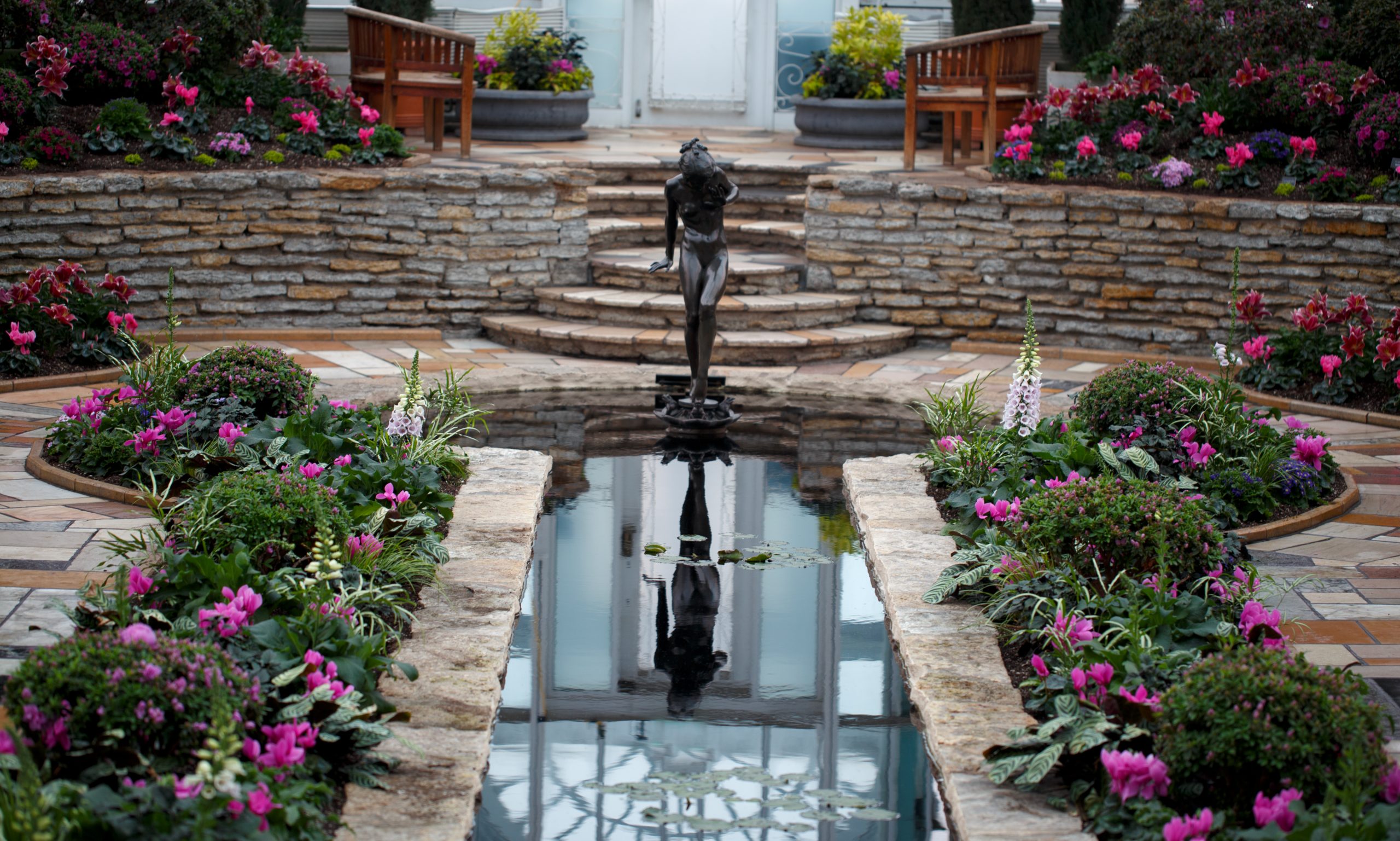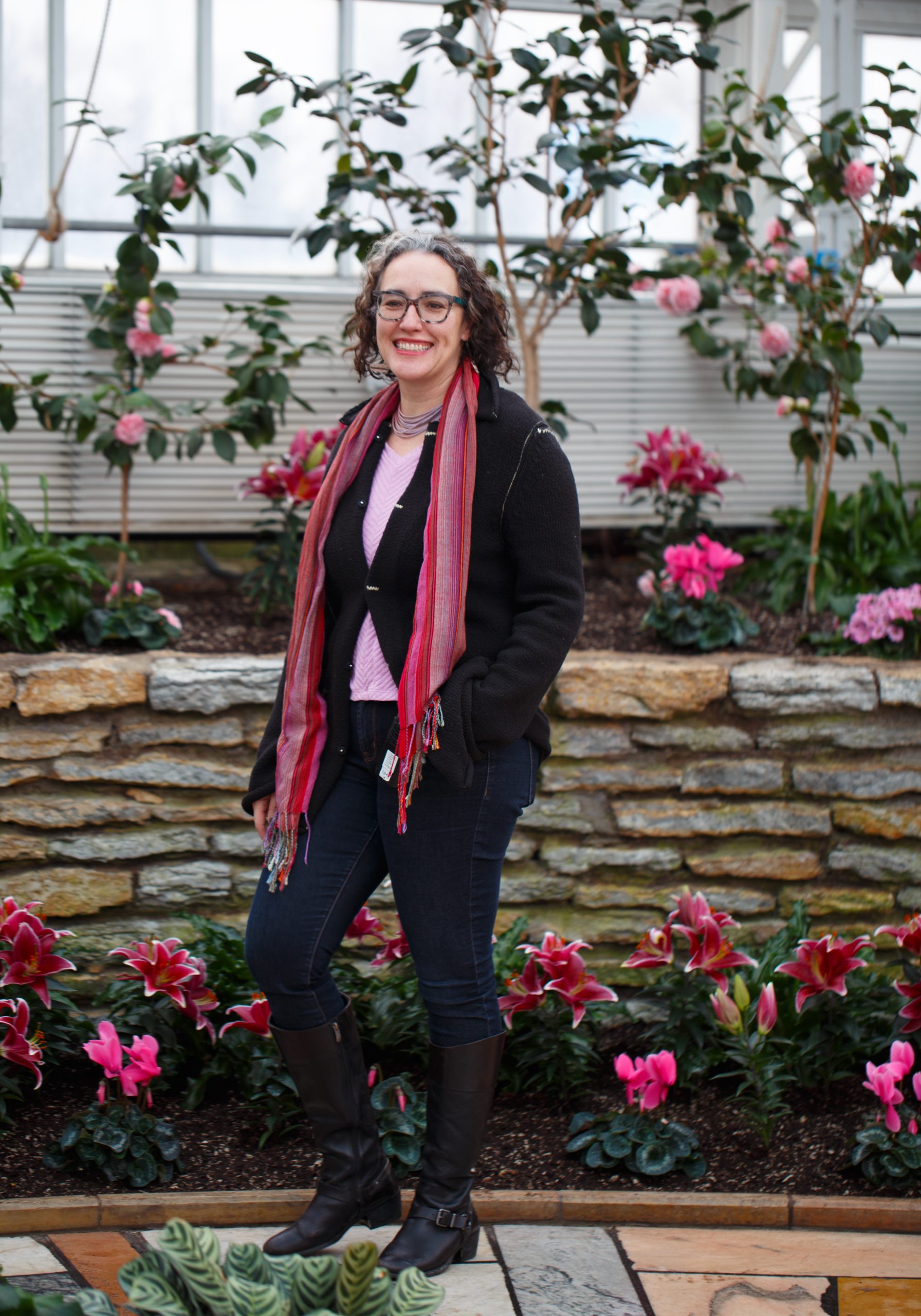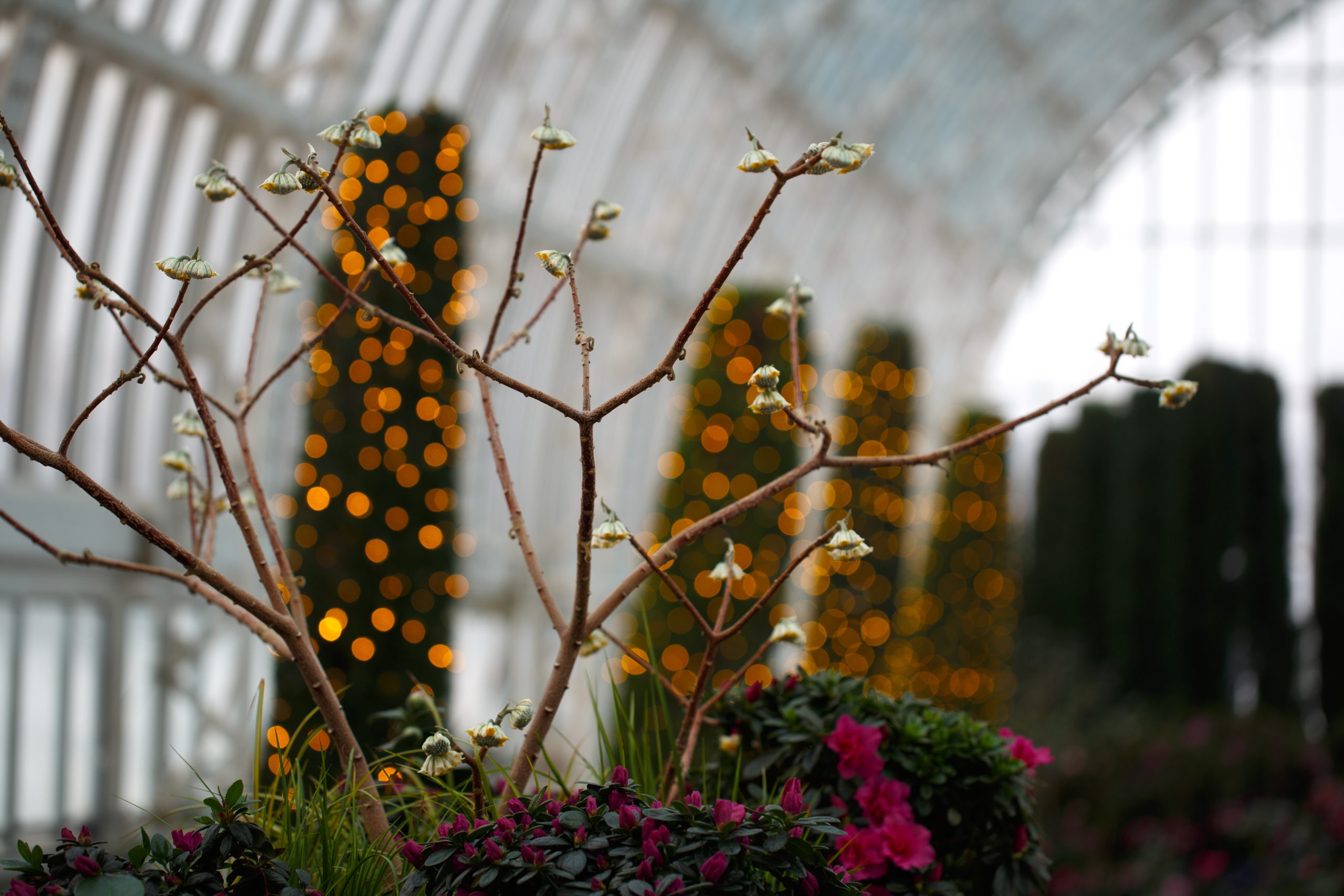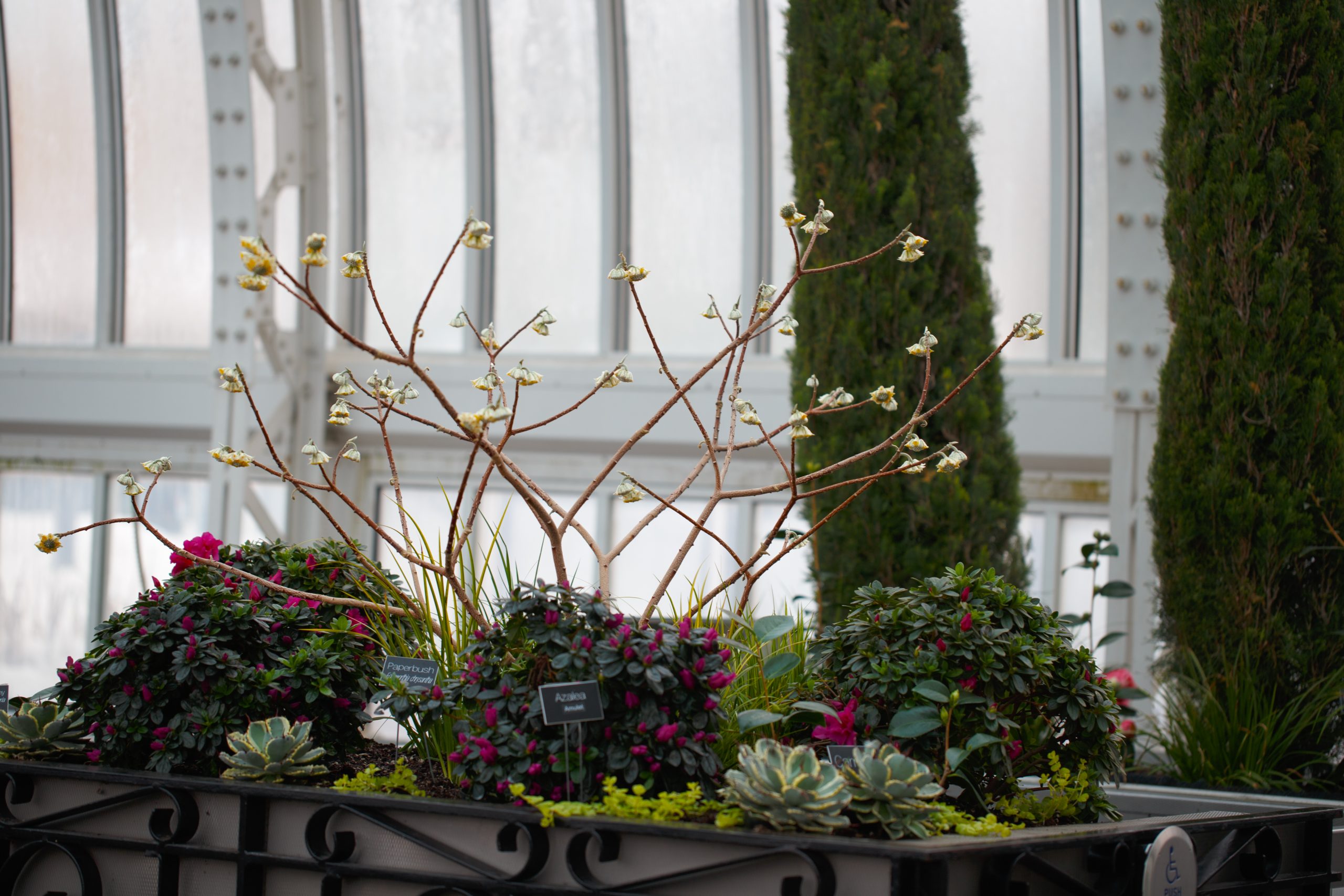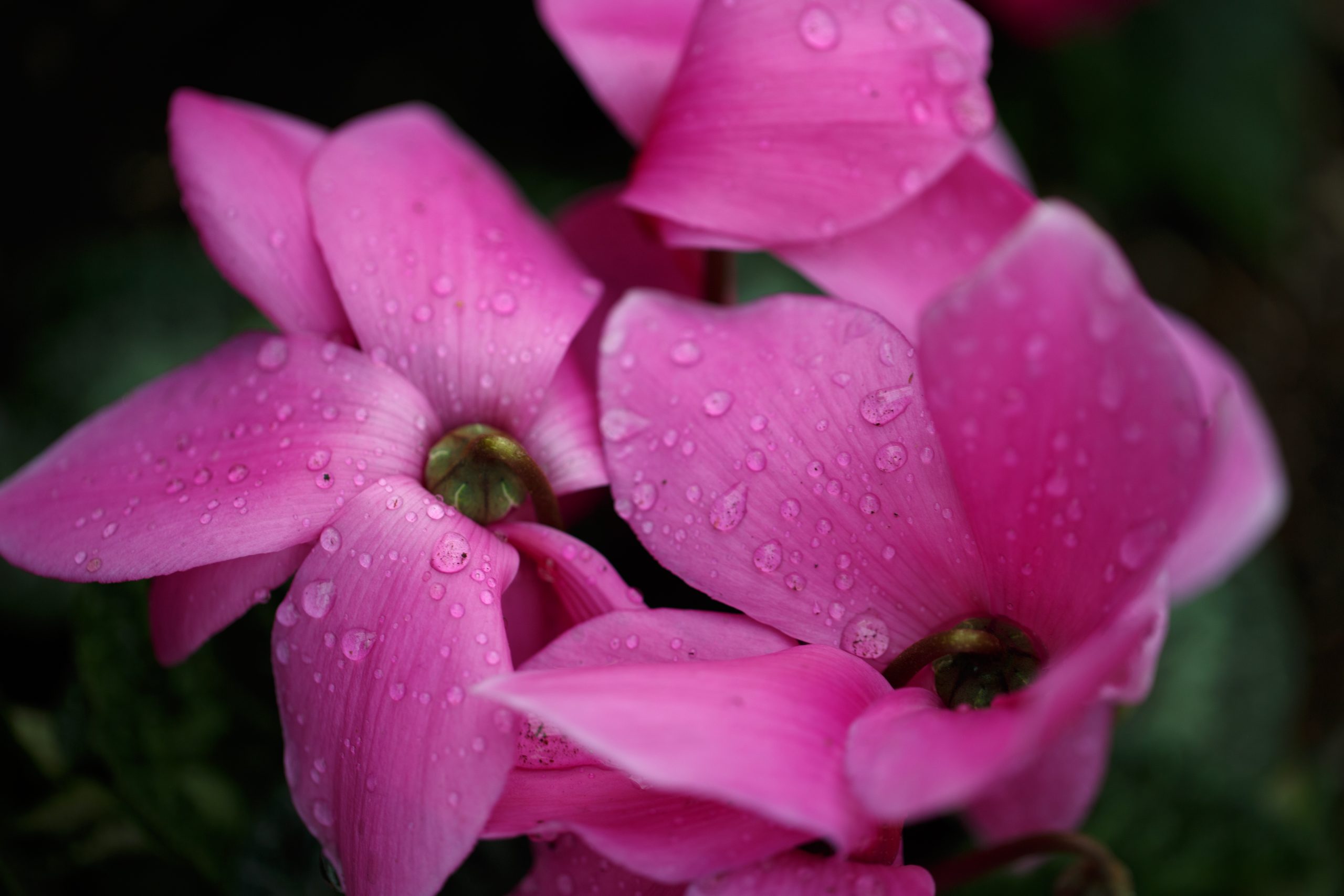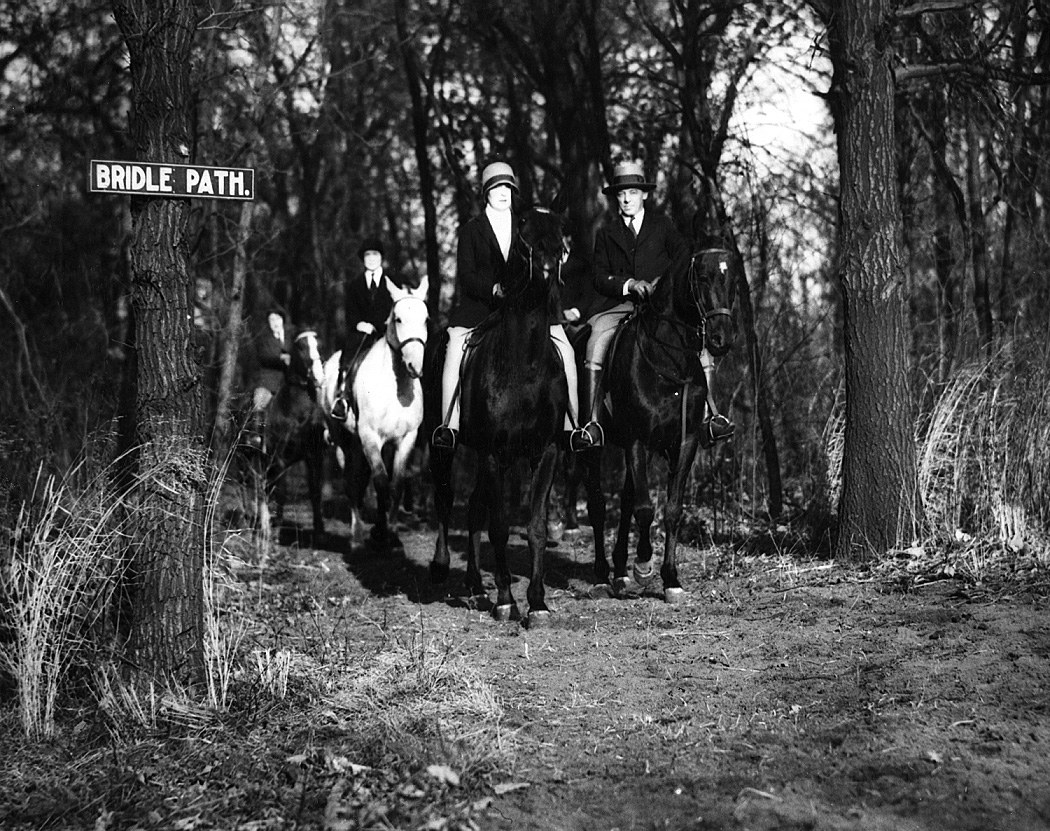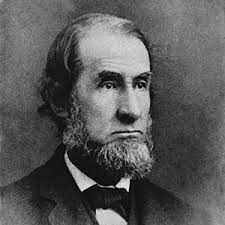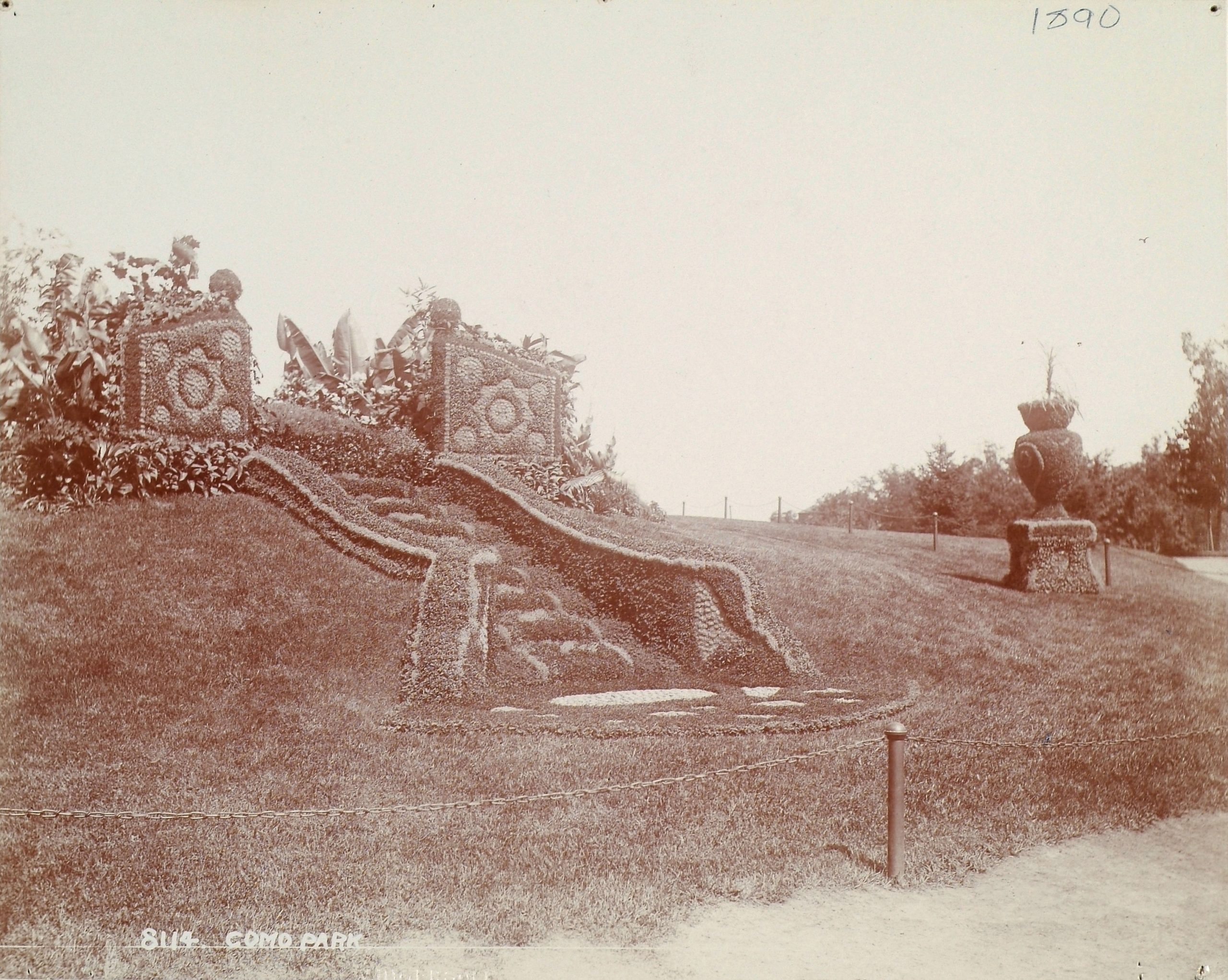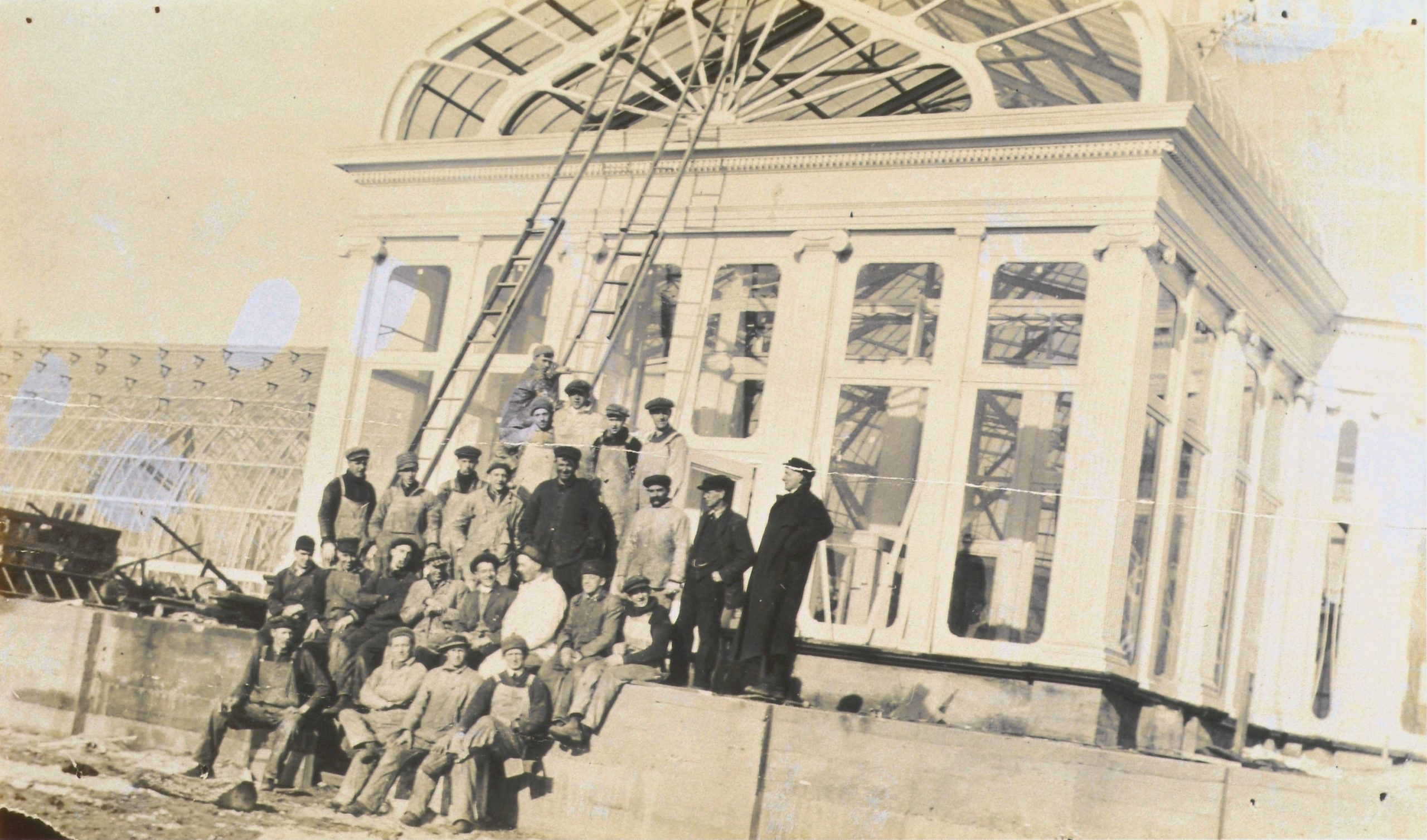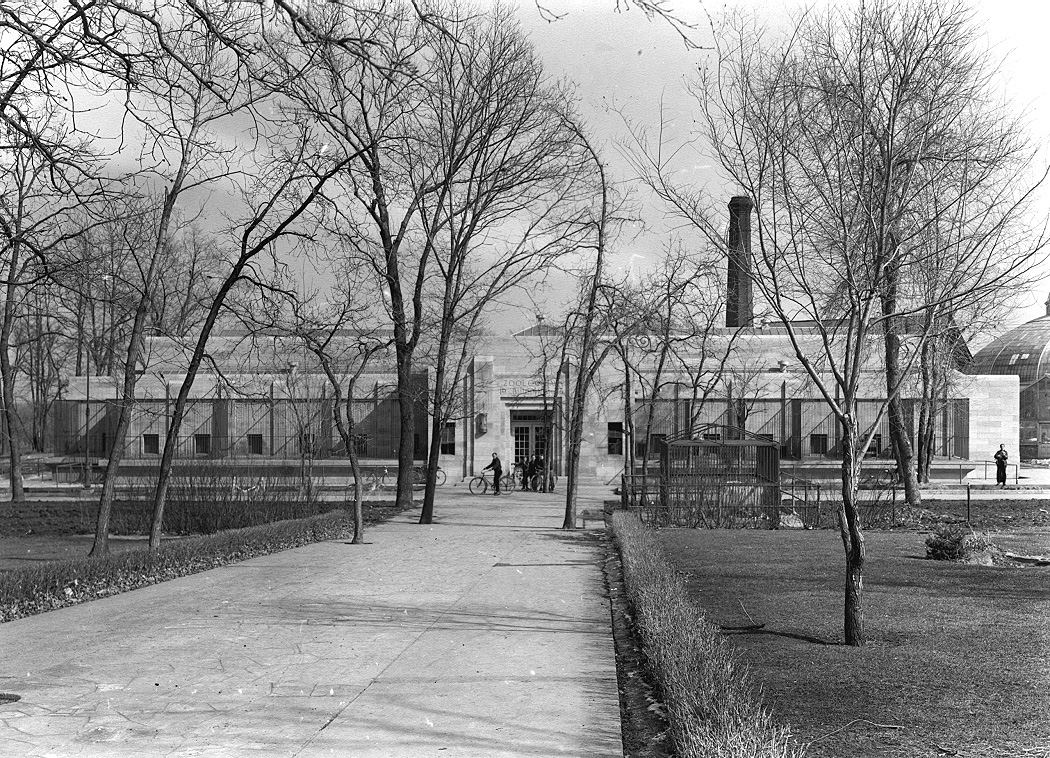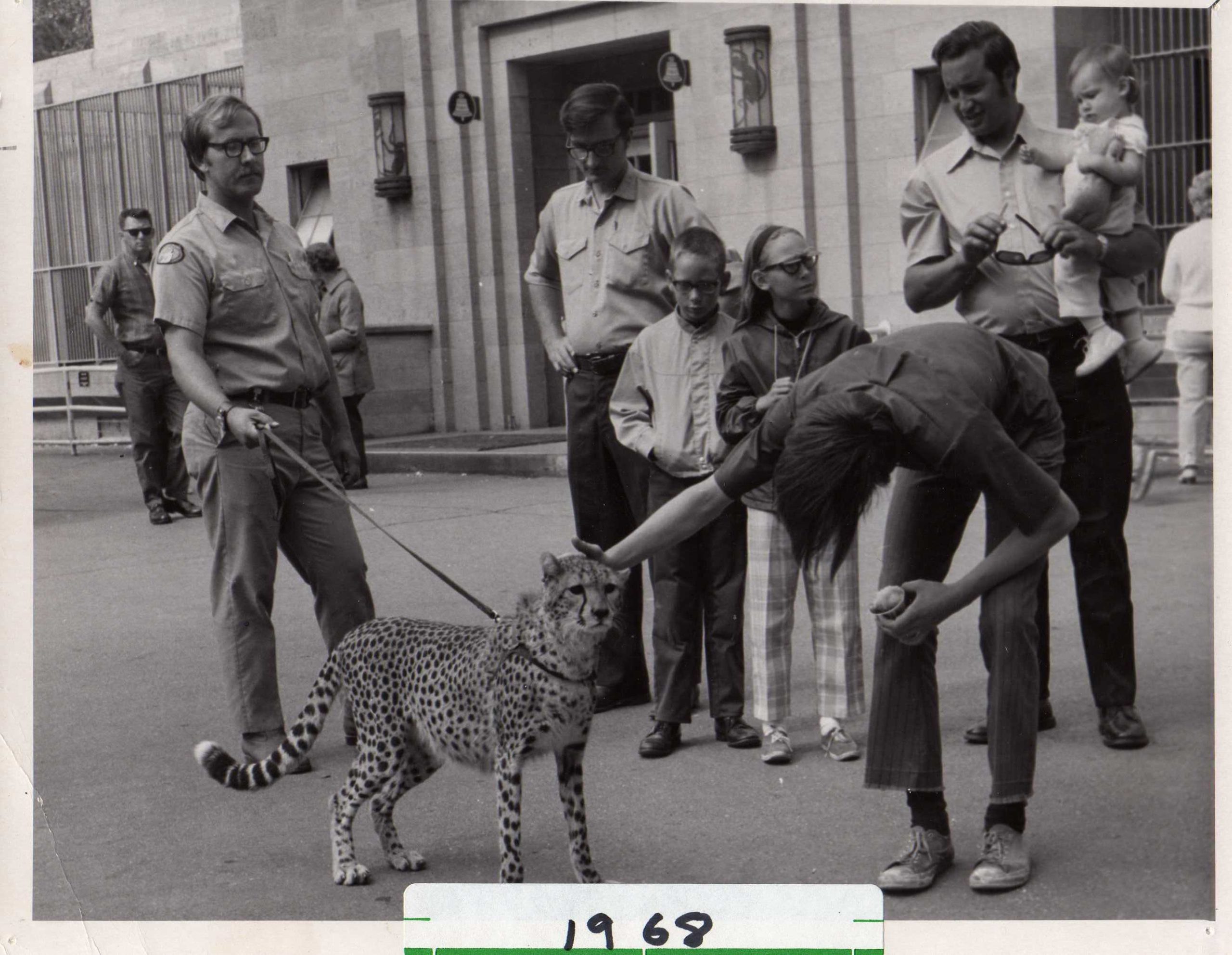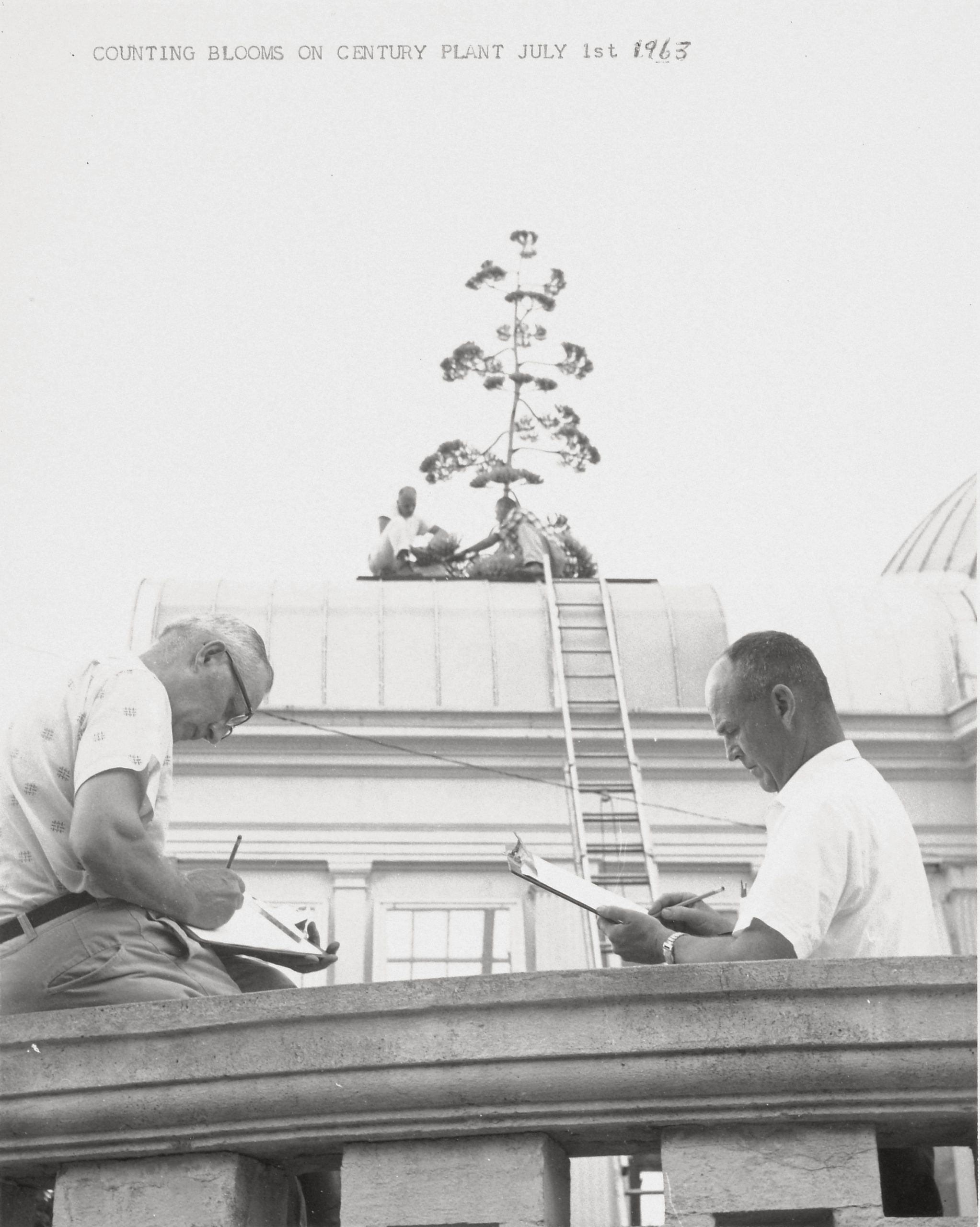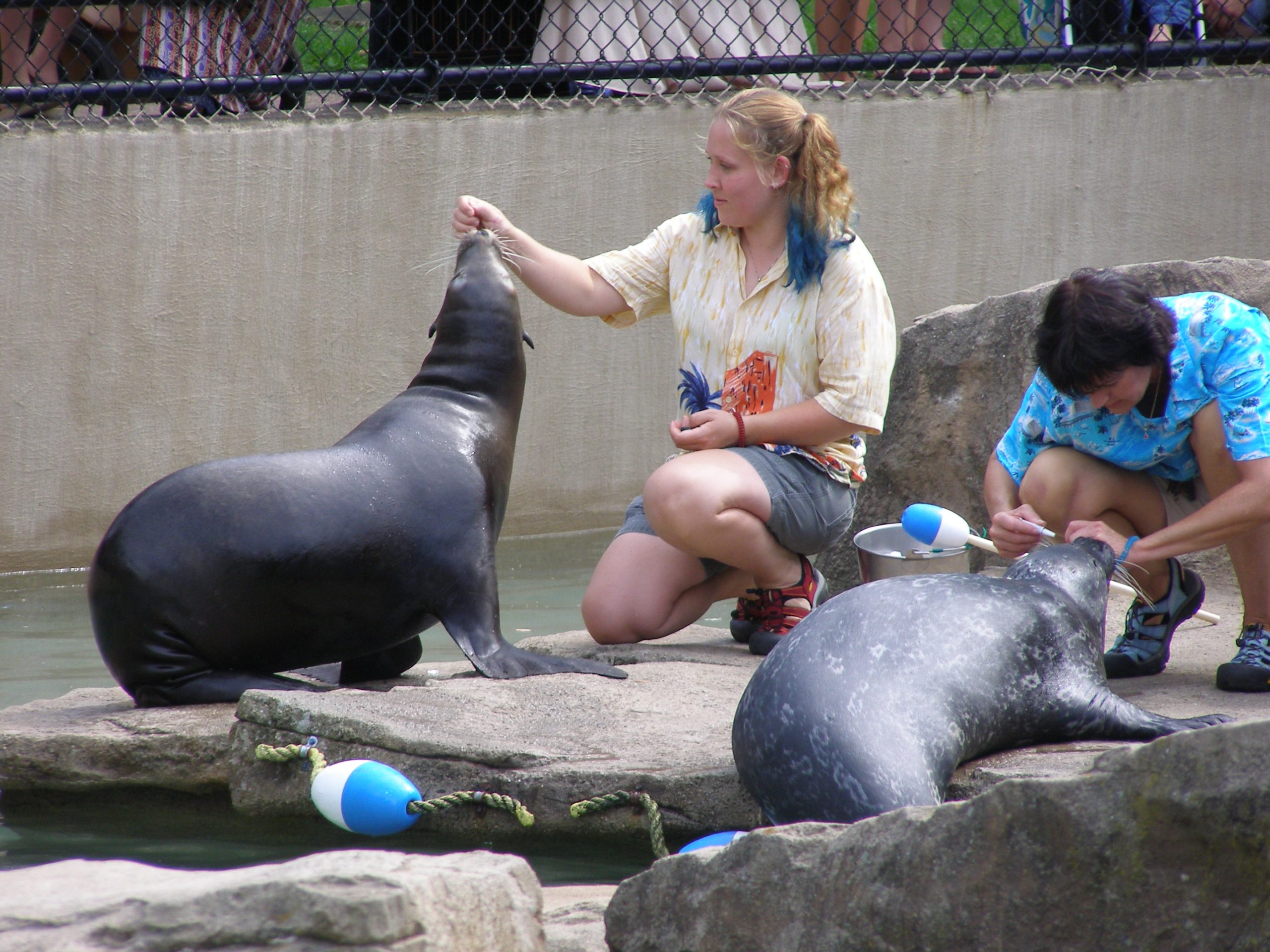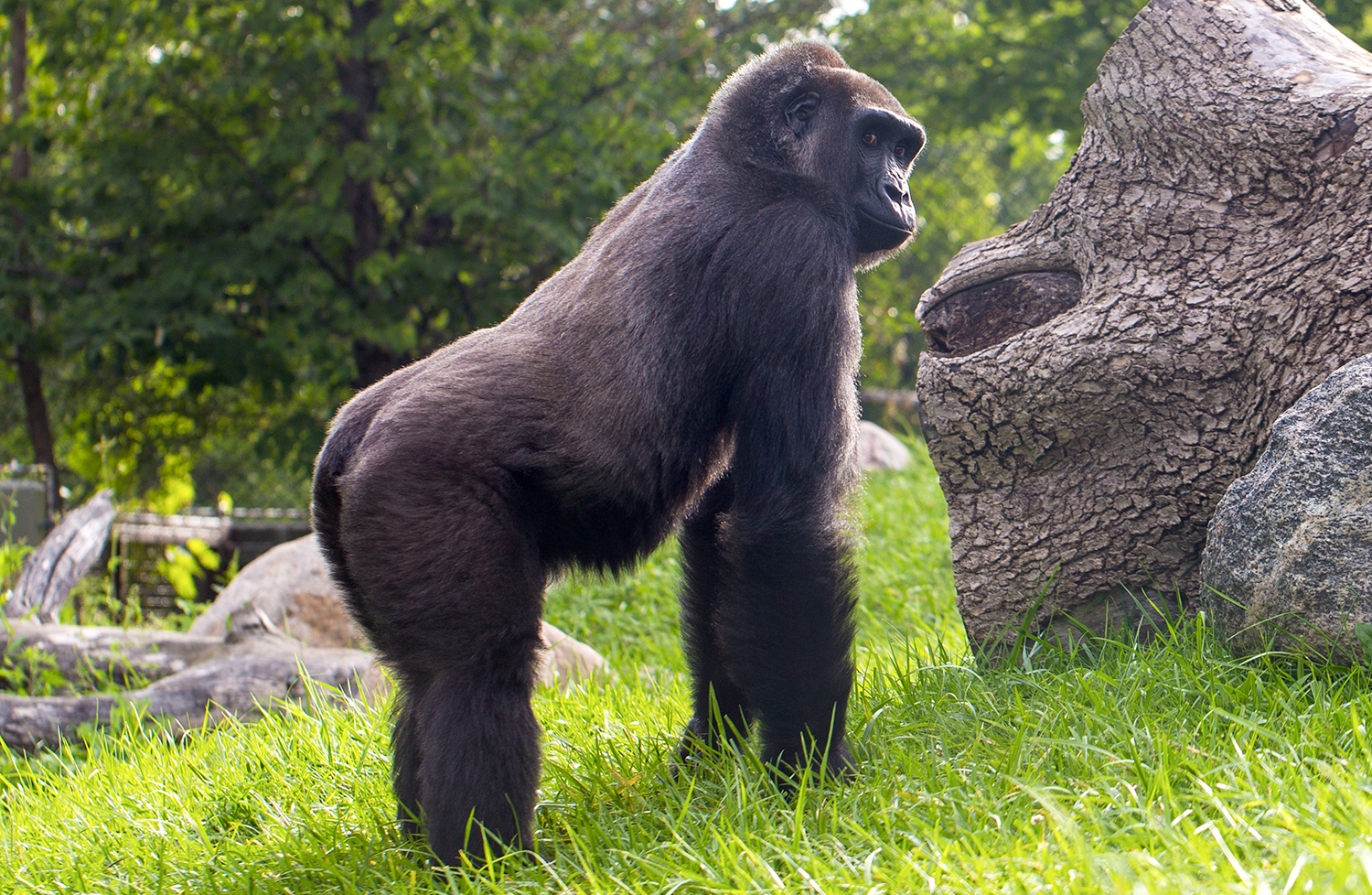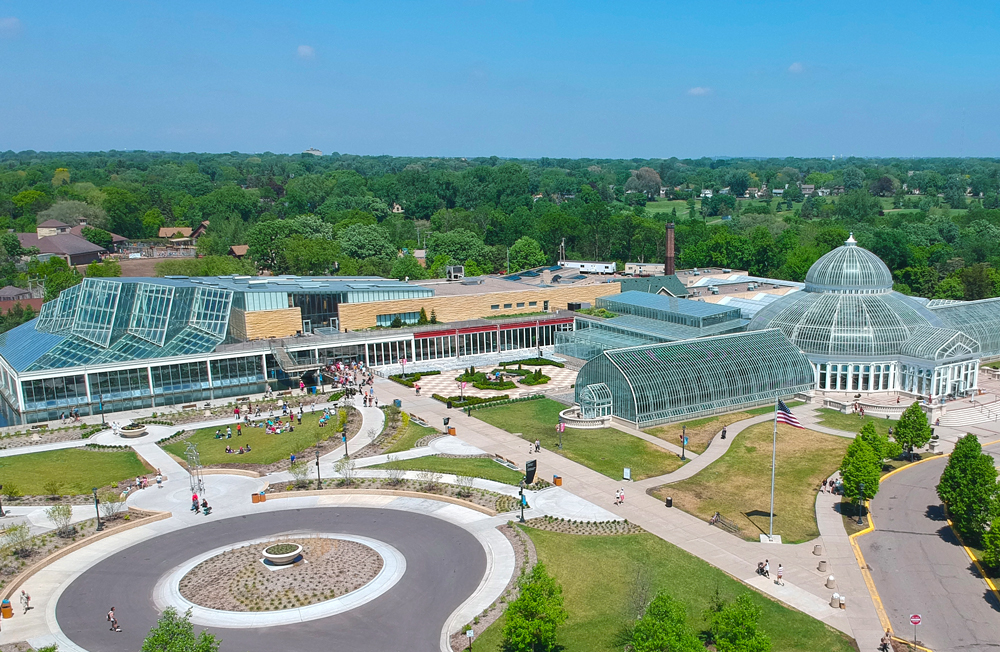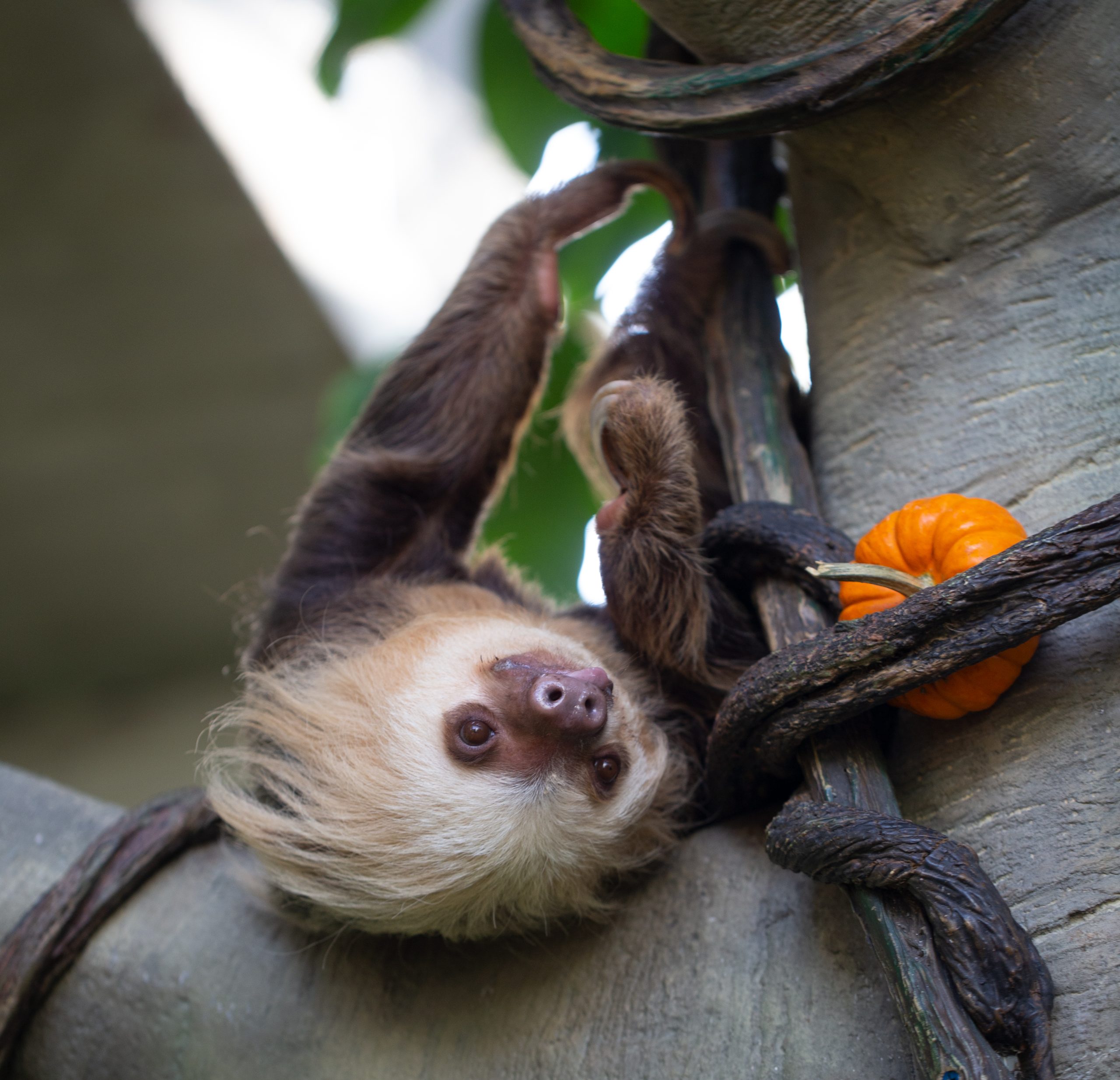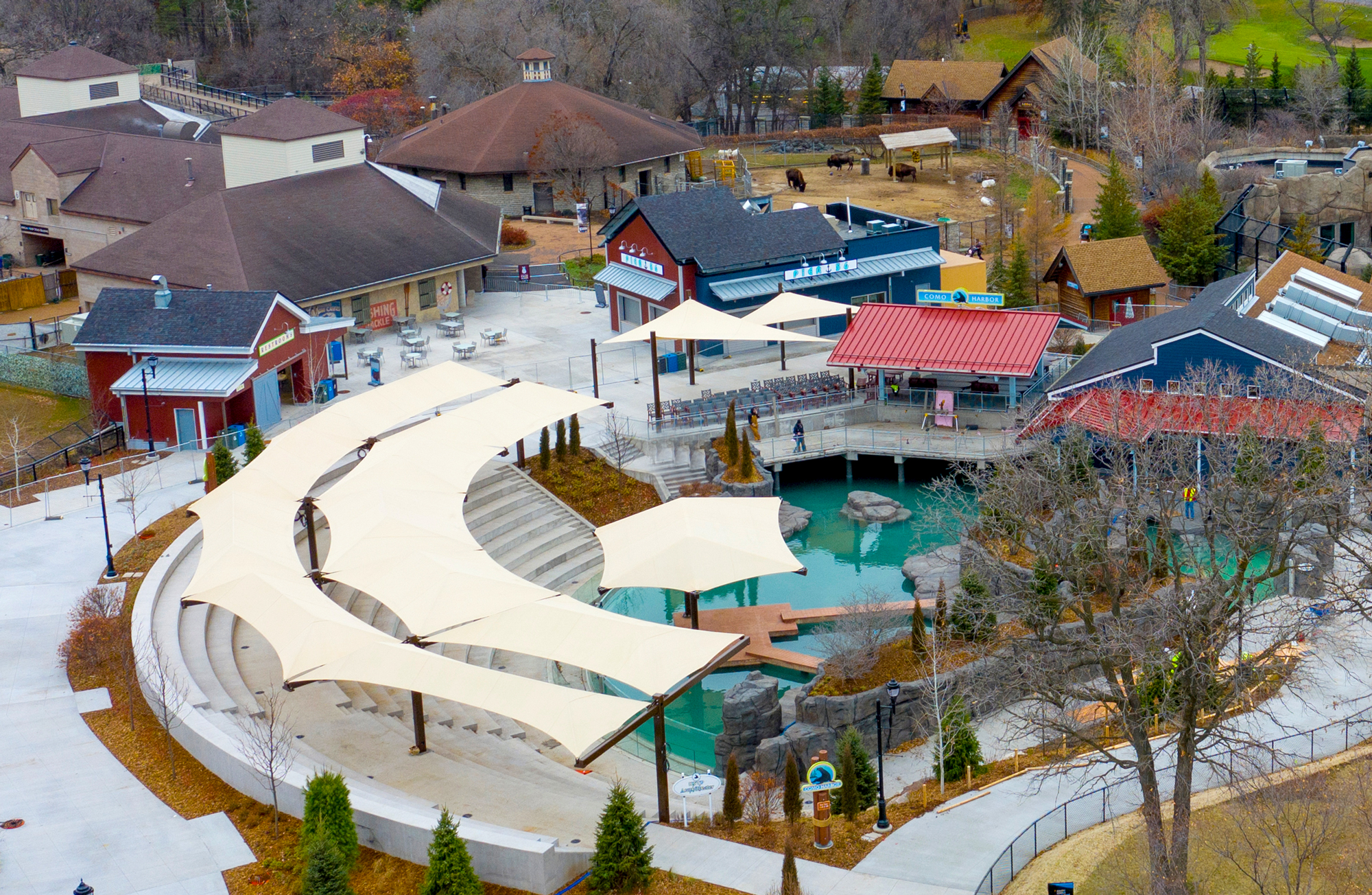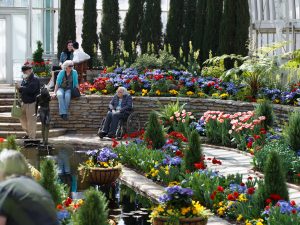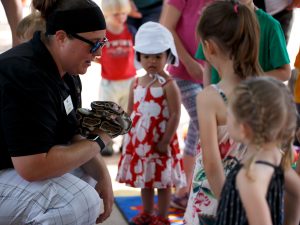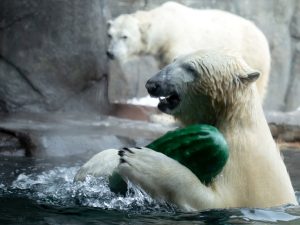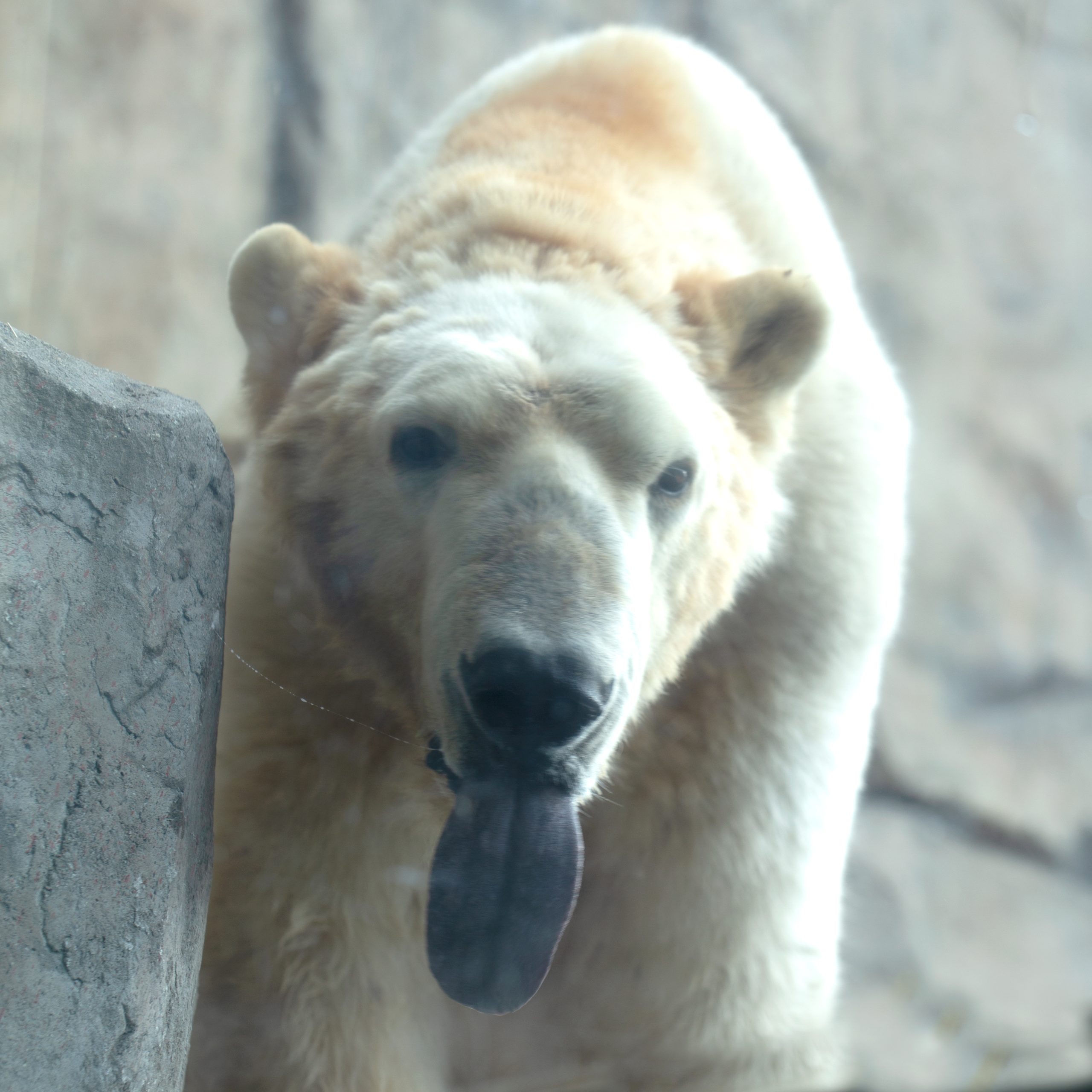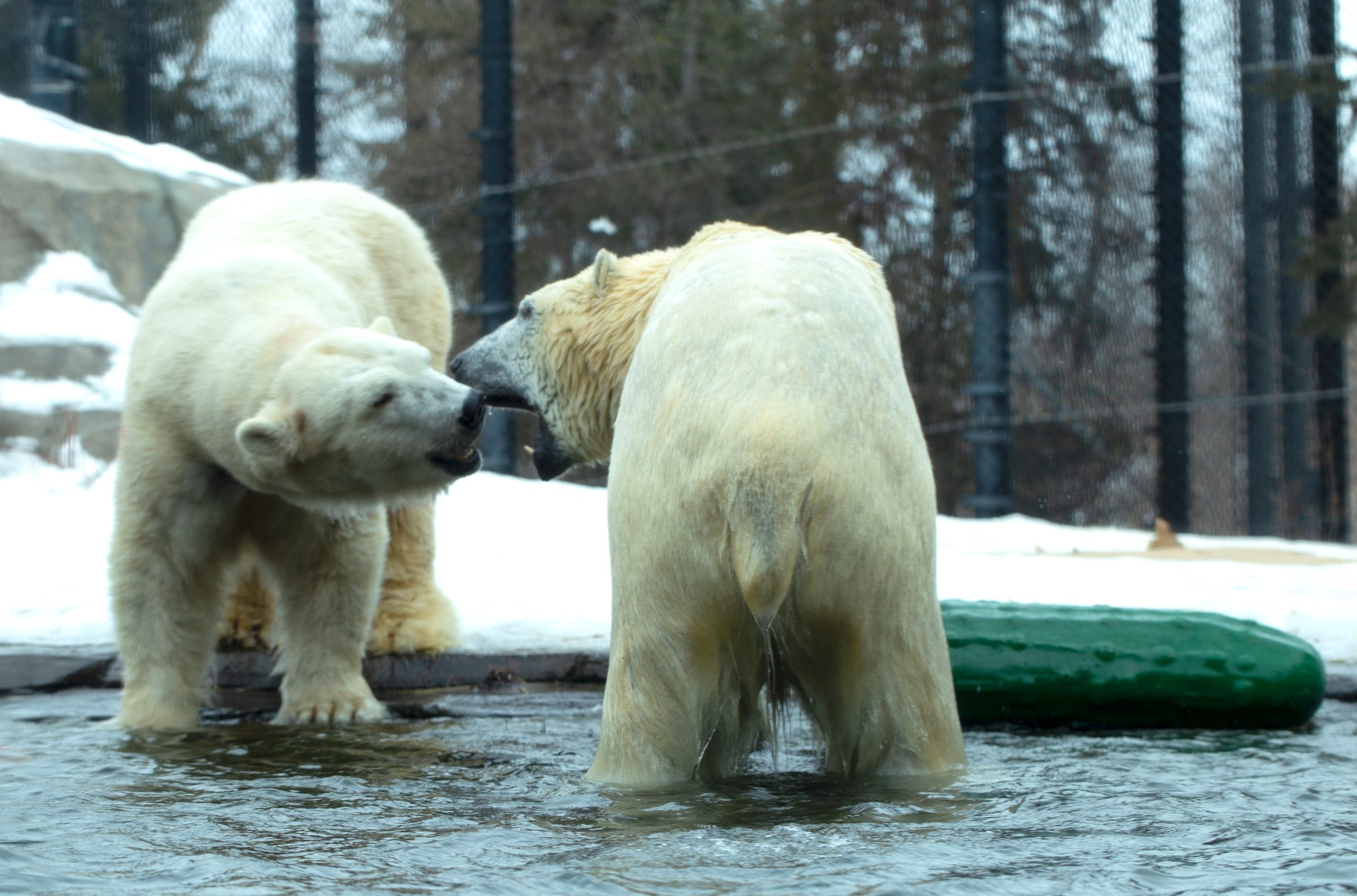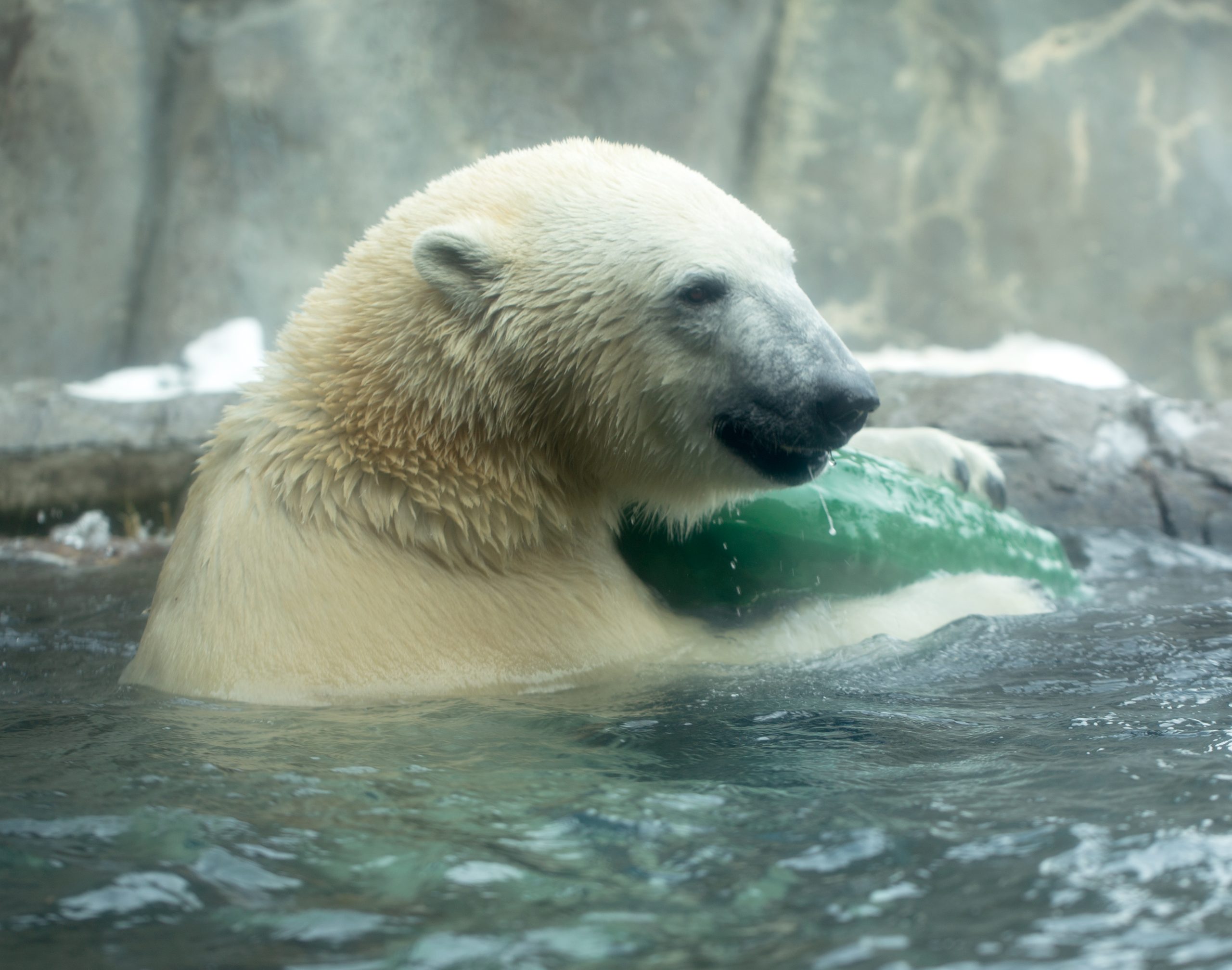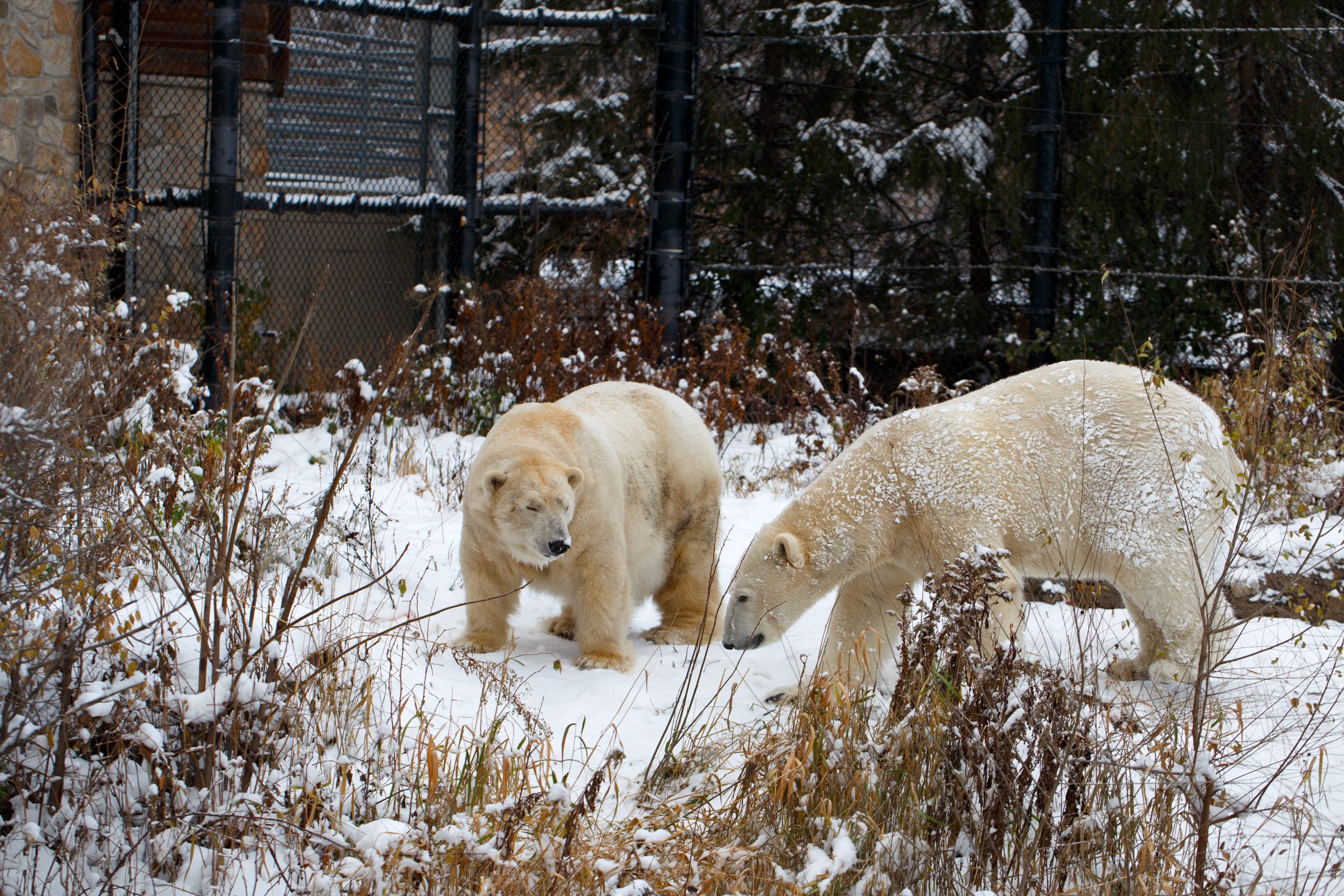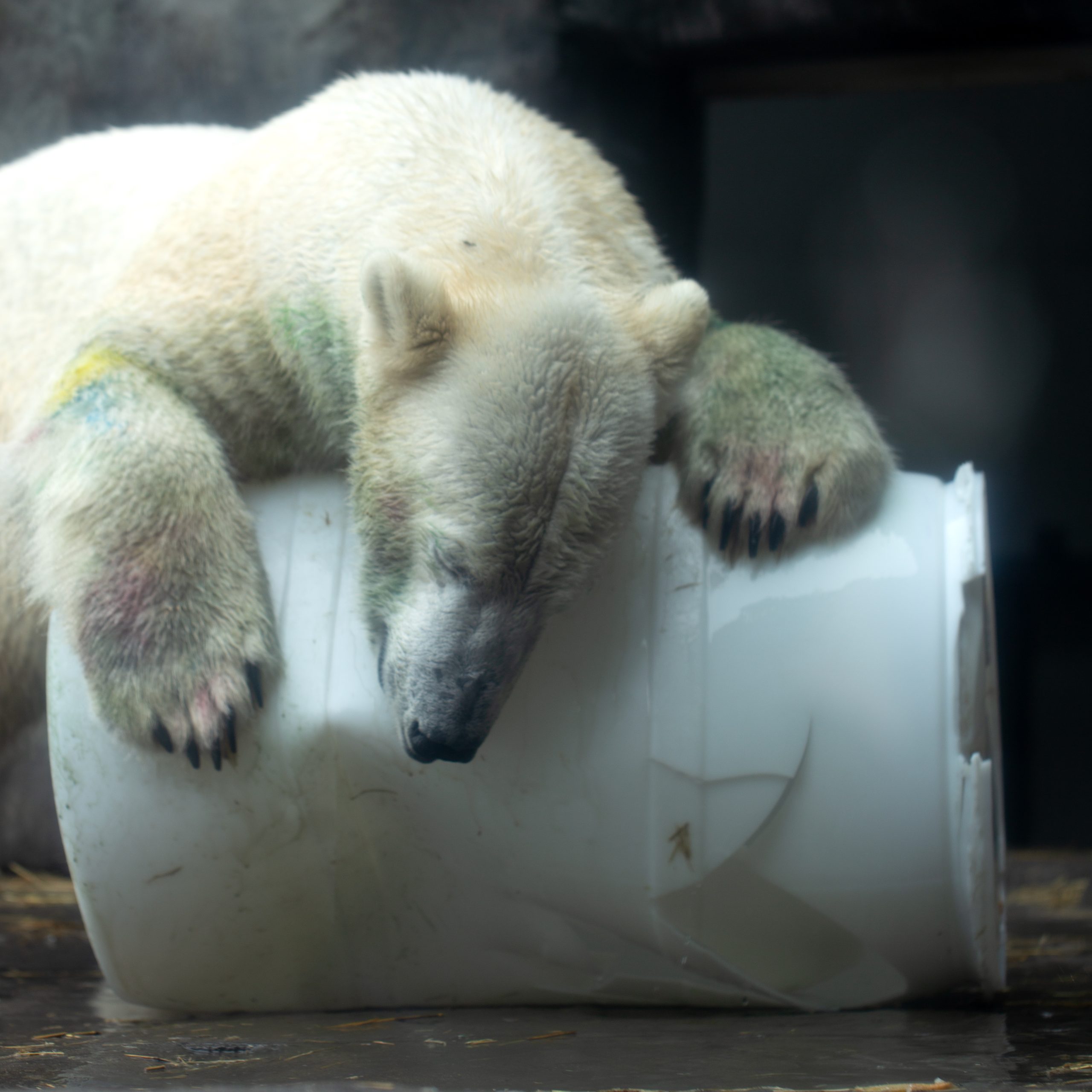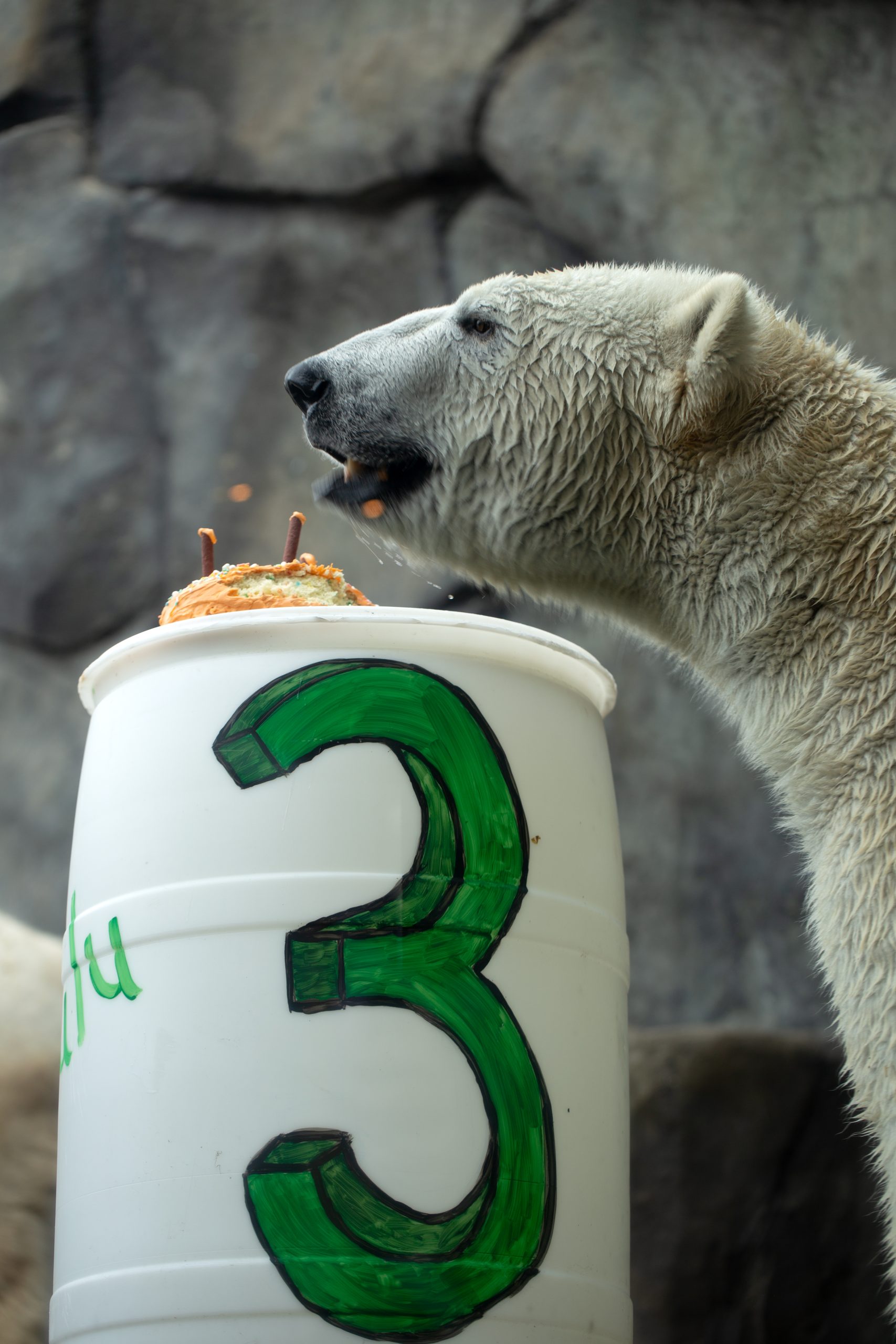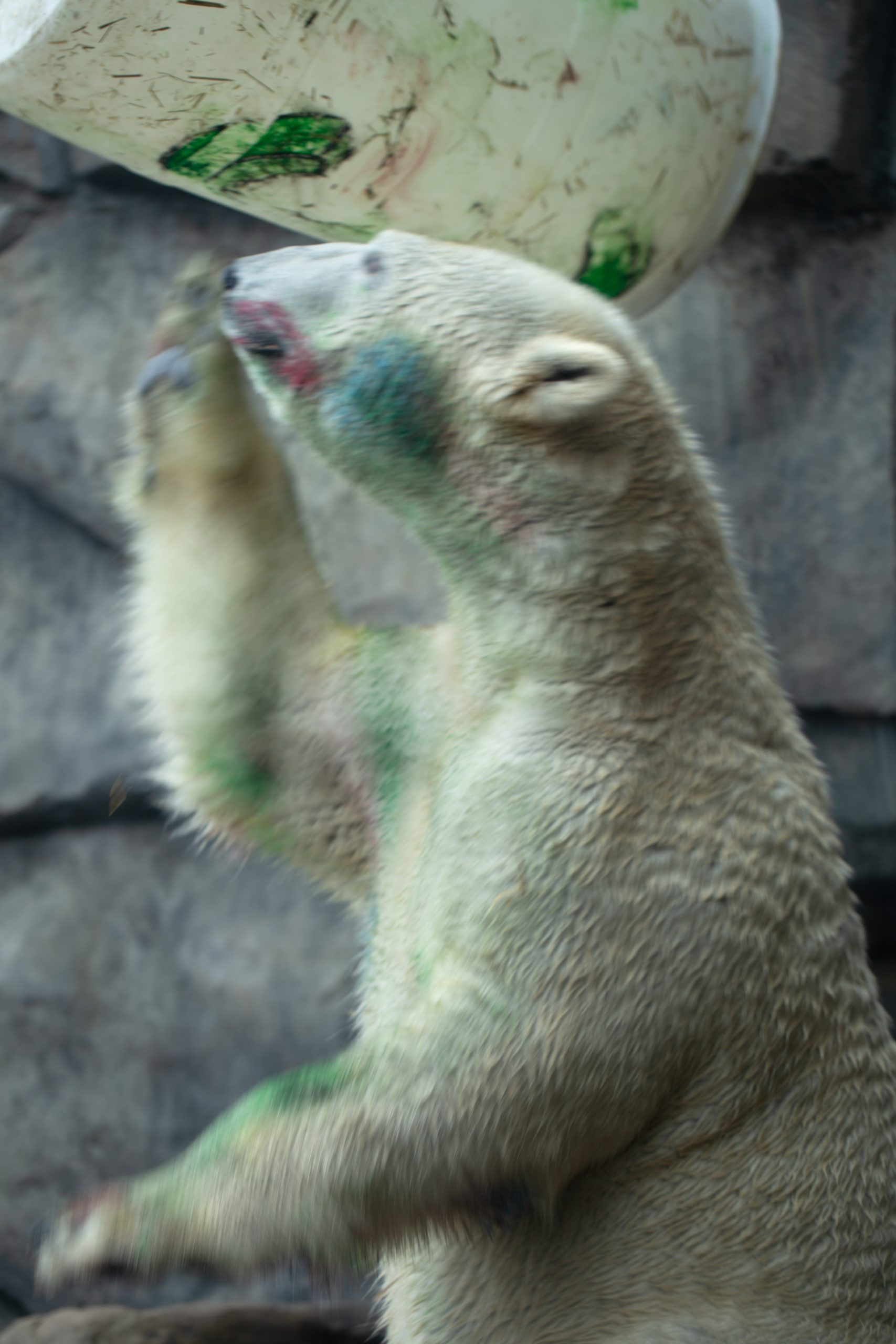Nearly a year in the making, the Marjorie McNeely Conservatory’s Spring Flower Show is finally in bloom
Since her arrival last year, Dr. Lisa Philander, the Marjorie McNeely Conservatory’s new horticultural curator, has been digging in to every corner of Como’s horticultural operations, from climbing ladders to prune the fig trees in the North Garden, to drawing up the design for this season’s Spring Flower Show.
Starting back in July 2022, Dr. Philander selected the flowers, bulbs and plants she wanted to see this season in the Sunken Garden. “That’s why there are so many hyacinth, because I just love hyacinth,” she says.
She also knew she wanted to incorporate several topiaries donated by her friend and master gardener Marge Hols, the long-time Pioneer Press gardening columnist, who passed away last summer. Hols was also a past president of the St. Paul Garden Club, whose members have been generous donors and volunteers of the Marjorie McNeely Conservatory over the years. “I love that we have her topiaries in the show, in her honor,” Dr. Philander says.
With a vibrant palette of chartreuse green, purple, pink and yellow, Dr. Philander also mixed grasses and giant allium around the beds surrounding the pool to resemble “a springtime meadow with bulbs popping up,” she says. “We’re just trying it out, but the hope is that they’ll bloom in succession, so there will be something new for visitors to see every day.”
The Marjorie McNeely Conservatory’s Spring Flower Show is free to the public and open every day, from 10 a.m. to 6 p.m., through April 30. Made possible, in part, by your contributions to Como Friends, the Spring Flower Show is the most anticipated and well-attended display of the year.
“Conserving resources is part of our mission at Como Friends, so we’re happy to support the beautiful flowers people will see this spring in the Sunken Garden, and to provide shoppers the opportunity to reuse the bulbs and make their gardens look great,” says Jackie Sticha, president of Como Friends.
Each year, Como grows about three times as many tulips as will fill the Sunken Garden, so that as each bloom peaks and fades, horticulturists can swap in a fresh flower. Once they’ve made their debut in the Sunken Garden, hundreds of bulbs are then recycled and sold each year at Como Friends’ Garden Safari Gifts for replanting in garden beds and backyards all over the Twin Cities. “Conserving resources is part of our mission at Como Friends, so we’re happy to support the beautiful flowers people will see this spring in the Sunken Garden, and to provide shoppers the opportunity to reuse the bulbs and make their gardens look great,” says Jackie Sticha, president of Como Friends. Be sure to follow Como Friends’ Facebook page for announcements about this frequent sell-out event.
Outstanding veterinary care can prolong the lives of animals like Daisy the giraffe. But for Como Zoo keepers, humane animal care can also make for heartbreaking decisions.
With more than a thousand animals of 215 different species in Como’s care, death is part of the natural life cycle at Como Zoo. Even so, recent months have felt especially challenging, as Como Zoo said goodbye to two iconic animals well known to and beloved by the public.
Last week, keepers made the difficult decision to humanely euthanize Daisy, a 23-year-old reticulated giraffe, who had been suffering from severe degenerative arthritis. A few months earlier, Como lost another beloved animal ambassador, 46-year-old orangutan Amanda, who was diagnosed with an inoperable abdominal mass that was causing chronic damage to her kidneys.
“Daisy was a strong, beautiful matriarch – quick to judge and slow to accept her human coworkers,” says Como Zoo senior keeper Jill Erzar. “She was a fierce and protective mother who would do anything to keep her calves safe. She was an extraordinary ambassador for giraffe, helping us connect visitors to her wild counterparts by telling her story.”
A fixture at Como Zoo, famous for her art work and her flair with textiles, Amanda the orangutan, who died at 46, was the quintessential animal ambassador, a gregarious great ape who helped to personalize nature while inspiring visitors to protect it.
Losses like this are hard on the whole zookeeping staff, says Erzar. “But being transparent about these events is an important way to tell the public about how much effort goes into life and death decisions about animal care,” she says, noting that there’s an even longer list of Como Zoo animals whose lives were saved or improved by major interventions over the last year. Below is a look at a few of them:
Dental Surgery for Tsar: A few years ago, Tsar the tiger went into cardiac arrest during a root canal and nearly died. “Dr. Fausto Bellezzo, our veterinarian at the University of Minnesota, jumped on him and did the most heroic CPR to bring him back,” says Erzar. “But we were very hesitant to immobilize him again.” When it became clear Tsar needed the procedure again in October, Como consulted with a team of tiger experts to help minimize the high risks of putting large cats under anesthesia, preparing for “every possible scenario we could imagine,” says Erzar. With 17 keepers and specialists assembled, this year’s procedure went “like clockwork,” and the 9-year-old tiger is back on the prowl.
Hormone Therapy for Forest: When they’re growing, reindeer antlers are covered in a complex vascular network called “velvet” that sheds as the antler hardens. But without the usual surge of male hormones required to boost the process, Forest’s antlers bled extensively, causing the castrated reindeer to collapse on exhibit last year. “Como vet tech Andrea Persson raced in and got a tourniquet on him right way,” says Erzar. This year, keepers found a much simpler solution—a short-term hormone implant that’s helped the reindeer develop and drop his antlers according to schedule.
Cataract Surgery for Gomez: One of the longest-lived spider monkeys at Como, 31-year-old Gomez was also one of its most recognizable, coming directly up the bay window of his habitat and shading his eyes to get a better look at visitors. “For decades, he had cataracts that were infringing on his vision, and that was his unique way of dealing with light sensitivity,” explains primate keeper Em Brunmeier. In March, Gomez had successful cataract surgery that will allow him to see well into his golden years. “We still see him shade his eyes at times, but it’s more of a reflex or a little salute at this point,” says Brunmeier.
Helping Jasper Navigate: Orphaned in the wild and brought to Como Zoo in 2018, mountain lions Jasper and Ruby have always stayed close together, and this year, a medical exam may have found the reason. “Jasper has progressive retinal atrophy, retinal tissue that either never forms or is not connected quite right or is lost over time,” says Erzar. Knowing more about his visual impairment has helped keepers develop a better plan for his care, which will involve keeping him outdoors where he’s most comfortable. “We are very lucky he has Ruby and they are close, because we do see her help him out,” Erzar says, adding that while his functional blindness won’t hurt his quality of life, it may help visitors feel more connected to the cougar. “When you see an animal that’s dealing with a challenge that a lot of humans face as well, it helps build that connection and that empathy about what humans and animals have in common.”
For the Marjorie McNeely Conservatory’s team of horticulturists, the Spring Flower Show is an act of love
Tulips have been gaining on roses as the favored flower of Valentine’s Day, a flower trend that Como horticulturist Bo Akinkuotu says is easy to understand. Not only are tulips said to signify true and perfect love, he says, “they also come in practically every color, and they give us all that first sign of spring that we all look forward to seeing.”
In keeping with decades of tradition, tulips will also be the star players in the Marjorie McNeely Conservatory’s Spring Flower Show, scheduled for March 25 through April 30. But getting nearly 10,000 bulbs to bloom on cue for the show’s four-week run requires a full year of tender loving care, especially from Akinkuotu, who is responsible for this year’s tulip crop. “This is my first time managing the tulips, so the pressure is really on,” he says. Here’s a look at how the Marjorie McNeely Conservatory’s horticultural staff makes it happen:
1). Planning for the Spring Flower Show happens nearly a year in advance, as the Conservatory staff take down the previous season’s show, study which plants performed best, and create a new design for the year ahead. While many bulbs can be recycled and reused, funding from Como Friends helps to keep every flower show feeling fresh, providing for the new varietals and exotic bulbs that winter-weary Minnesotans long to see every spring.
2). By fall, Como’s backstage growing space begins to fill with crates of spring bulbs, which are potted up in stages by Como’s horticultural staff and a team of community volunteers. The majority still come from the Netherlands, where more than 90 percent of the world’s tulips are farmed.
3). Thanksgiving Day is the unofficial deadline for getting up to 10,000 tulips and supporting players like daffodils, hyacinth, and ranunculus into pots and ready for winter. With their roots just formed, the spring bulb crop moves into a backstage cooler for up to four months. The Marjorie McNeely Conservatory’s climate control system—recently updated thanks to contributions to Como Friends—is critical to the process, creating the cold conditions that spark the flower formation within each bulb.
“Conserving resources is part of our mission at Como Friends, so we’re happy to support the beautiful flowers people will see this spring in the Sunken Garden, and to provide shoppers the opportunity to reuse the bulbs and make their gardens look great,” says Jackie Sticha, president of Como Friends.
4). The warm-up starts in early March, as horticulturists move each bulb back into the growing range, rising soil temperatures help the flowers to mature within the bulbs, with early flower stalks emerging in time for the show’s debut on March 25. “Getting the timing right here is critical,” says Akinkuotu, adding that with pricey plant material, “we want to get the biggest bang for our buck.” The chilly temps visitors may notice in the Sunken Garden help to keep the flowers at their peak for longer.
5). Each year, Como grows about three times as many tulips as will fill the Sunken Garden, so that as each bloom peaks and fades, horticulturists can swap in a fresh flower. Once they’ve made their debut in the Sunken Garden, hundreds of bulbs are then recycled and sold each year at Como Friends’ Garden Safari Gifts for replanting in garden beds and backyards all over the Twin Cities. “Conserving resources is part of our mission at Como Friends, so we’re happy to support the beautiful flowers people will see this spring in the Sunken Garden, and to provide shoppers the opportunity to reuse the bulbs and make their gardens look great,” says Jackie Sticha, president of Como Friends. Be sure to follow Como Friends’ Facebook page for announcements about this frequent sell-out event.
Your support helps connect Como Zoo’s gorillas to their cousins in central Africa
When Como visitors see bachelor gorillas Virgil, Jabir and Samson napping the day away in their indoor habitat at Gorilla Forest, they sometimes ask primate keeper Michelle Warren if their wild cousins in central Africa would be doing the same thing.
“The answer is definitely yes,” says Warren, who served as a volunteer with the Projet Gorille Fernan-Vaz, a grassroots gorilla preservation initiative in Gabon back in 2019. “One of the big take-aways of my time working with gorillas in their natural habitat is that they really do spend their days eating, resting and sleeping,” she says. “It was cool to see that our gorillas are doing just what these wild gorillas would be doing. It might look a little different here at Como Zoo than it does in central Africa, but they’re basically behaving in the same way.”
Enhancing Como Zoo keepers’ first-hand experience and personal insights about animal behavior was one of the goals of Conservation Champions, a program funded by donors to Como Friends that has helped send Como keepers, educators and horticulturalists to assist with real-life conservation efforts around the world since 2017. From tracking snow leopards in Kyrgyzstan, to rehabilitating injured and orphaned penguins in South Africa, to saving sloths in Costa Rica, the Conservation Champions Program has also helped Como staff to build a network of new professional connections within the world of wildlife conservation.
While pandemic precautions put a pause on international travel plans for the past two years, the Conservation Champions program has continued to provide support for conservation fieldwork, with a variety of small grants to support partners that Como staff have built connections with. One such grantee is Projet Gorille Fernan-Vaz, which recently received a $2,000 grant from Como Friends for help with the construction of an enclosure that will allow two orphaned female gorillas rescued from poachers in October 2020 to be integrated with the 9 gorillas already living on Rehabilitation Island. The organization has been posting frequent progress reports about the effort on their Facebook page this winter. Their goal is to introduce the pair—Niout and Maya—to a stable group of nine gorillas that now live at Projet Gorille Fernan-Vaz’s Rehabilitation Island.
“I love being able to talk about my time on the ground in Africa working with such a dedicated team of gorilla supporters, and connecting it full circle back to the conservation messages we give to visitors here at Como,” says Warren. “I’m proud to say we’re supporting such an incredible project, and hopefully helping them achieve their ultimate goal of possibly releasing this group of soon-to-be eleven gorillas back into their wild habitat.”
It’s cold outside, but at the Marjorie McNeely Conservatory, winter is in full bloom. From the Winter Carnival Orchid Show coming January 28 and 29, to the colorful Winter Flower Show running through March 19, Como is here to provide a colorful counterpunch to the mid-winter blahs.
Pink and purple are now the palette for this season’s Sunken Garden flower show. With cyclamen, azaleas, camellias, veltheimia, cineraria and foxgloves, Como’s Winter Flower Show is the beautiful backdrop for a workday diversion, a fun family outing, or a romantic Valentine’s date.
All of the interior gardens of the Marjorie McNeely Conservatory will also be aglow on February 23 for the Como Friends fundraiser, Bouquets. This intimate evening event features elegant wine, food and beer stations arrayed throughout Como’s Visitor Center and the Marjorie McNeely Conservatory, giving Como Friends supporters a rare after-hours glimpse of tropical greenery, soaring palms, and the Sunken Garden.
A destination that’s delighted more than five generations of Minnesota families, coming to Como Park Zoo & Conservatory is a memory that many of us share. While visionaries and volunteers have all had a hand in shaping Como Park Zoo & Conservatory over the decades, the most consistent force behind Como’s longevity has been community support from people like you. As a supporter of Como Friends, you’re helping to carry on a century-long legacy of advocacy and care that’s made Como Park Zoo & Conservatory the most visited cultural institution in the state of Minnesota. Here’s a look at some of the highlights of Como’s first 150 years:
COMO’S EARLY DAYS
1870s | Renowned landscape architect Horace Cleveland gives a speech at the University of Minnesota in 1873, urging cities to set aside land for public parks that would “provide working people with a physical space that would be a respite from the grim realities of the Industrial Era.” With a $100,000 private gift, the city of St. Paul purchases three hundred acres on the shores of Lake Como, a one-time potato farm renamed for the Italian vacation destination by a clever real estate developer.
1880s | The city of St. Paul hires Cleveland to develop plans for a public landscape park, and forms the first St. Paul Board of Park Commissioners. To bring his vision to life, Cleveland invites Frederick Nussbaumer, a German landscape designer from London’s Royal Botanical Garden at Kew to join him in St. Paul.
1890s | Nussbaumer is elevated to superintendent of the St. Paul parks, where he spends the next 30 years creating the parkways, pedestrian paths and public gardens that we know today. As a series of animals are donated to the park beginning in 1897, Nussbaumer also designs Como’s first animal enclosures for deer, elk, foxes and even buffalo.
Exceptional floriculture displays like Gates Ajar, the Banana Walk, and the Victorian Water Gardens are Nussbaumer’s forte, drawing visitors from across the region. One writer of the era hailed Nussbaumer for turning Como from “a worse than useless mud hole” into the “pride of St. Paul.”
1900s | Como’s Japanese garden tradition has roots that go back more than a century to when an early parks board commissioner, charmed by the Japanese garden at the St. Louis World’s Fair, purchased plants, shrubs and sculpture from the display for transplanting on the shore of Como’s Cozy Lake. Several of the stone lanterns seen in today’s Charlotte Partridge Ordway Japanese Garden came from that original donation.
1910s | With a growing array of greenhouses at Como, many in need of repair, Nussbaumer proposes building a single Victorian glass house Conservatory, similar to the Palm House at Kew Gardens. Built from a prefabricated kit, the 60,000 square foot Conservatory opens in 1915 with a total cost of $65,000.
1920s | Como’s animal and plant collections continue to grow, with the donation of an American black bear, and new horticultural additions including the Excedra and the Frog Pond, both made possible by private gifts to Como. New parks superintendent George Nason oversees the creation of the new Sunken Garden, which begins to host rotating flower shows starting in 1927.
1930s | The New Deal ushers in an expansive new era at Como, with a series of buildings created by the Works Progress Administration, including the Old Barn and the former Monkey Island. Scores of new animals also arrive thanks to donations from the St. Paul Zoological Society and the closure of the Longfellow Gardens Zoo in Minneapolis. Celebrity animal collector Frank Buck, the star of such films as “Bring ‘Em Back Alive,” is on hand for the 1937 dedication of the Main Zoo Building–now the home of Como Friends’ offices.
1940s | After World War II, Como reemerges as an entertainment destination for families, with pony rides offered in the park, and the launch of the amusement park that we now know as Como Town.
MID-CENTURY MOVEMENT
1950s | In 1956, the arrival of “Archie Brand’s Seal Show,” arranged by businessman Stanley Hubbard, turns Sparky into an instant celebrity. Meanwhile, Como’s first zoo director, John Fletcher, makes room for gorillas, orangutans and Siberian tigers, and the giant Galapagos tortoise a whole generation of children will know as “Toby.”
1960s | As the Twin Cities explore the potential for developing a major metropolitan zoo, a 1966 Citizen’s League report concludes that Como lacks the acreage and resources to serve the state’s growing population. Como’s community disagrees, spawning such support groups as the Citizens Volunteer Committee, the Como Zoo Docent Association, and the Metropolitan Zoo Emergency Committee, all dedicated to keeping Como open for all.
Caption: An agave Americana, or century plant, bursts into bloom in 1963, with shoots that reach so high the Conservatory removes a section of the roof to give it room to grow.
1970s | Como’s Conservatory is added to the National Register of Historic Places, while the Minnesota Legislature approves $8.5 million toward Como’s redevelopment. Como Zoological Society incorporates as a nonprofit support group for Como in 1974. Nagasaki, Japan presents St. Paul, its sister city, with a garden design created by ninth generation landscape designer Masami Matsuda and the Ordway family provides the funding to build it in 1979.
Caption: After giving countless piggy-back rides, Toby the tortoise begins a well-earned retirement at the Honolulu Zoo in 1974 where he resides today.
1980s | Como Zoo earns its first accreditation from the Association of Zoos and Aquariums, and Como begins a new era of construction, opening the Large Cat exhibit, the Aquatic Animal Building, the African Hoofstock habitat, and a remodeled Monkey Island into Seal Island.
1990s | As Como celebrates its 100th anniversary in 1997, supporters focus on strategies to keep Como Zoo and the Conservatory growing strong. City leaders and community donors agree to unite the administrative operations of the zoo and conservatory, and to combine competing nonprofit support groups into a single nonprofit fundraising partner, the Como Zoo and Conservatory Society.
COMO FRIENDS: TRANSFORMING COMO FOR THE 21st CENTURY
2000 | The Como Zoo and Conservatory Society launches a $32.5 million capital campaign to build a new Visitor Center that will connect the Zoo and Conservatory, combine operations under one roof, and create new classroom space to serve Como’s one million annual visitors.
2001 | Private funding from the Como Zoo and Conservatory Society helps Como Zoo start a new operant conditioning training program for seals and sea lions, using positive reinforcement to encourage animals to cooperate in their own health care. The training program is so successful, it expands to include hundreds of animals at Como Zoo, from the western lowland gorillas to the Galapagos tortoises.
2002 | The Marjorie McNeely Conservatory gets a new name and a generous endowment fund created by the McNeely family. In her lifetime, Marjorie McNeely was a president of the St. Paul Garden Club and a long-time supporter of the historic Como Conservatory.
2003 | The first major capital campaign for Como reaches its $32.5 million goal with nearly $8 million in private sector contributions secured by the Como Zoo and Conservatory Society.
2004 | New construction reshapes Como’s historic campus, with a new behind-the-scenes Animal Support Building, and a renovation that turns Como’s WPA-era zoo building from animal habitat to office space for Como’s campus leaders.
2005 | Como unveils the new Visitor Center, uniting the historic Zoo and Conservatory with a single entrance and a shared mission.
2006 | The hang-out home of Chloe the sloth, Tropical Encounters opens to the public. An immersive rainforest habitat teeming with tropical plants, birds, fish and reptiles, Tropical Encounters is also the first habitat to combine the shared strengths of Como’s keepers and horticulturists.
2007 | New classroom space created by Como’s Visitor Center helps on-site education programs to grow more than six-fold. With summer camps, school group programs and other offerings, Como continues its evolution as a conservation classroom for families and field trip groups.
2008 | Como Zoo and Conservatory Society changes its name to Como Friends, and launches a second major campaign to build a new wing to the Conservatory and a reimagined polar bear habitat at Como Zoo. Always a refuge during challenging times, Como will see its audience increase dramatically as visitors turn to Como’s free admission during the recession. Annual funds from private contributions to Como Friends also help to sustain a growing number of Como traditions, such as the five rotating flower shows in the Sunken Garden.
2009 | Support from Como Friends pays for growing partnerships between Como Zoo and conservation initiatives in the field, including orangutan survival projects in southeast Asia and amphibian preservation efforts for the Wyoming toad.
2010 | A new and improved Polar Bear Odyssey opens to the public, spurring record-setting attendance of more than two million annual visitors. Como Friends also advocates to preserve $11 million in public funding for Gorilla Forest when lawmakers threaten to revoke funding.
2011 | Como Friends secures the $2.8 million necessary to start construction on The Ordway Gardens, a new horticultural wing to showcase Como’s exceptional bonsai collection and improve visitor access to the Charlotte Partridge Ordway Japanese Garden.
2012 | Como Friends’ fundraiser ZooBoo celebrates its 25th anniversary, becoming one of the longest-running benefits for any Twin Cities nonprofit.
2013 | In preparation for the new Ordway Gardens wing, Como Friends helps restore the Charlotte Partridge Ordway Japanese Garden to better reflect the original intent of designer Masami Matsuda by supporting the work of international garden consultant John Powell.
2014 | To continue the creation of more naturalistic habitats at Como Zoo, Como Friends provides funding for a make-over for the African Hoofstock building, and a design plan for a remodeled seal and sea lion exhibit. Thanks to generous supporters and a successful strategic plan, Como Friends’ fundraising capacity is up by more than 50 percent since 2009.
2015 | To celebrate the 100th anniversary of the Marjorie McNeely Conservatory, Como Friends leverages private contributions to match a Minnesota Legacy Fund gift toward the Centennial Garden, a new landscape garden next to Como’s Visitor Center. Como Friends supporters also create a $1 million endowment fund to ensure the long-term horticultural care of the Charlotte Partridge Ordway Japanese Garden.
2016 | Creating memorable, meaningful, close-up encounters with the natural world is one of the principles behind the new Giraffe Feeding Station. Funded in part by contributions to Como Friends, this interactive learning feature now brings thousands of Como visitors eye-to-eye with the gentle giants in Como’s giraffe herd.
2017 | After 30 years, Como Friends’ ZooBoo fundraiser comes to a close to make way for construction of the new Como Harbor habitat, a $21 million seals and sea lions habitat in the heart of Como.
2018 | Como Friends launches Conservation Champions, a program that allows Como’s keepers, horticulturists and education specialists to bring their expertise to conservation efforts in the field. From saving orphaned seal pups, to tracking snow leopards in the wild, these real-life experiences also help to enrich Como’s conservation education programs.
2019 | Como Friends celebrates its 20th year as Como Park Zoo and Conservatory’s nonprofit fundraising partner, having contributed more than $42.5 million to Como in private investments for improvements large and small. Thanks to your support for Como Friends, Como remains one of a few major metro area zoos or botanical gardens that is still free to every visitor.
2020 | When COVID-19 forces a statewide shut-down, Como Friends increases its annual contribution to Como Park Zoo and Conservatory, to ensure stable operations and essential care of Como’s extraordinary animals and plants. Private support also helps complete the new Huelsmann Meditative Garden, the tranquil karesansui garden that now greets visitors to The Ordway Gardens.
2021 | With a splashy new amphitheater, saltwater pools, and underwater viewing areas, Como Harbor opens to rave reviews. The state of the art habitat, supported by public funding and private contributions to Como Friends, is now home to three species of pinnipeds, harbor seals, California sea lions and Atlantic gray seals.
2022 | The new SPIRE Sparky Show splashes down at Como Harbor, while contributions to Como Friends help to fund a major renovation of the Aquatic Animals Building. Como Friends also launched Como Quest, a new conservation-focused fundraiser where multigenerational teams explore Como’s amazing animal and plant collections. Thanks to your generous support, Como Park Zoo and Conservatory has the resources to resume traditional operations, welcoming more than 1.8 million visitors a year to discover the wonders of our natural world.
Have you heard Mumford the lion chuff and roar at the start of a summer day? Have you strolled through the elegant new winter-white Holiday Flower Show? What did your kids think of the splashy new SPIRE Sparky Show?
If you’re like most visitors, you made more than one trip to Como in the past year, coming and going with the seasons. An urban oasis that belongs to us all, Como Park Zoo and Conservatory is always the perfect destination for a day brightener–whether you’ve only got time for a Lil Explorers program before a toddler’s nap, or you’ve got the whole day to smell the roses and meet the animals.
“This was a year when Como’s audience was ready to rediscover Como Zoo and the Marjorie McNeely Conservatory all over again,” says Jackie Sticha, president of Como Friends. More than 1 million visitors made a free reservation to visit Como in 2022, a 20 percent increase since the year before. And thanks to your contributions to Como Friends, nearly every corner of Como saw the benefits of private support, with expanded education programs, accessibility improvements, and equitable access for all. “We also saw an extraordinary level of generosity from our Como Friends donors this year, who see the need that Como fills in our community, and who understand the value of having a free-admission destination that everyone can enjoy.”
Here’s a look at how Como Friends invested more than $1.8 million of your contributions in special projects, improvements and daily operations at Minnesota’s most visited cultural institution:
Equity: While inflation soared, the price of visiting Como Park Zoo and Conservatory never wavered. One of only a few major metro zoos and botanical gardens in the country that’s still completely free to visitors, Como Park Zoo and Conservatory continues to be one of Minnesota’s most accessible institutions and one of the most visited destinations in the whole state. Not only do your contributions help to keep Como admission-free every day of the year, Como Friends’ support also helps to pay for the improvements that make the campus inviting and accessible for all. From big improvements like the renovation of Como Zoo’s aquatics building, to smaller updates like the new elevators in the Sunken Garden and stroller-friendly doors at Polar Bear Odyssey, your contributions help enhance the experience for all of our visitors.
Education: Como’s education programs roared back to life in 2022, with fun programs like Lil Explorers, the early childhood program made possible by the Minnesota Legacy Amendment and your contributions to Como Friends. During the summer, over 30,000 more children and adults came to Como than the year before, drawn to fun outdoor experiences like the SPIRE Sparky Show, making waves every day in the fantastic new Como Harbor habitat. During the school year, virtual learning programs like Como Connections have helped deliver engaging conservation curriculum to classrooms around the state, and to kids studying at home. Your support for Como Friends made it possible to do even more for our school partners, expanding free online curriculum for elementary and middle school learners, and welcoming back busloads of field trip groups through Como’s free online reservation system.
Excellence: How do you get three polar bears to play nice together? Where do you get the 10,000 tulip bulbs it takes to put on the Spring Flower show? How do you persuade an orangutan to volunteer to get her flu shot? Como Park Zoo and Conservatory’s exceptional staff of keepers and horticulturists know the answers to all of those questions and more, providing best in class care to animals and plants every day. In 2022, your support for Como Friends helped to elevate everything that happens at Como, from the bulbs and plant material that make the Sunken Garden Minnesota’s most beautiful room, to the behind-the-scenes partnership with the University of Minnesota’s veterinary school, that keeps all of Como Zoo’s animals healthy and curious. Your support also helped to provide for professional development, conservation training, and specialized equipment that helps Como’s keepers and horticulturists do their jobs better, from a new blood pressure and vitals monitor for Como Zoo’s animals, to the portable water tanks that keep all of Como’s gardens looking great.
Thanks to your support for Como Friends, Como Park Zoo and Conservatory has the resources to be the best it can be today—and even better tomorrow!
We look forward to seeing you again at Como in 2023!
Polar bears are loners by nature, but for most of his life, Como Zoo’s Neil was part of a permanent two-some with twin brother Buzz.
When Buzz died two years ago at the age of 24, zookeepers wondered whether Neil—already one of the oldest living polar bears in North America—would thrive. But if you’ve noticed the 1,000-pound bear frolicking in Polar Bear Odyssey’s deep pool this year, there’s no question that Neil seems to be enjoying his new life.
“Neil is doing just great,” says keeper Kristin Nelson. “He actually seems like a much younger bear than he used to, like he’s gotten some years back. He’s so much more lively now.”
A good part of the credit goes to Neil’s two new roommates, Nan and Kulu, and to the Como Zoo aquatics keepers whose carefully orchestrated introductions backstage in Polar Bear Odyssey have helped to keep all three bears calm and healthy through what could have been a stressful transition time. “They’ve all become such good companions that they’re a lot of fun to watch,” says Nelson.
The process started back in March 2021, when Como Zoo welcomed Nan, short for Nanuyaak, 28, a female bear originally orphaned in the wild near Barrow, Alaska. A seasoned traveler who’d lived in zoos from Toledo to Tacoma, Nan had no problem making herself at home in Polar Bear Odyssey, where she and Neil were soon snuggling together (Nan and Neil will be celebrating their birthdays on Friday, December 9).
Roommate relations got more complicated in November 2021 with the arrival of Kulu, a young bear who celebrated his third birthday on November 28. “When Kulu first arrived, we honestly weren’t sure we’d ever be able to put him in with Neil. Even though Neil is bigger, Kulu is a young, intact male and we just didn’t want to risk Neil getting hurt,” Nelson says. But over time, their behind-the-scenes introductions went so well that keepers were confident all three bears could get along together in the same habitat.
“When we first let them go together, we created a plan that would allow us to close doors and separate them if we needed to, but it was never necessary,” Nelson says. “They’ll make noises and growl, but they’ve never been aggressive.”
Instead, they’ve created a bond that looks a little like a storybook family—a mama bear and a papa bear watching over a baby bear who can be quite demanding. “Kulu does not like being alone, and he likes getting a lot of attention from Nan and Neil,” Nelson says. “When all three bears are outside in the snow, Kulu is in such a good mood. But you can always tell if the other bears don’t give him enough attention.”
VISITOR TIP: While polar bears are built to withstand sub zero temperatures, Neil, Nan and Kulu much prefer napping in their cozy straw beds behind the scenes at Polar Bear Odyssey. During the short days of winter, the best time to see the bears is near opening time at 10 a.m. when they explore their habitats, sniffing out such favorite treats as sweet potatoes and carrots. Make a reservation.
